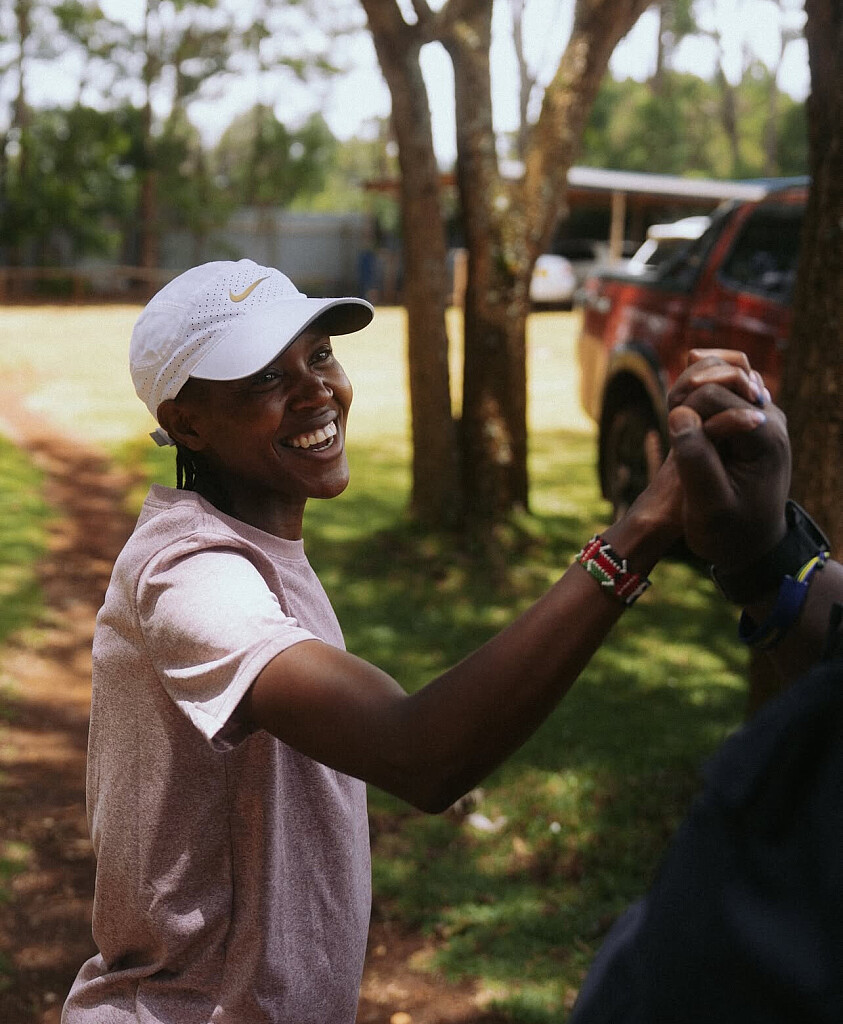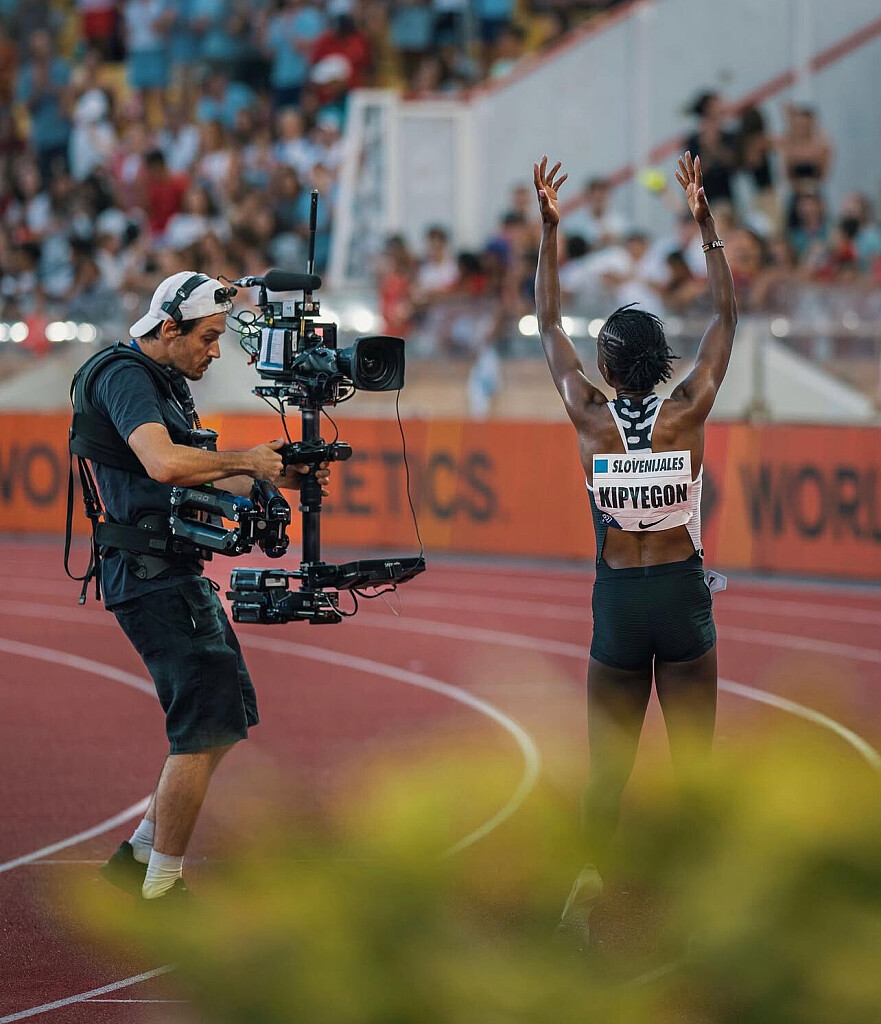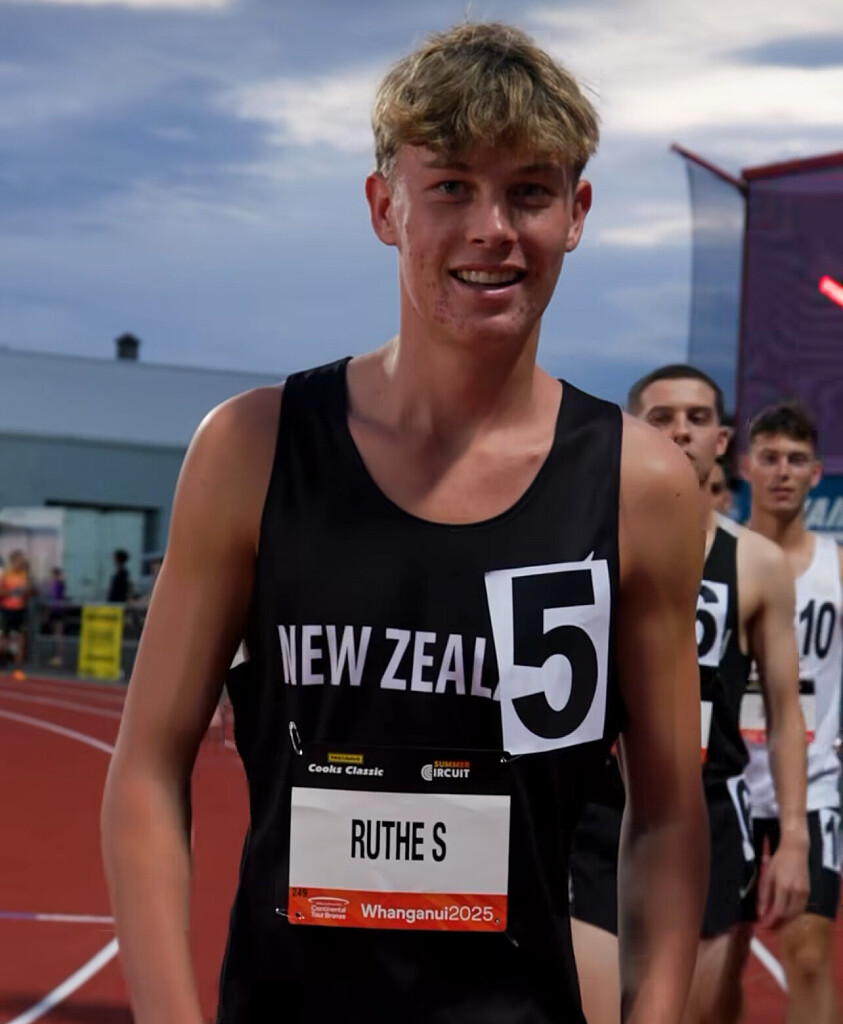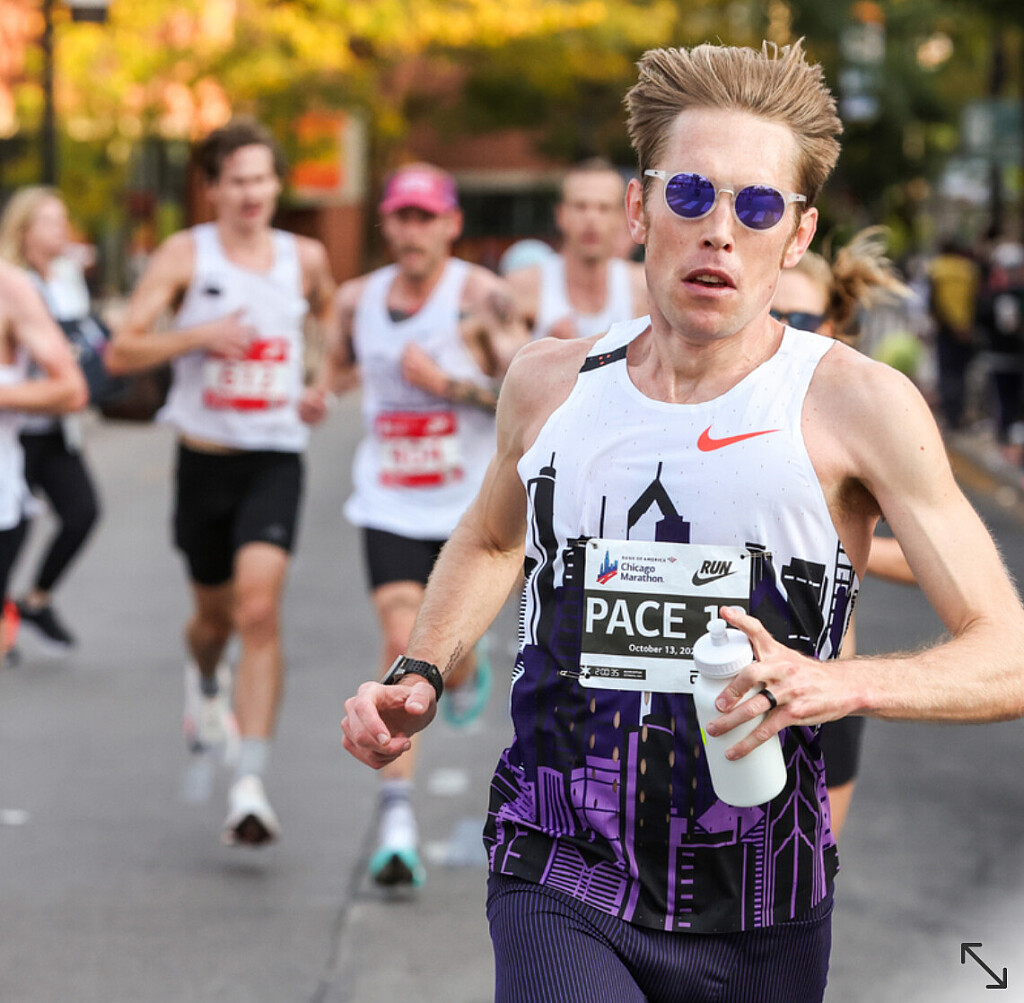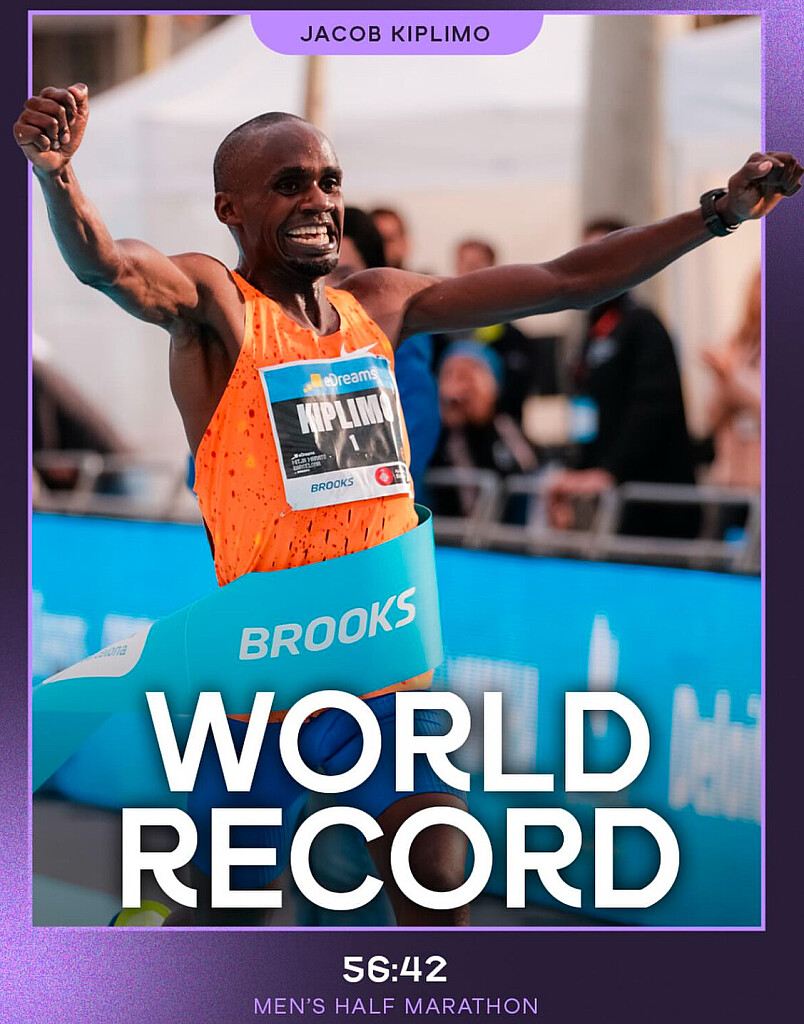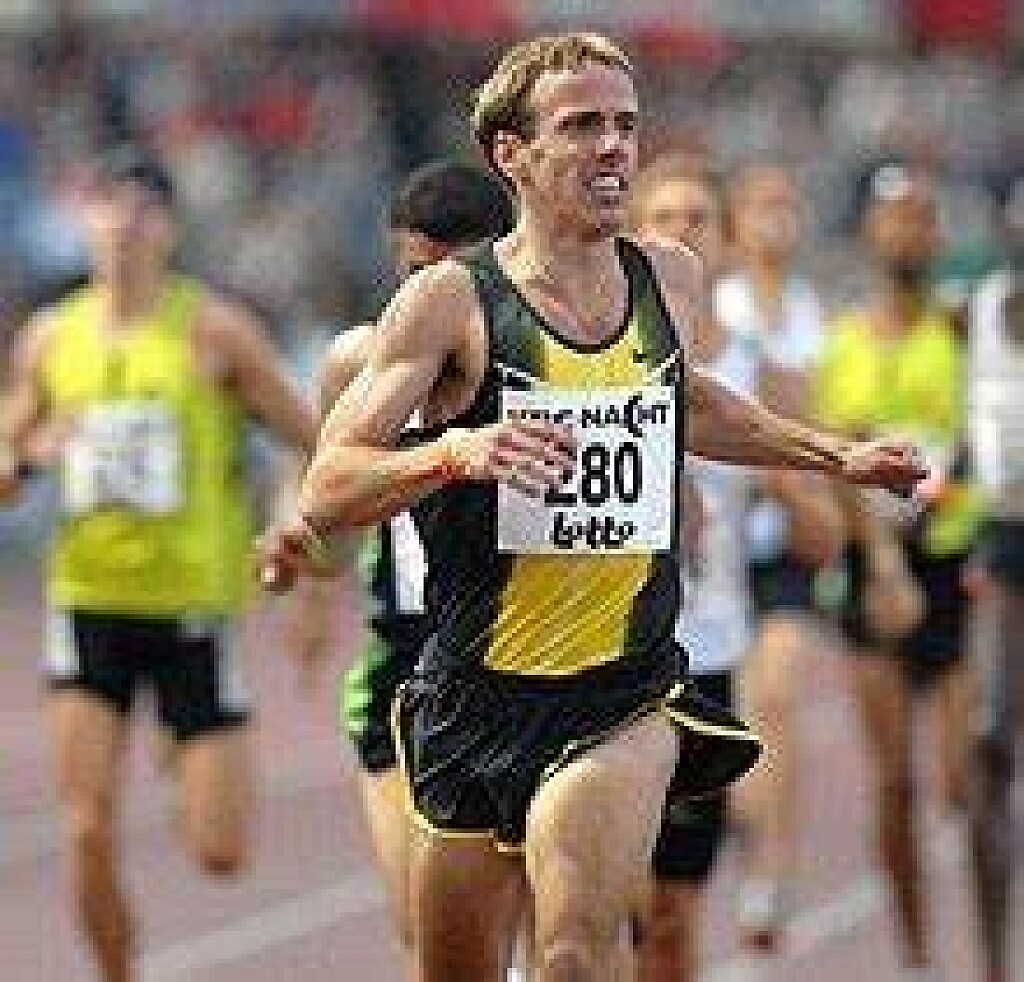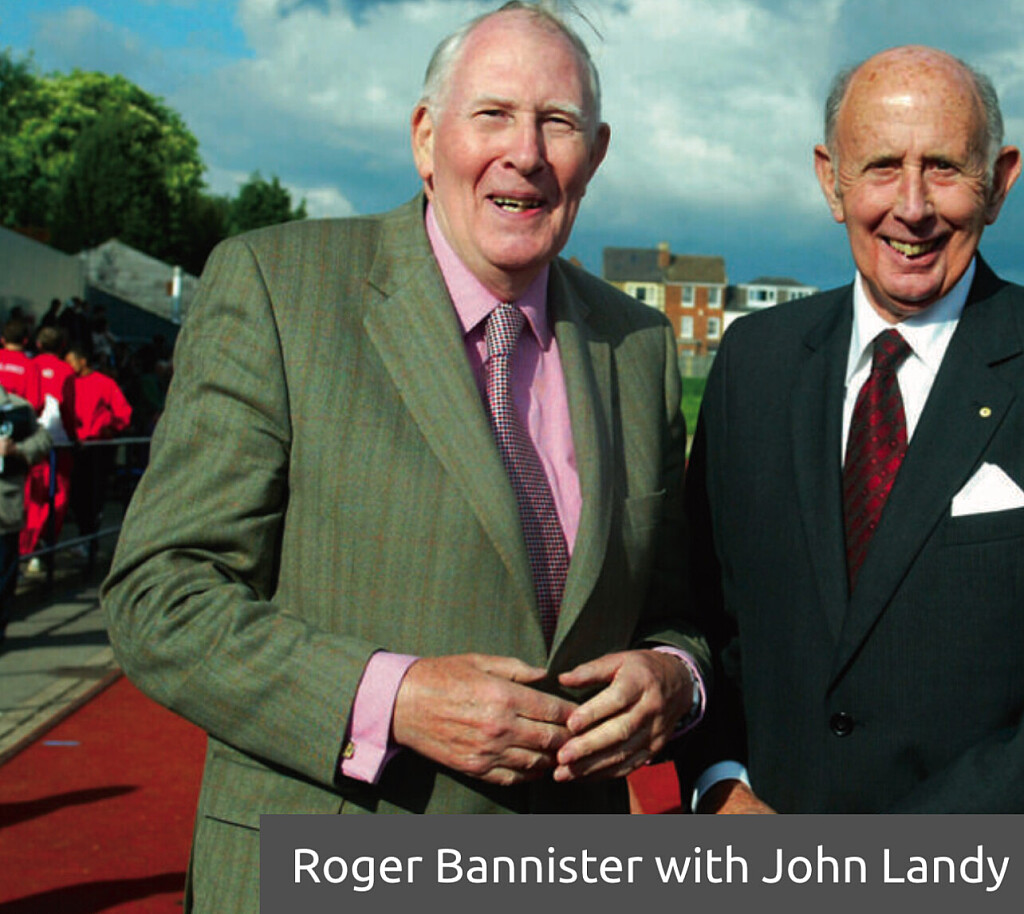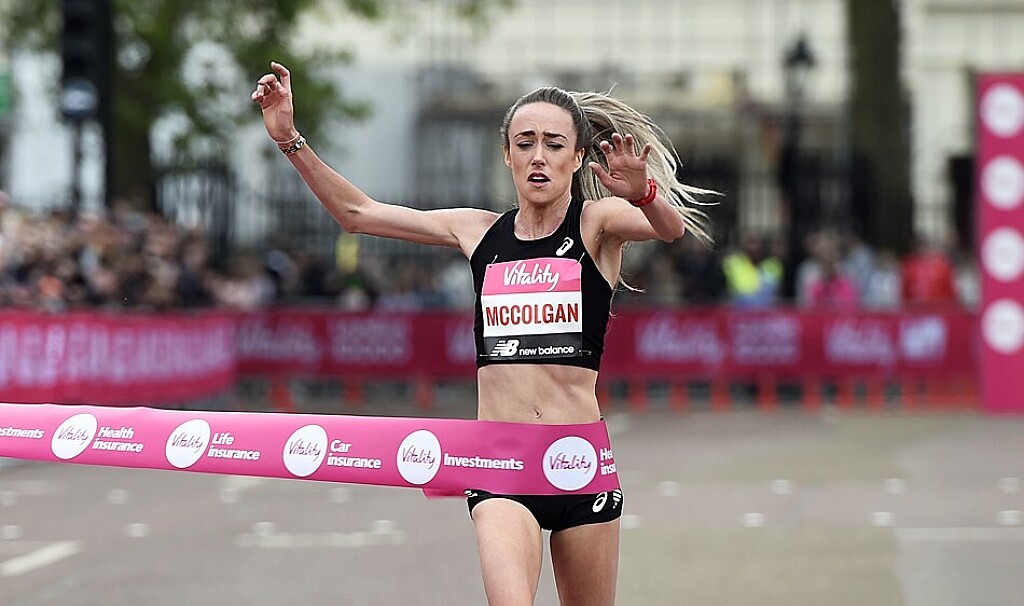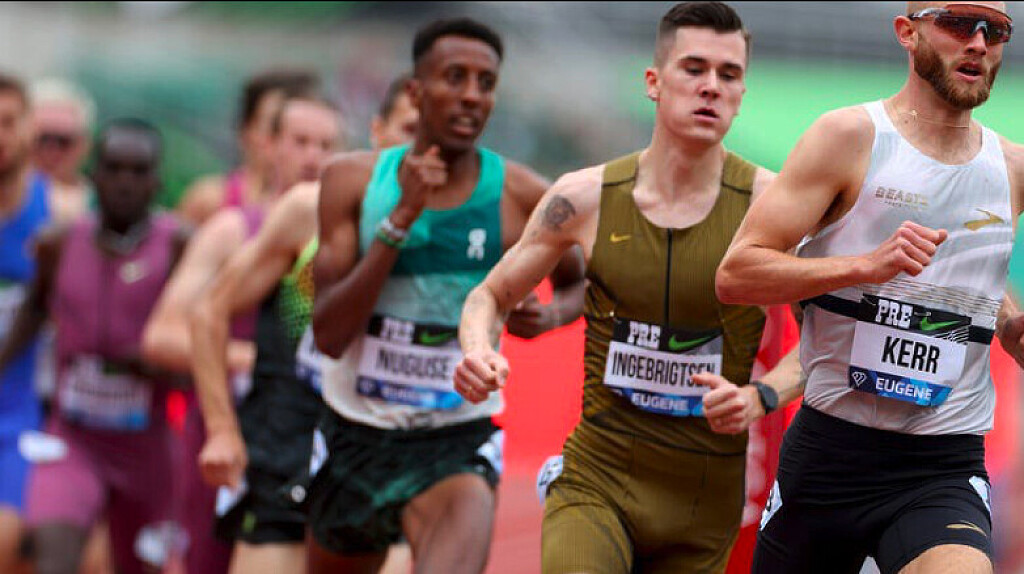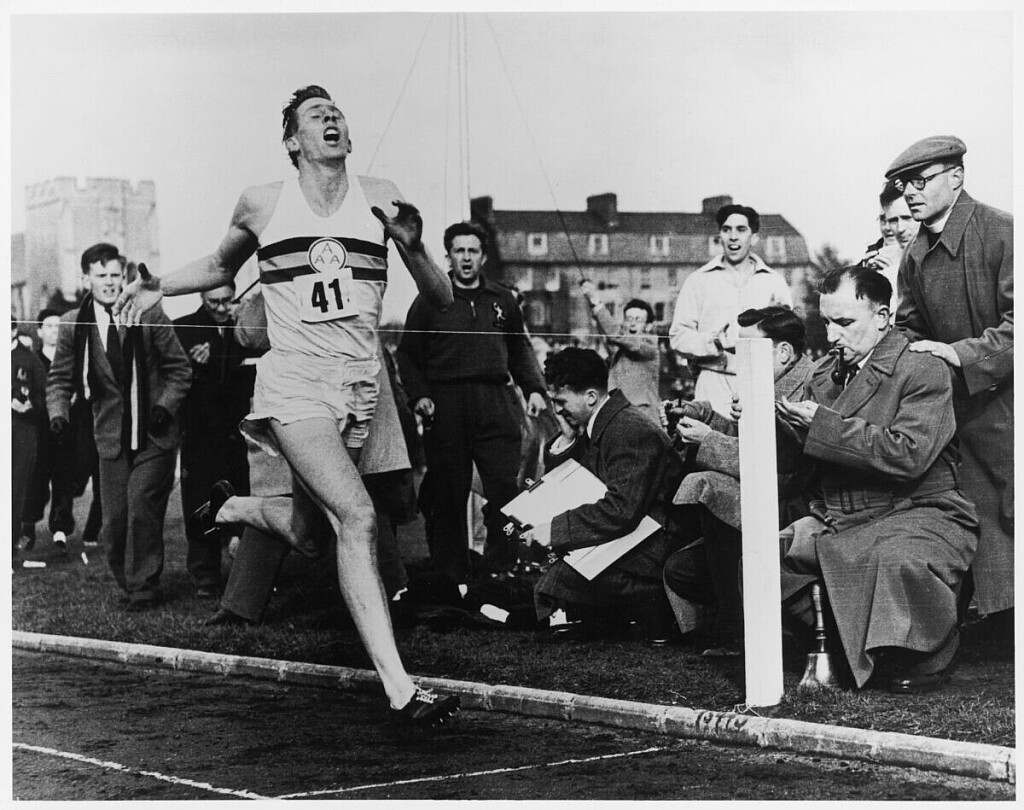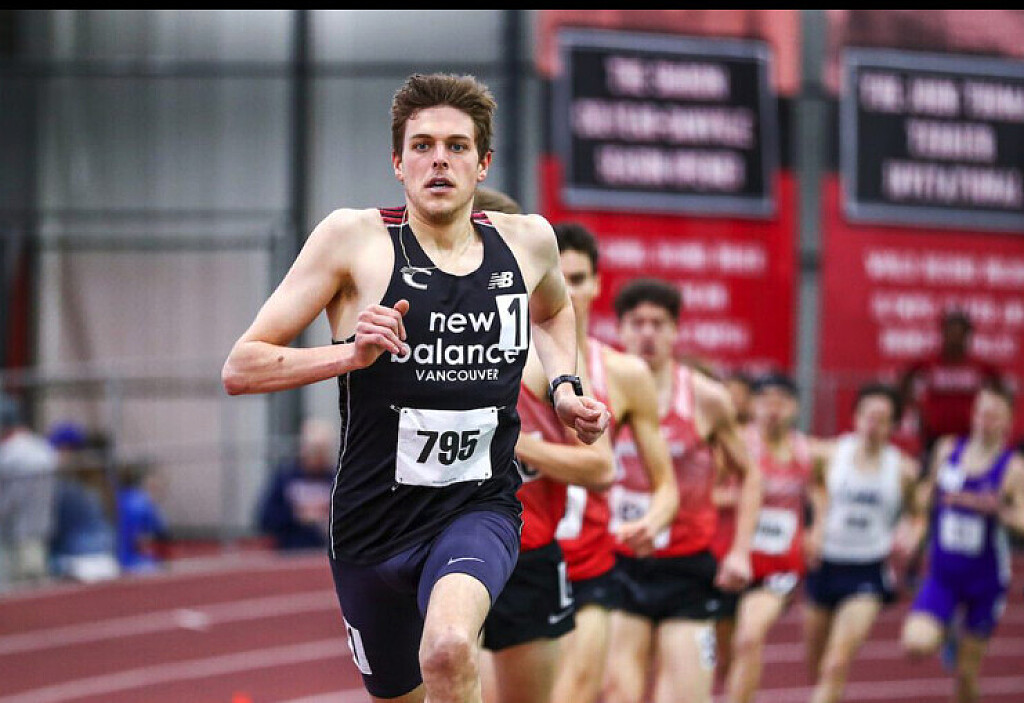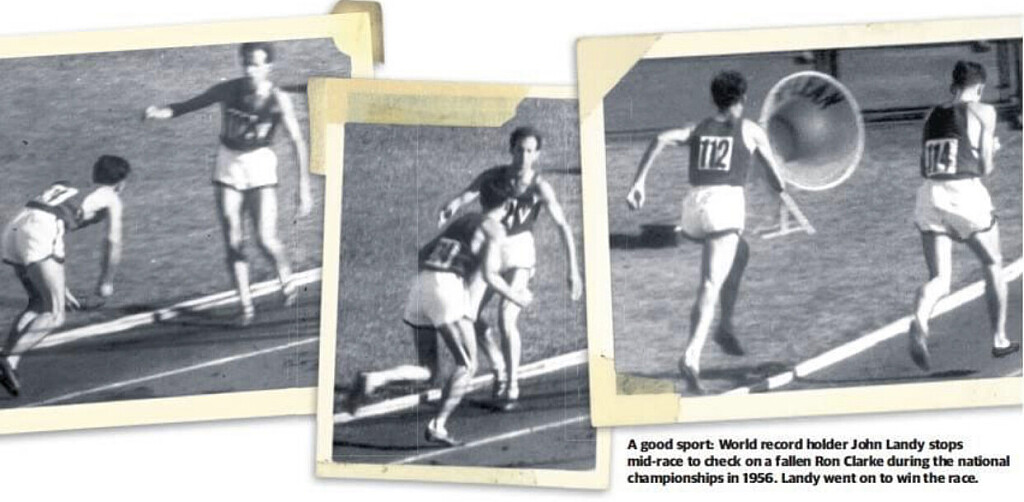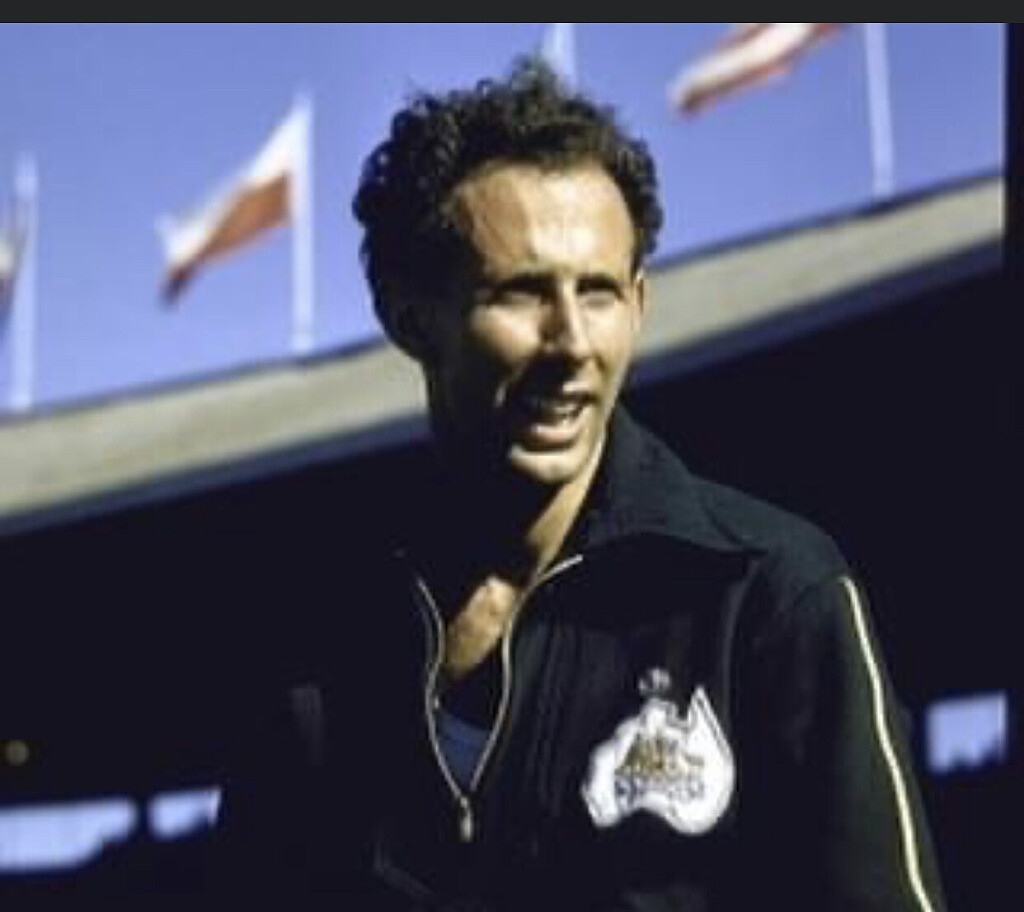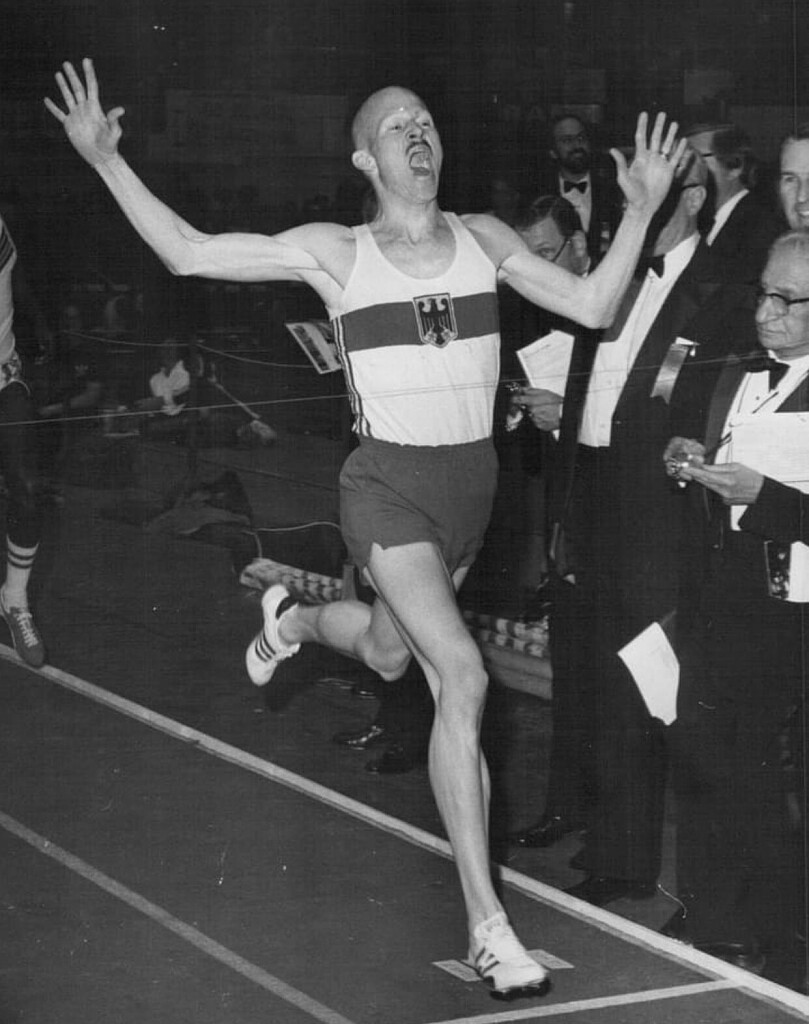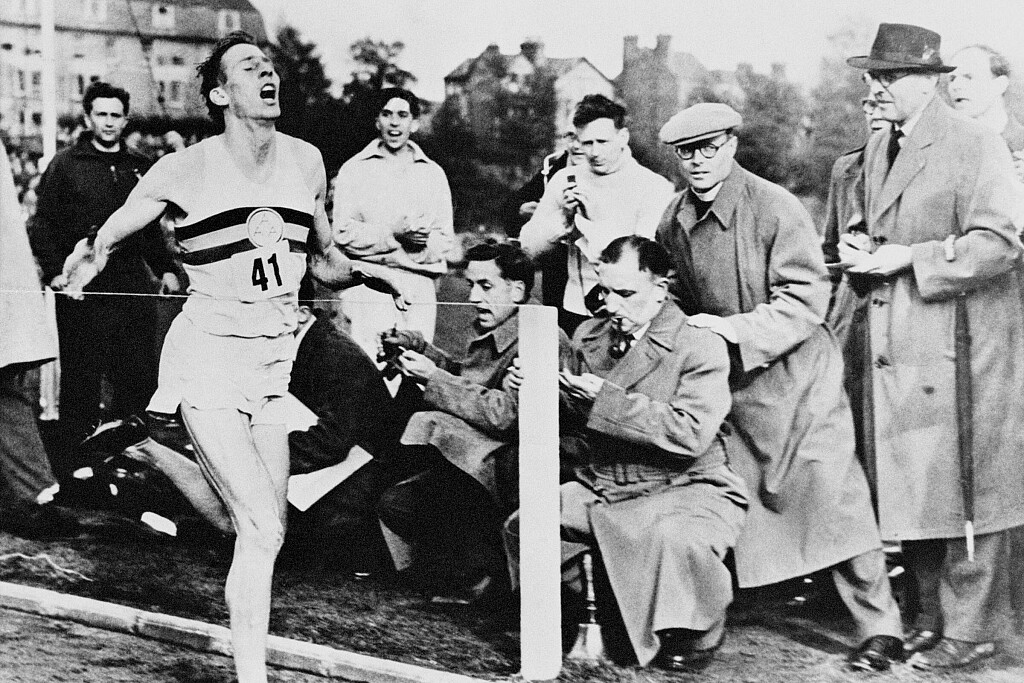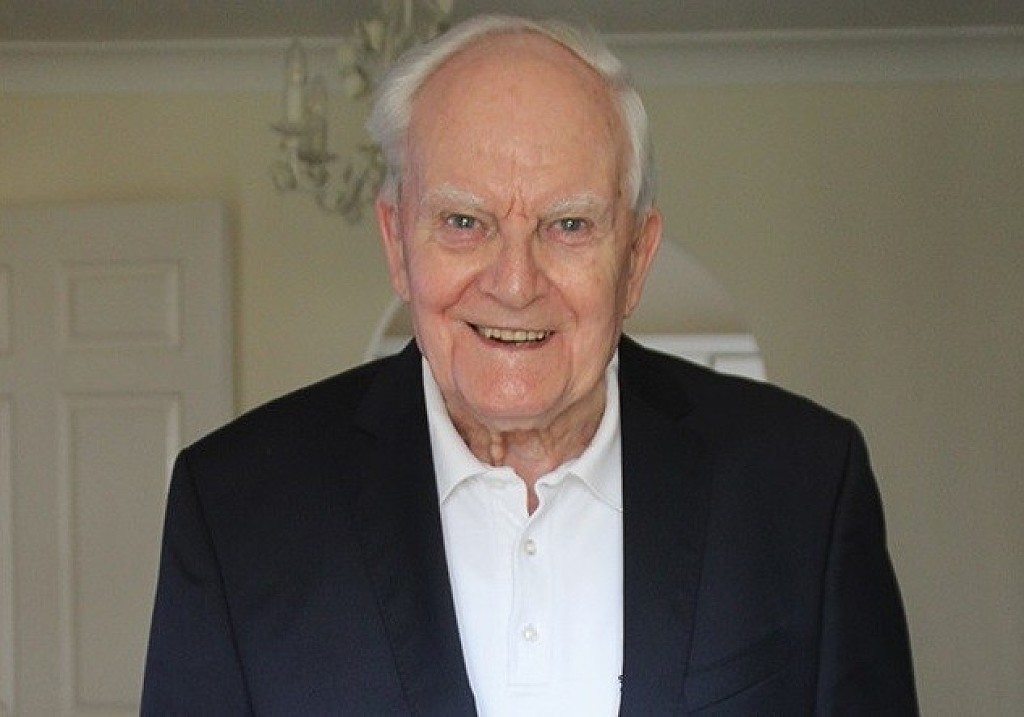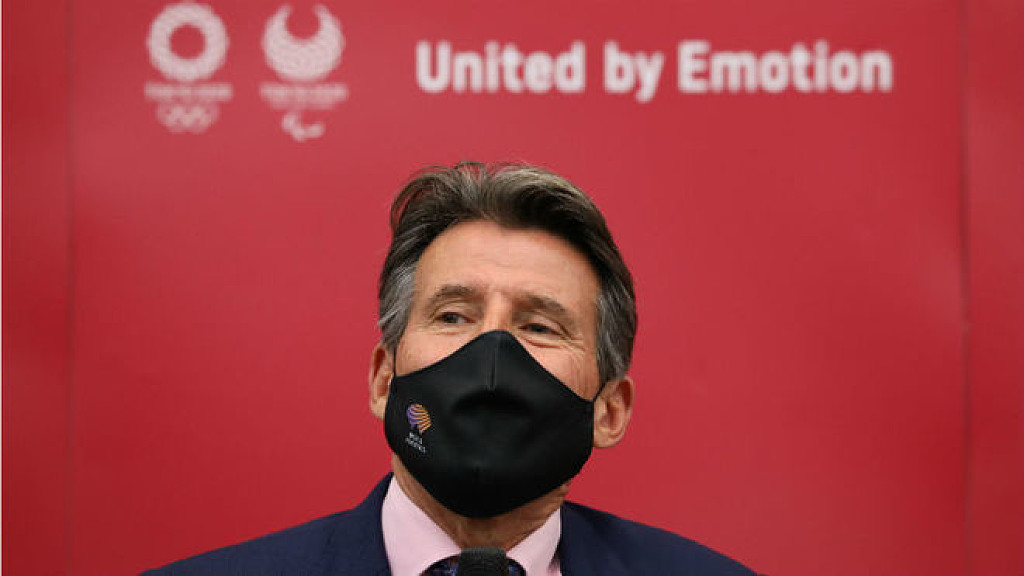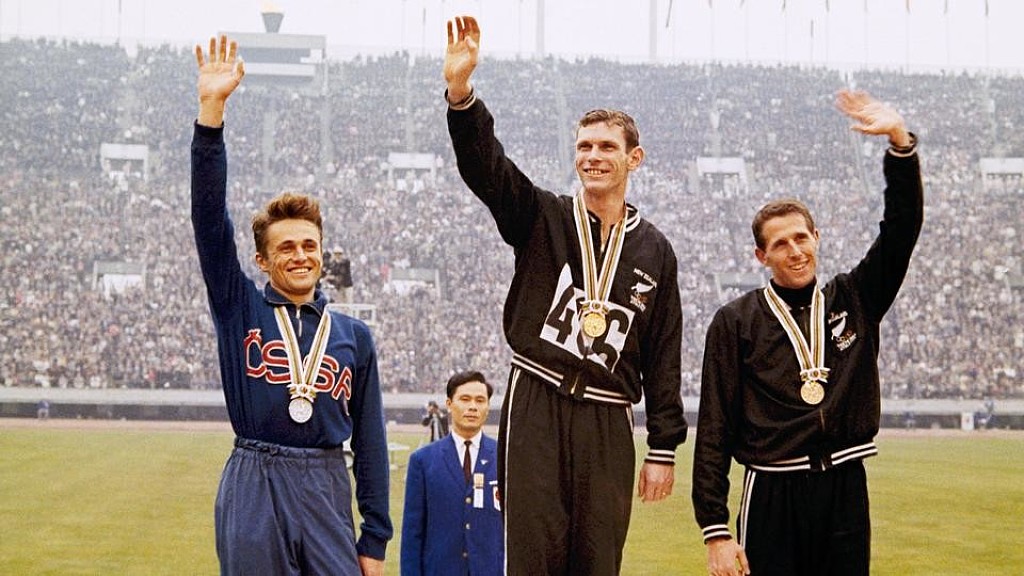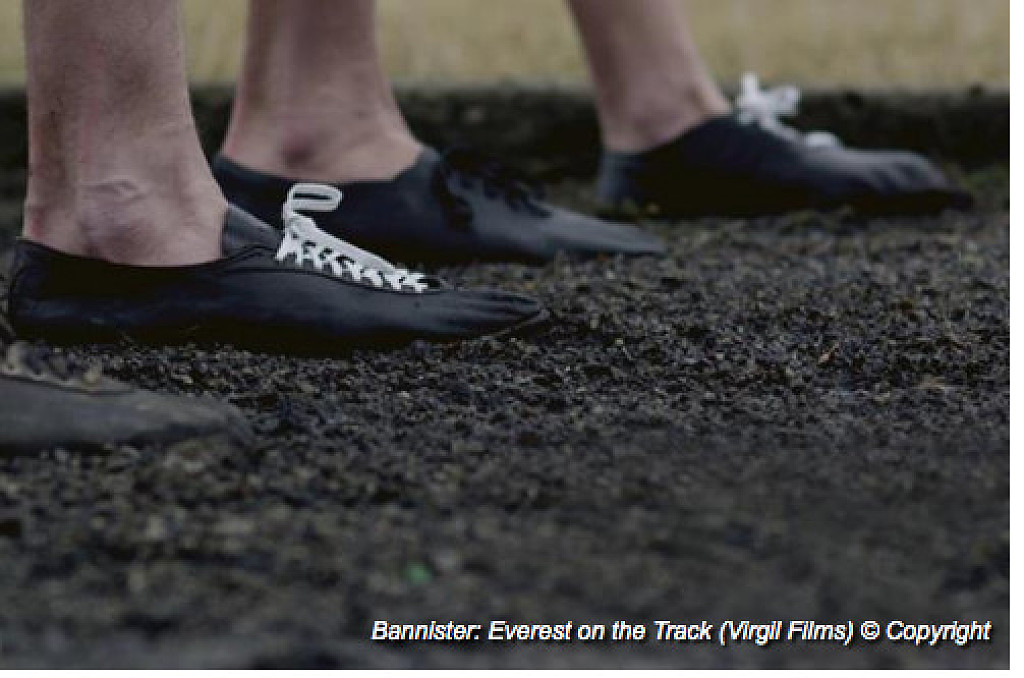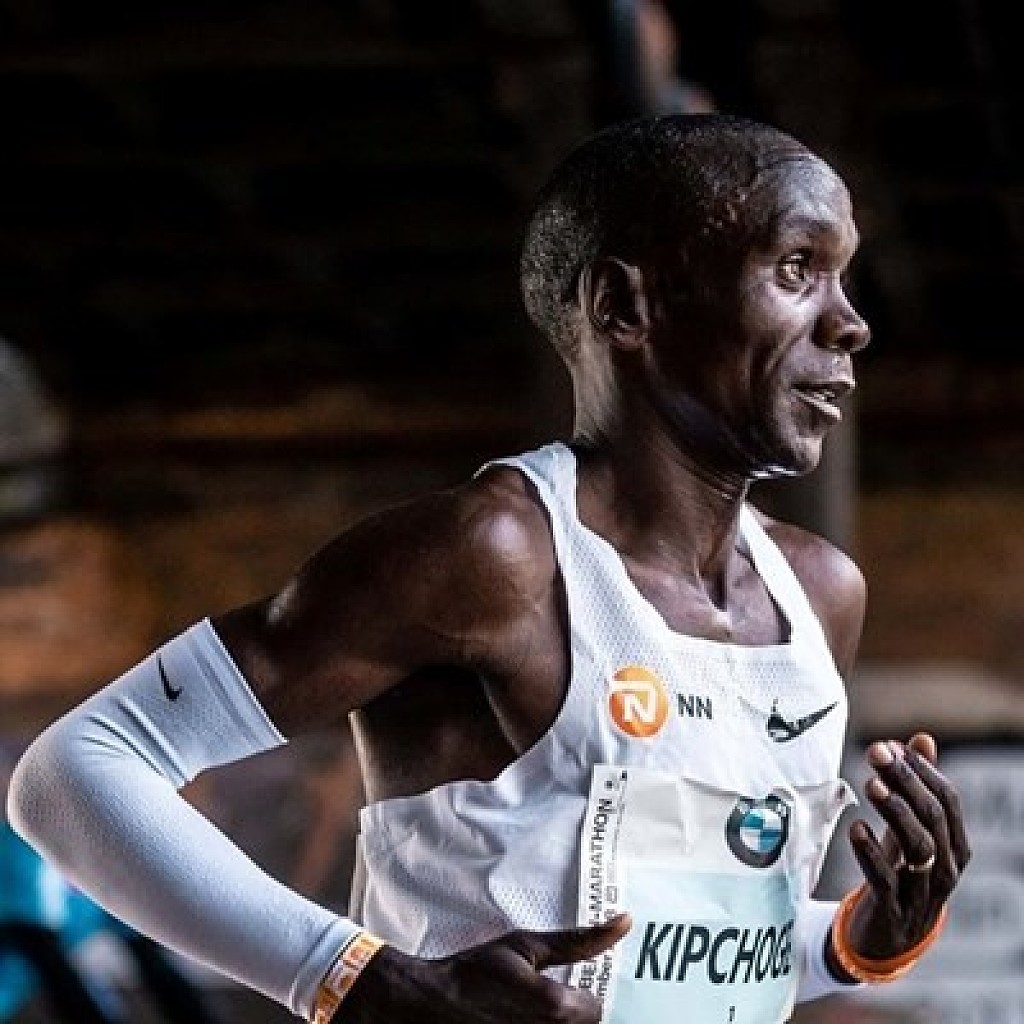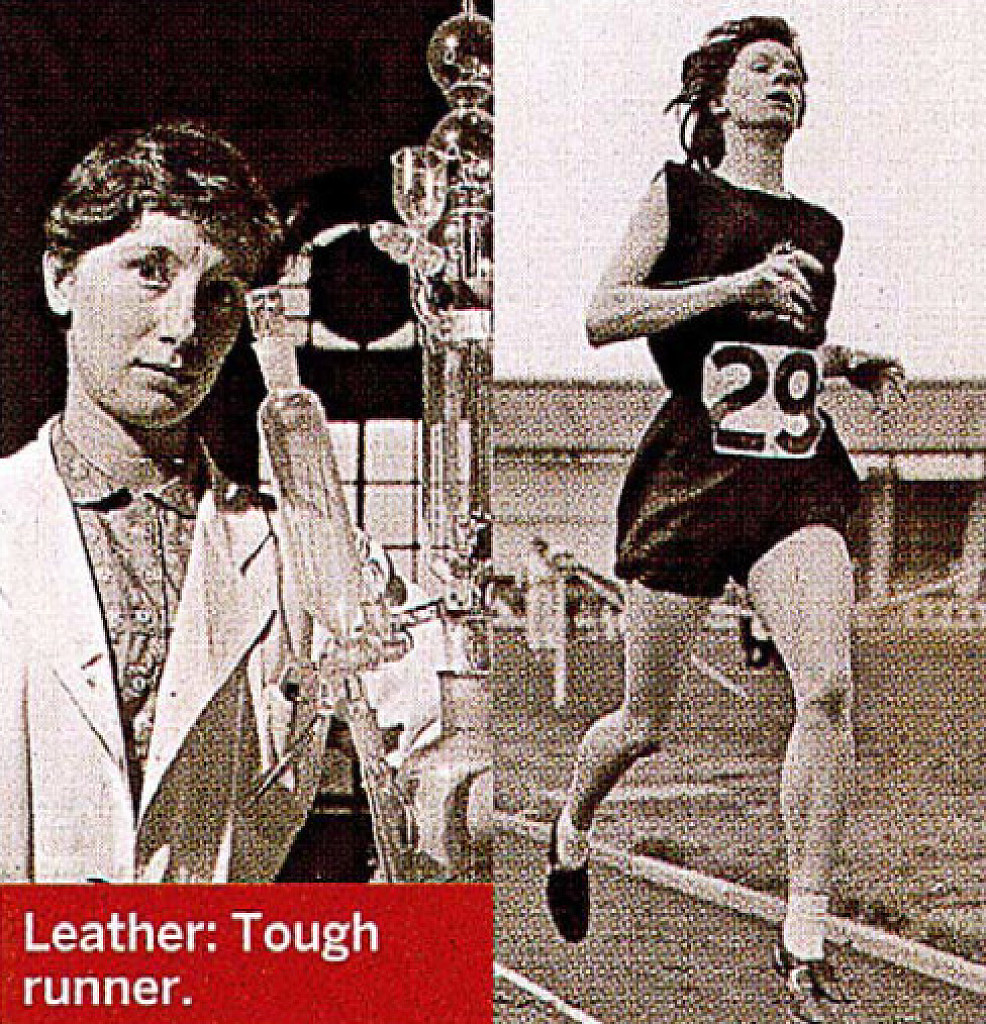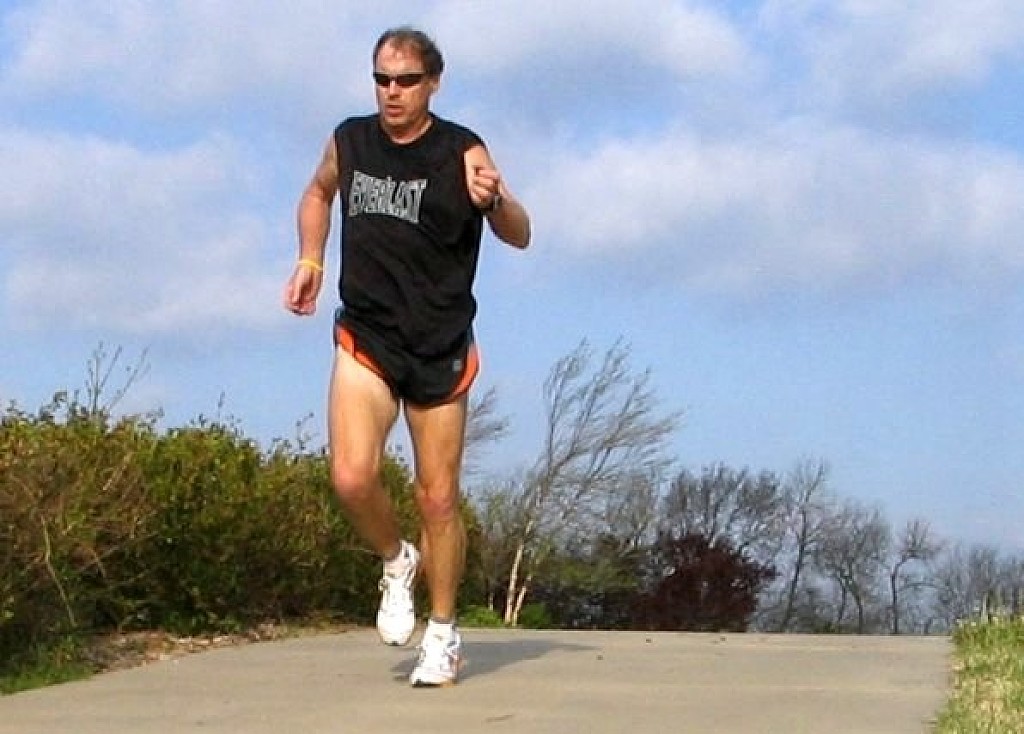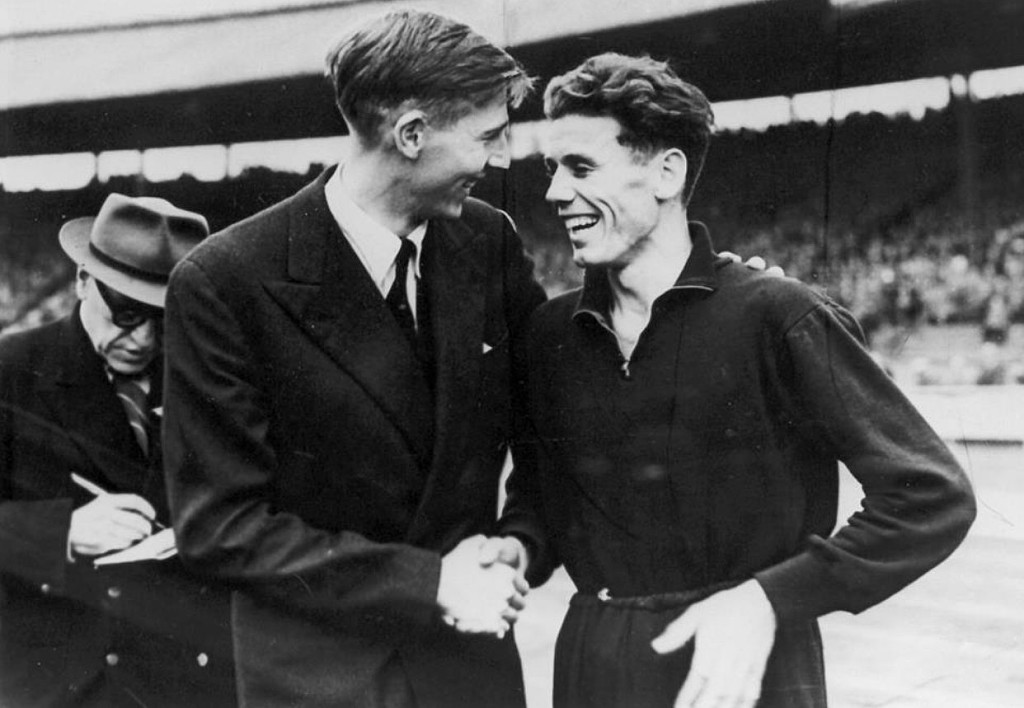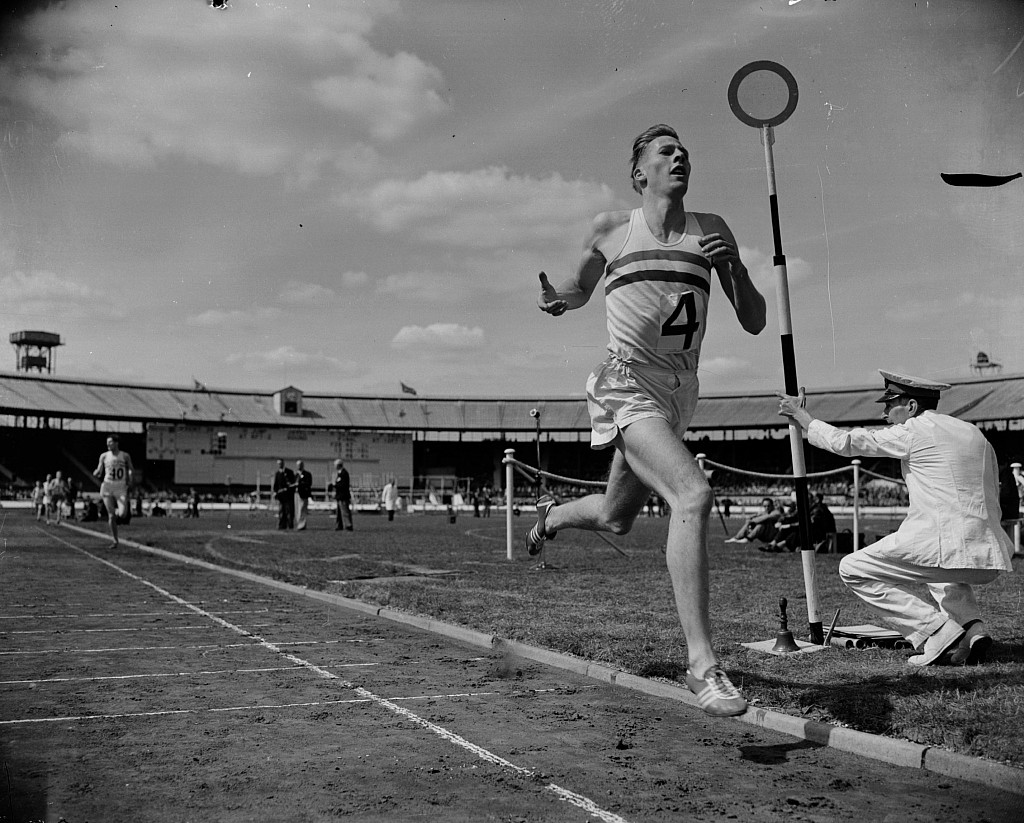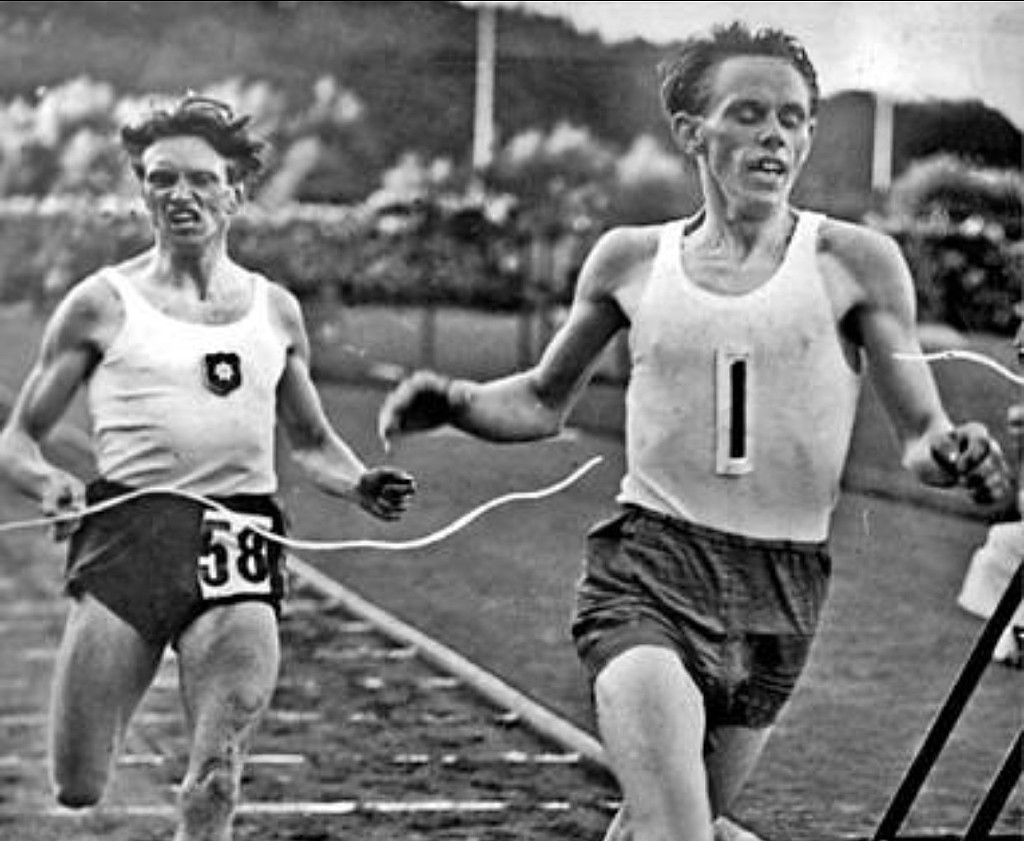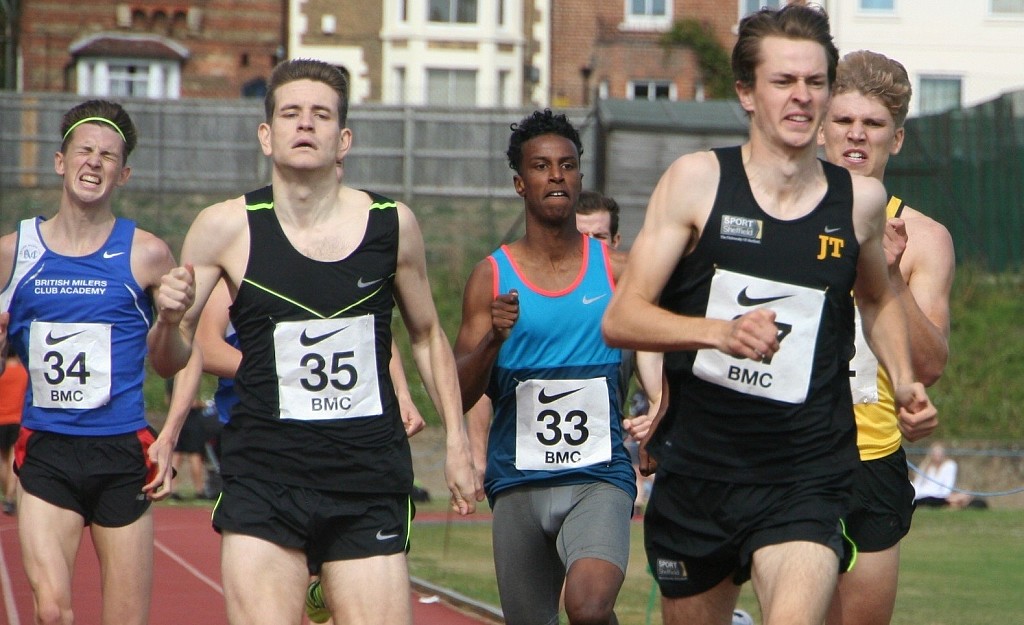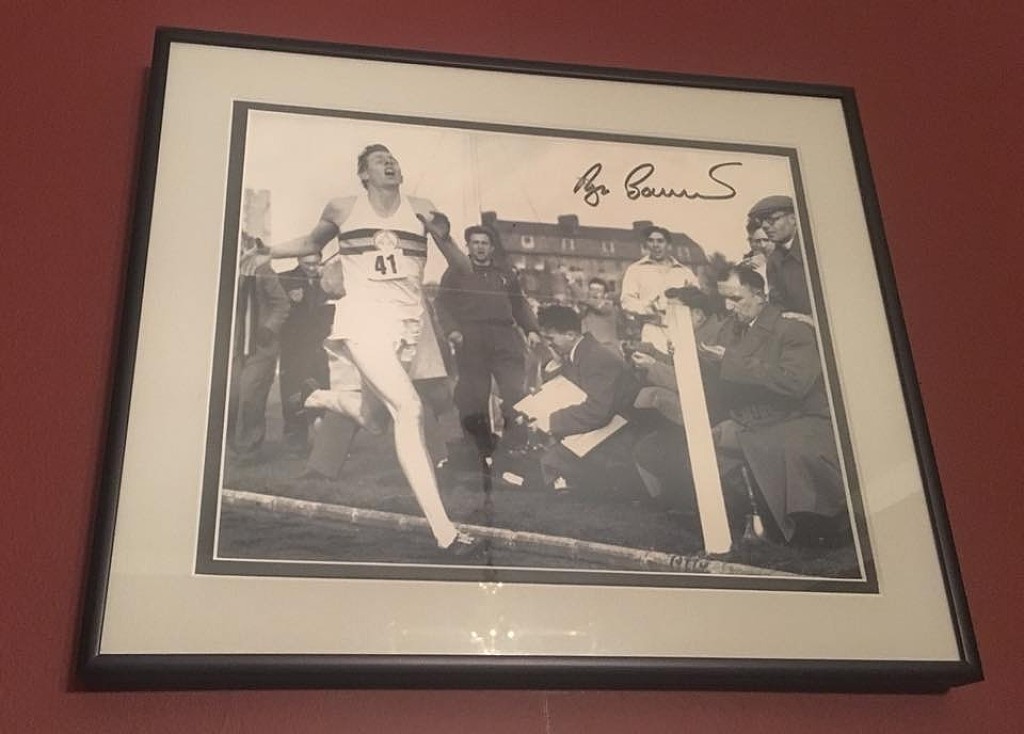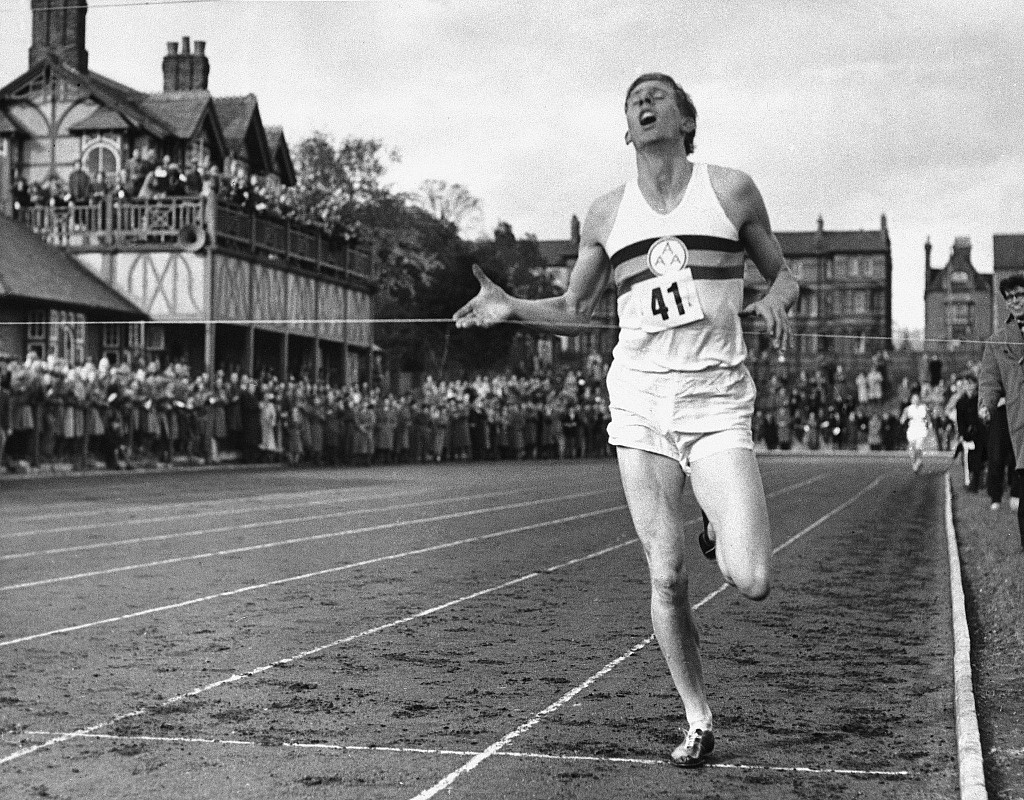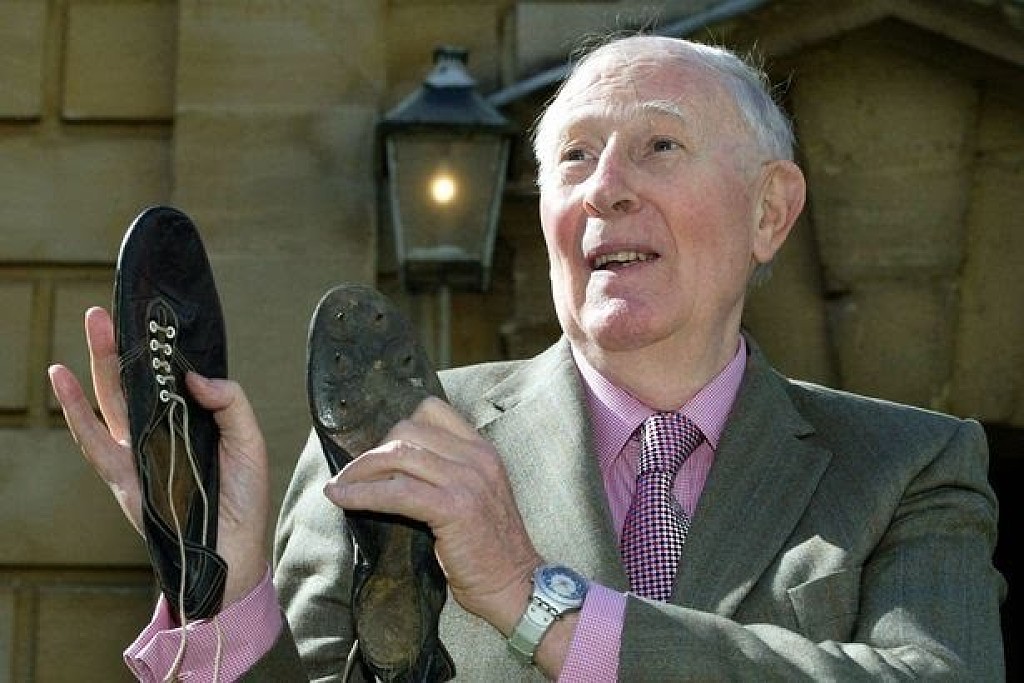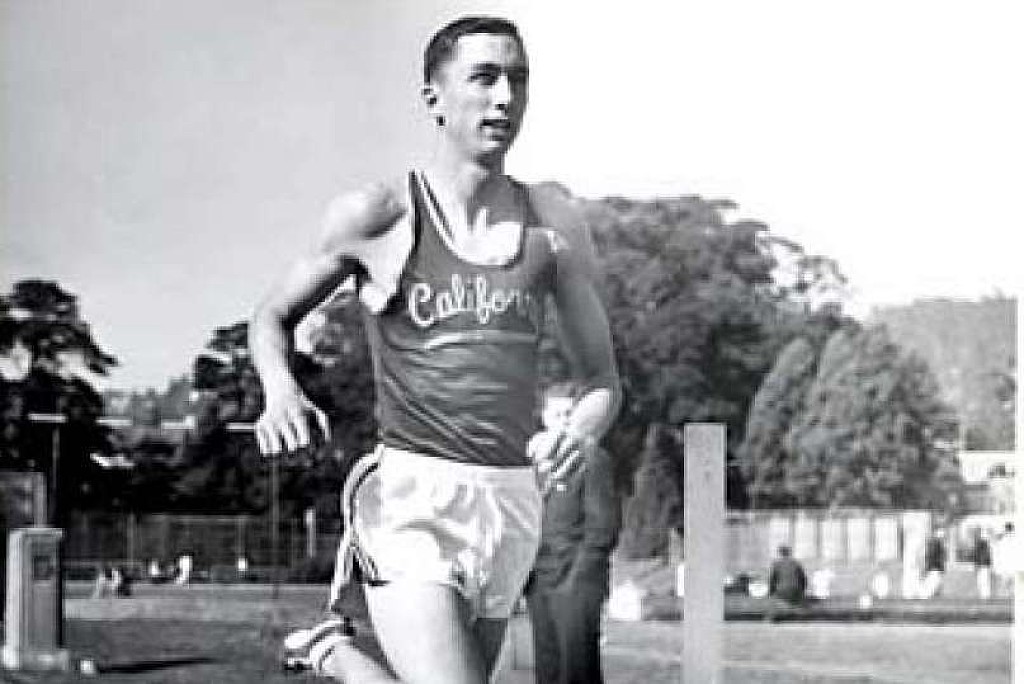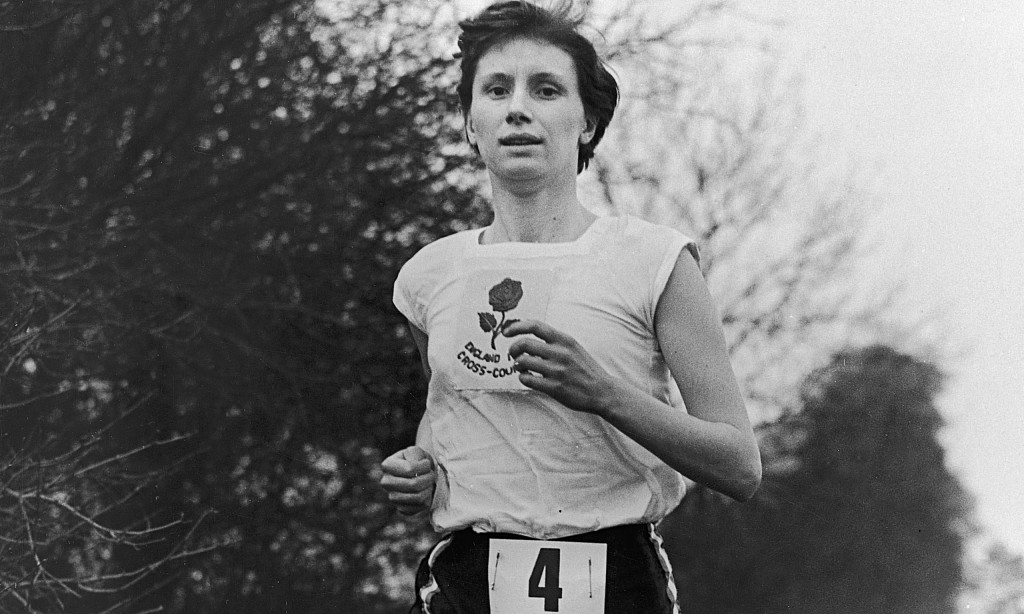Running News Daily
Running News Daily is edited by Bob Anderson. Send your news items to bob@mybestruns.com Advertising opportunities available. Train the Kenyan Way at KATA Kenya and Portugal owned and operated by Bob Anderson. Be sure to catch our movie A Long Run the movie KATA Running Camps and KATA Potato Farms - 31 now open in Kenya! https://kata.ke/
Index to Daily Posts · Sign Up For Updates · Run The World Feed
Articles tagged #Roger Bannister
Today's Running News
Faith Kipyegon vs. the Clock — Can She Become the First Woman to Break the Four-Minute Mile?
Faith Kipyegon, the reigning world and Olympic champion and current world record holder in both the 1500m and the mile, is preparing for one of the most audacious feats in track and field history—breaking the four-minute barrier in the mile.
The attempt will take place on Wednesday, June 26, 2025, at Stade Charléty in Paris as part of Nike’s “Breaking4” initiative. The race is scheduled for the late afternoon, optimized for cooler weather and ideal pacing conditions.

While the attempt will not be eligible for official world record ratification—due to likely use of rotating pacers, pacing lights, and other technological aids—it is poised to become a defining moment in women’s middle-distance running.

Faith Speaks: “We Have to Dream Big”
Kipyegon has never been one to back down from a challenge. In a recent press conference, she addressed the enormity of the task ahead.
“I think breaking four will really cement my legacy… Everything we do, we have to dream big and just believe in ourselves that we could do it,” Faith said.
She emphasized the importance of mindset over mechanics:
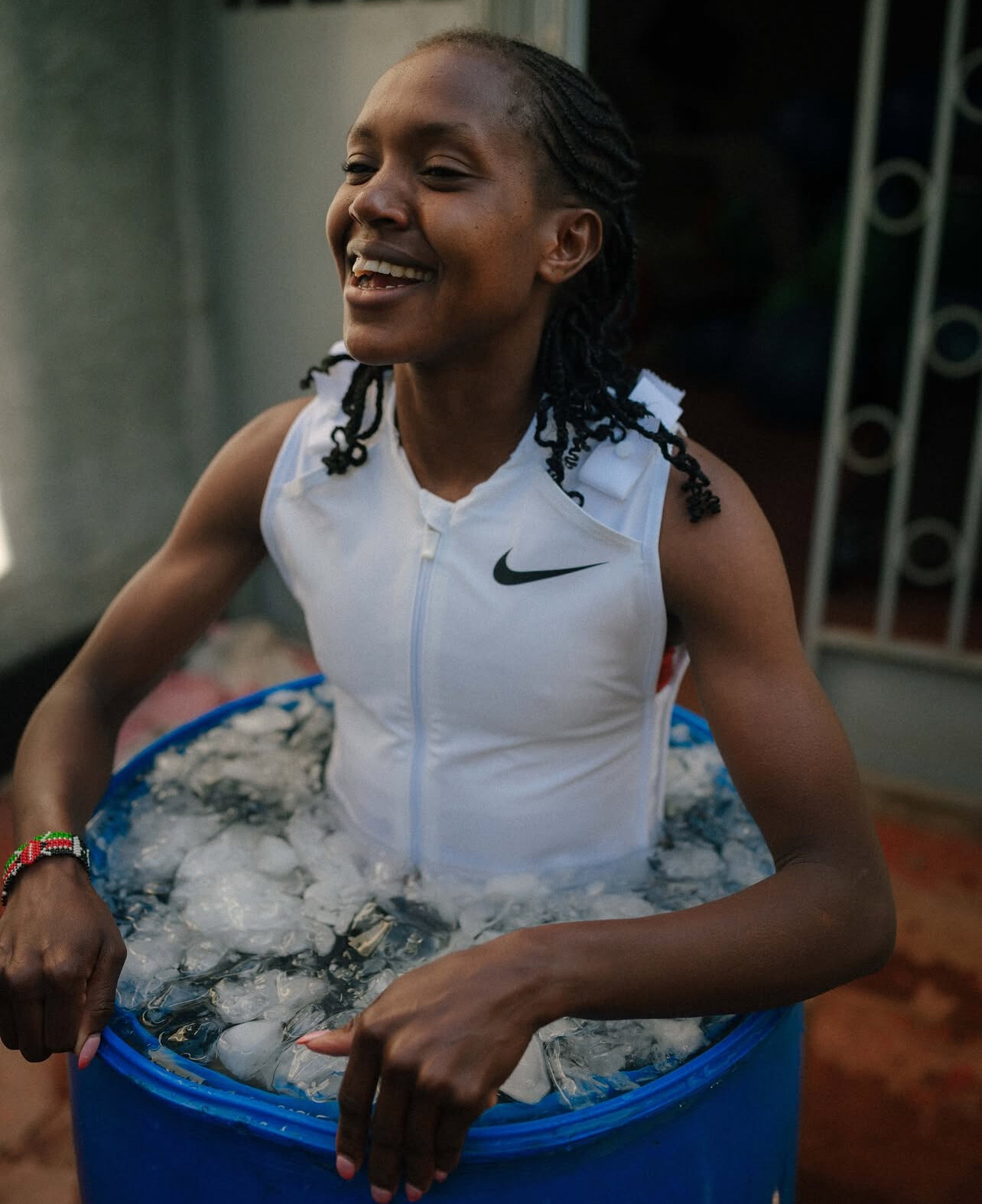
“It’s all about the mind… If you keep on telling yourself that you can do it, you can do it.”
How Big Is the Leap?
Kipyegon set the current women’s mile world record of 4:07.64 in Monaco in 2023. To go under four minutes, she would need to shave over seven seconds off that performance—a massive leap in elite middle-distance running.
For context, Roger Bannister’s famous sub-four in 1954 was just a 2-second drop from the previous best. Kipyegon would be attempting more than three times that.
Beatrice Chebet Shows Support
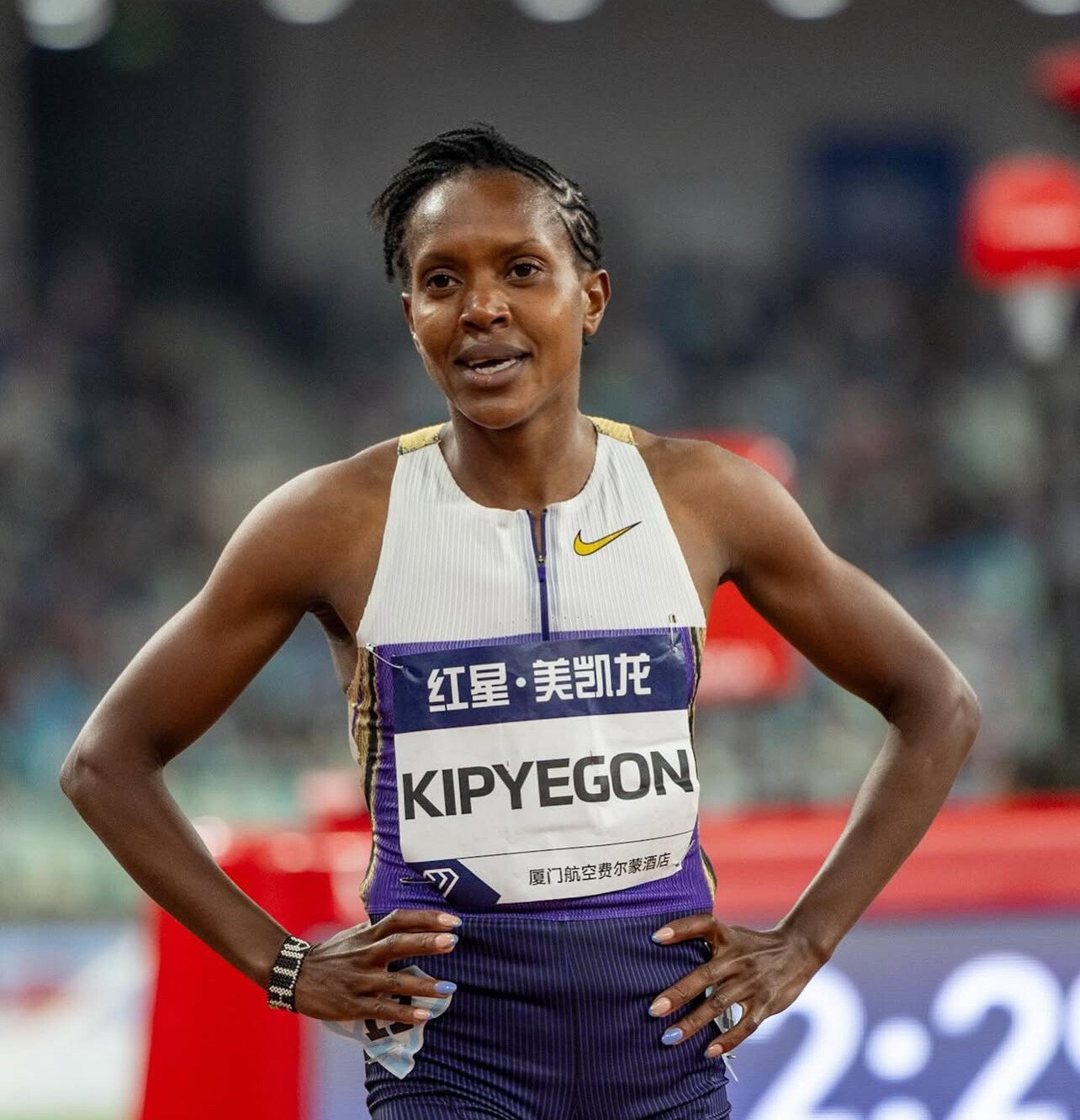
Fellow Kenyan and World Cross Country champion Beatrice Chebet has shown her full support for Faith ahead of the Paris attempt, applauding the courage it takes to take on such a goal and calling the moment “a powerful example for all athletes, especially young women.”
Doubters Remain
Not everyone believes the time is ripe for this breakthrough.
“I wish I was more positive, but I just don’t think it is going to happen,” says My Best Runs founder Bob Anderson. “Even with pacing and super shoes, it’s just too many seconds to knock off. She is an amazing athlete, and I’m sure Nike would pay an amazing amount of money to her if she does it. But to be the first woman to go under four minutes—even though it would not be official—is not going to happen now.”
Anderson adds,
“If she does do it, it would be an amazing moment in history. I’m old enough to remember when Roger Bannister accomplished this feat. That changed everything in men’s middle-distance running. If Faith does this, it would be the same for women.”
Why It Matters
• Historical Impact: A woman breaking the 4-minute barrier, even unofficially, would redefine what’s considered possible in the sport.
• Symbolism: It mirrors the legacy of Roger Bannister’s run, showing how mental and physical limits can be challenged.
• Inspiration: Nike’s Breaking4 project is about more than just time—it’s about belief. As Faith put it, “Dream big.”
All eyes now turn to Paris. Faith Kipyegon is more than just chasing a number—she’s chasing a legacy. Whether she cracks the four-minute mark or not, her attempt stands as a bold declaration: the future of women’s running is limited only by the size of the dream.
My Best Runs will be following the June 26 race closely. Stay tuned for full coverage.
by Boris Baron
Login to leave a comment
The Mile of the Century — Bannister vs. Landy, 1954
It was the clash the world had been waiting for.
On August 7, 1954, at the British Empire Games in Vancouver, Canada, two men stood on the track, each having shattered the once-mythical four-minute mile. England’s Roger Bannister, the first man to break the barrier, faced off against Australia’s John Landy, who had recently bettered Bannister’s time.
Dubbed The Mile of the Century, the race lived up to every expectation. With over 35,000 fans packing Empire Stadium, Landy led most of the way—until the final bend, when he glanced over his left shoulder. At that very moment, Bannister surged past him on the right, a perfectly timed move that etched itself into sporting history.
Bannister won the race in 3:58.8, with Landy finishing just behind in 3:59.6. It was the first time two men had broken four minutes in the same race.
This iconic image, captured at the precise moment Landy looked back, symbolizes more than just a tactical error—it reflects the intensity, drama, and elegance of a golden era in distance running.
Thanks to Eric Giacoletto for spotlighting one of the greatest moments in mile history.
by Boris Baron
Login to leave a comment
Can a Woman Legally Break the Four-Minute Mile?
The men’s four-minute mile barrier was once considered impossible—until Roger Bannister broke through on May 6, 1954, clocking 3:59.4. It marked a seismic shift in the world of athletics, changing not only what runners believed was possible, but what the sport expected from its best. Seven decades later, that milestone remains sacred in the women’s mile. The closest anyone has come is Faith Kipyegon of Kenya, who ran 4:07.64 at the Monaco Diamond League on July 21, 2023, smashing the previous world record.
But is a sub-four-minute mile for women still a distant dream—or are we on the cusp of another historic breakthrough?
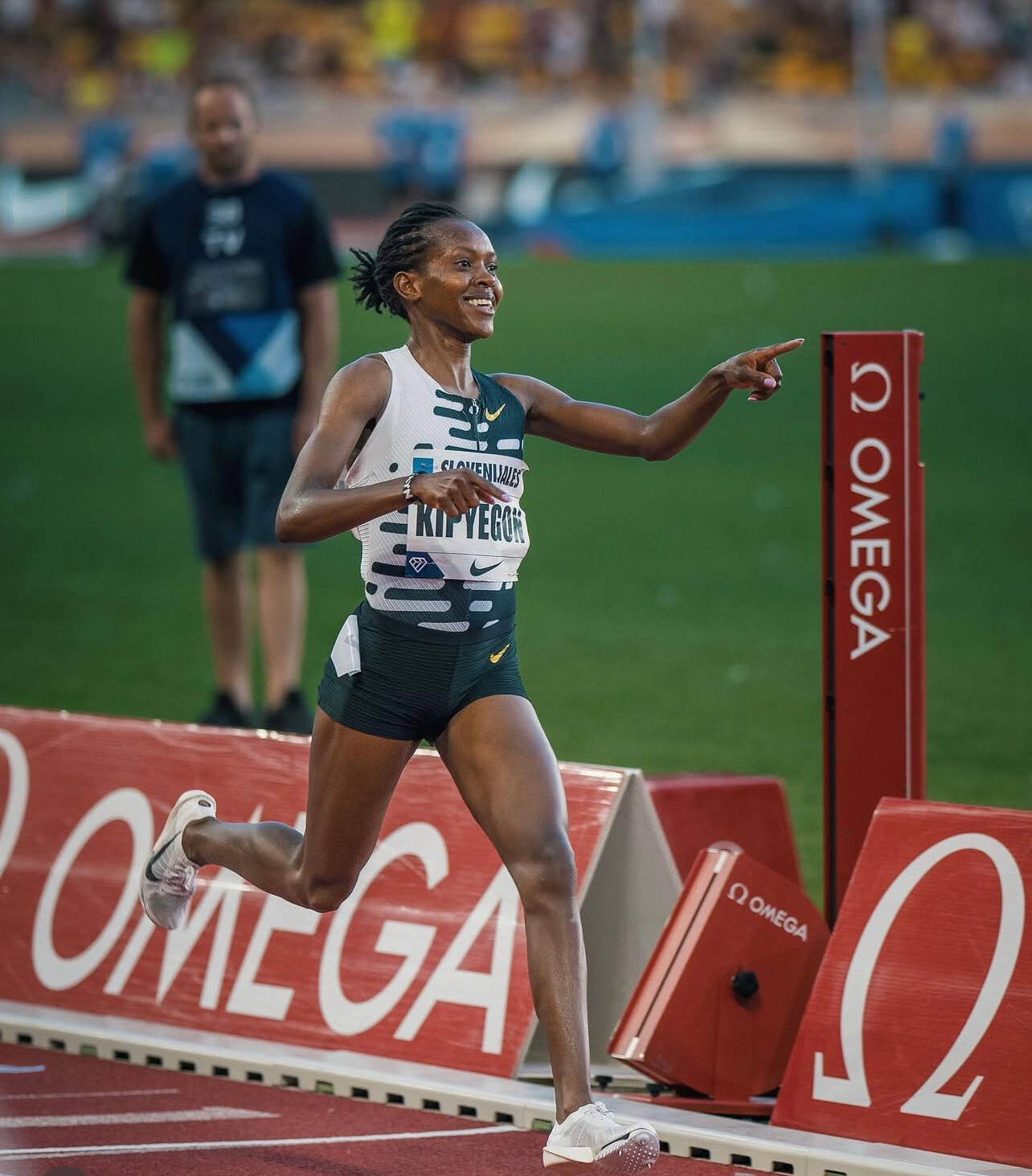
“I remember when Roger Bannister broke four minutes for the mile,” says My Best Runs founder Bob Anderson. “It was such an exciting moment in history. I think it will be even more exciting when a woman joins the club.”
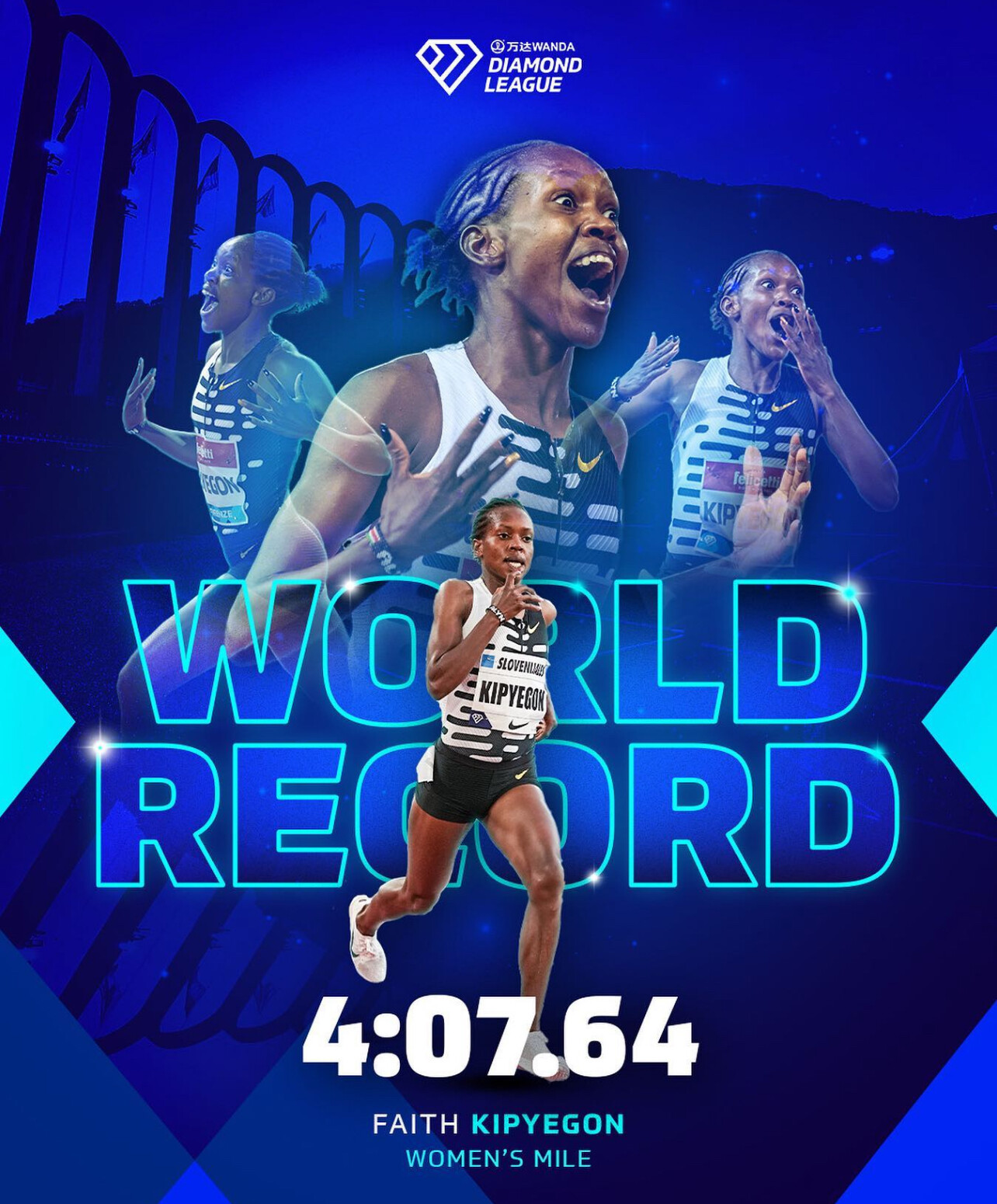
Faith Kipyegon: The Closest So Far
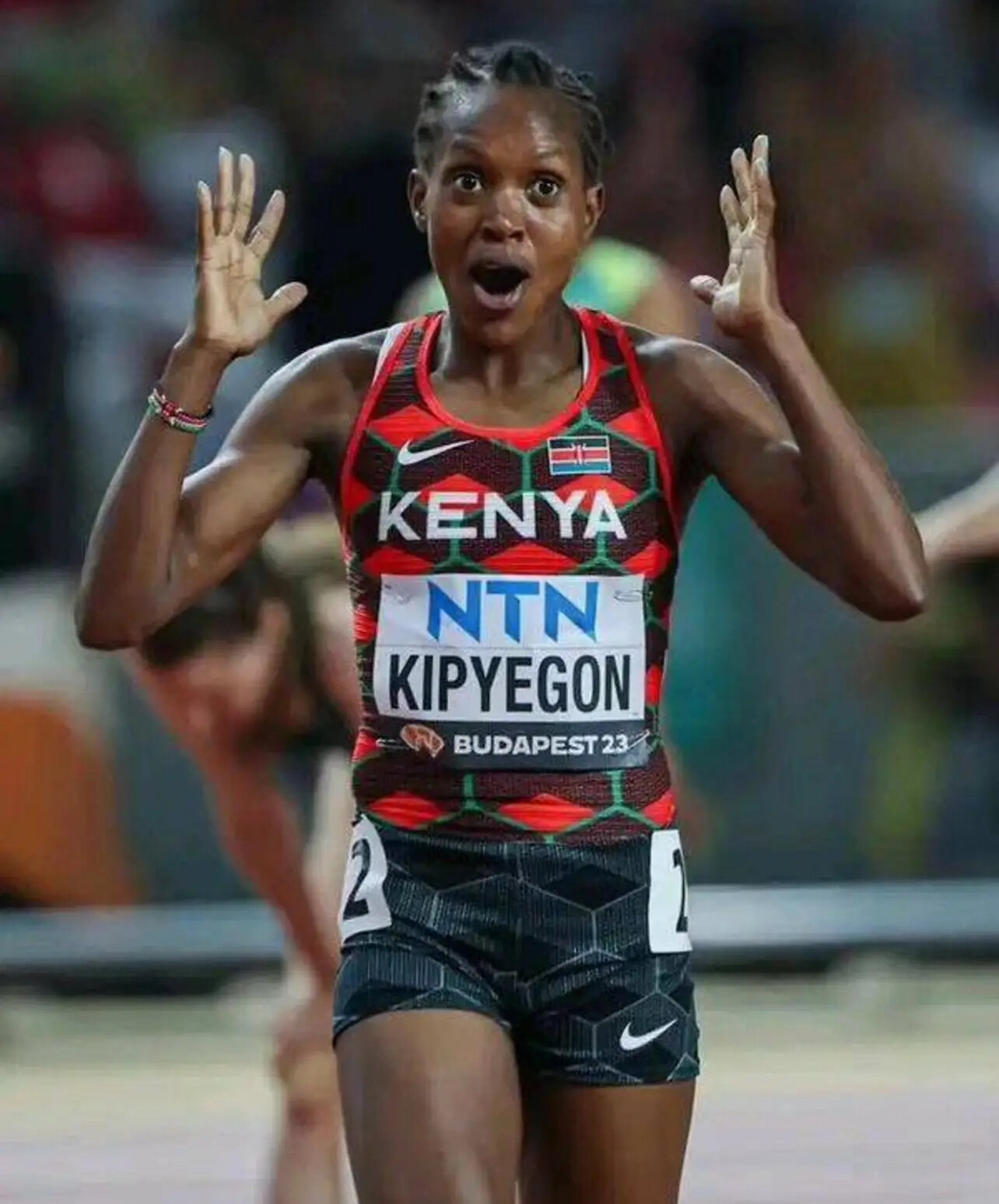
Faith Kipyegon has redefined what’s possible in women’s middle-distance running. Her 4:07.64 run in Monaco wasn’t just a world record—it was a display of precision pacing, power, and race execution. In that race, every single runner set a personal best, national record, or season best. But for Kipyegon to cut another 7+ seconds from that time—down to 3:59.9—would take another leap forward.
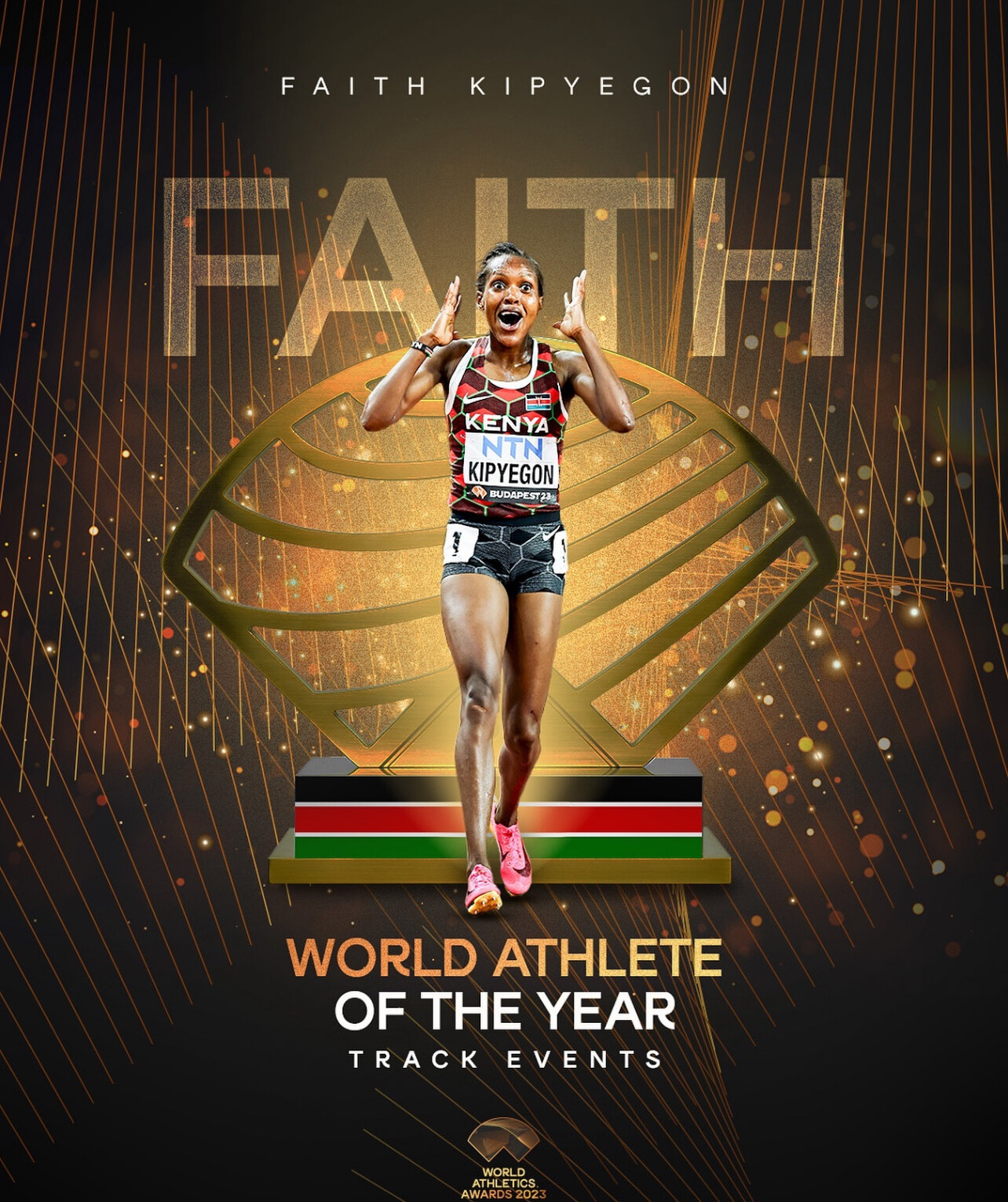
She’s already run a 3:49.11 in the 1500m, the fastest time in history. Converted directly, that performance suggests a mile potential close to 4:07–4:05, but a sub-4:00 mile would require averaging approximately 59.8 seconds per 400 meters—four consecutive laps at a pace that currently no woman in history has sustained.

Legality Matters: What the Rules Allow
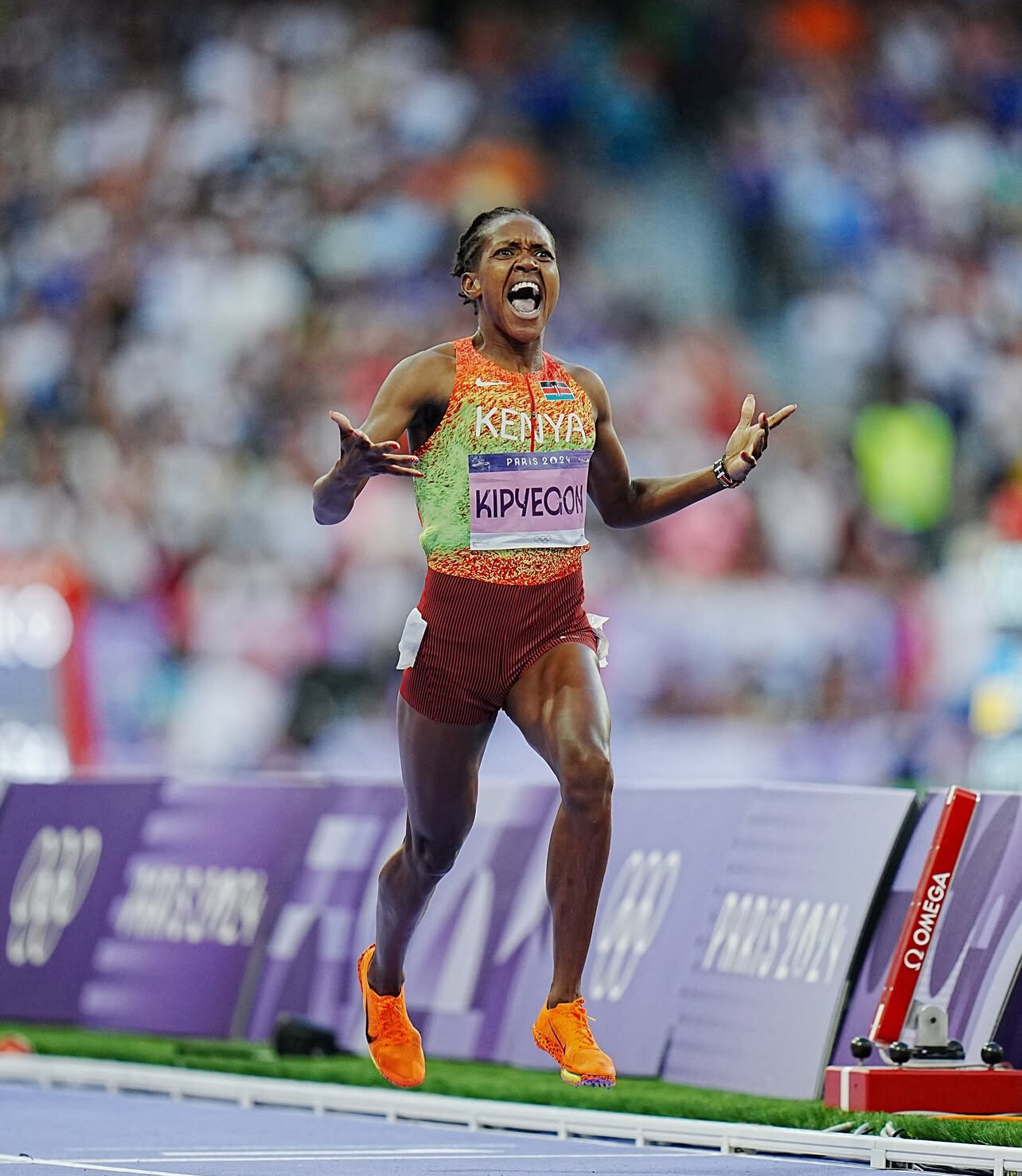
There has been plenty of discussion about whether women might break four minutes with the help of male pacemakers, similar to what’s been done in mixed road races. But here’s the reality: if a performance is going to count as a world record—or even be considered legitimate in top-level track competition—it must be done in a women-only race.
That means:
• Pacemakers must be female.
• They must be officially entered in the race.
• They must start with the field and not enter partway through.
These rules, established by World Athletics, ensure a level playing field and maintain the legitimacy of records. Male pacers are sometimes used in road races (like marathons and half marathons), particularly in mixed-gender fields, but their use invalidates a performance for women’s-only world record purposes.
So while some researchers have speculated that aerodynamic drafting with perfectly placed pacers could help a woman run 3:59, such scenarios often suggest using alternating pacers (ahead and behind) or male runners, neither of which is legal in women-only track events.
So How Could It Happen—Legally?
If it’s going to happen the right way, the most likely path forward includes:
• Female pacemakers: Even if a sub-four-mile requires a woman to finish the job solo, having another woman help with the first two or even two-and-a-half laps is still legal and useful. But that pacer would have to run the first 800–1000 meters at 4:00 mile pace—meaning 2:00–2:30 for 800–1000 meters. That’s a world-class performance on its own.
• Smart pacing and preparation: The sub-four will take near-perfect training, likely at altitude or with world-class facilities and recovery. It may require peaking for just one race with laser-focused timing.
• Technological and environmental optimization: Legal shoe tech, fast track surfaces, calm weather (for outdoor races), and ideal pacing rhythm will all play a role.
Who Might Do It?
Faith Kipyegon is the leading candidate today. She has shown the range, consistency, and drive needed to make history. But others may be in the wings—young talents with 1500m PRs in the low 3:50s and raw speed over 800 meters could have the perfect blend of endurance and turnover.
It’s also likely that, like Bannister’s 1954 run, the moment will come with the help of a team: pacemakers who understand their job, a well-timed race, and a field that pushes the pace without hesitation.
Final Thoughts
A sub-four-minute mile by a woman is not just a mathematical milestone—it’s a cultural one. It would mark the end of one of the last iconic gender-separated barriers in track and field. It would also be a celebration of decades of progress in training, physiology, opportunity, and competition.
The question is no longer “if,” but “when.”
And when it happens, it might just be one of the greatest moments in the sport’s history.
by My Best Runs Editorial Team
Login to leave a comment
Sam Ruthe Breaks Barriers as 15-Year-Old Runs Historic Sub-4-Minute Mile
On March 19, 2025, 15-year-old New Zealand runner Sam Ruthe stunned the athletics world by running a 3:58.35 mile in Auckland, making him the youngest person ever to break the elusive four-minute barrier. The achievement cements Ruthe as one of the most promising young talents in distance running and places him in elite company among middle-distance legends.
A Legacy of Speed – Ruthe’s Background and Development
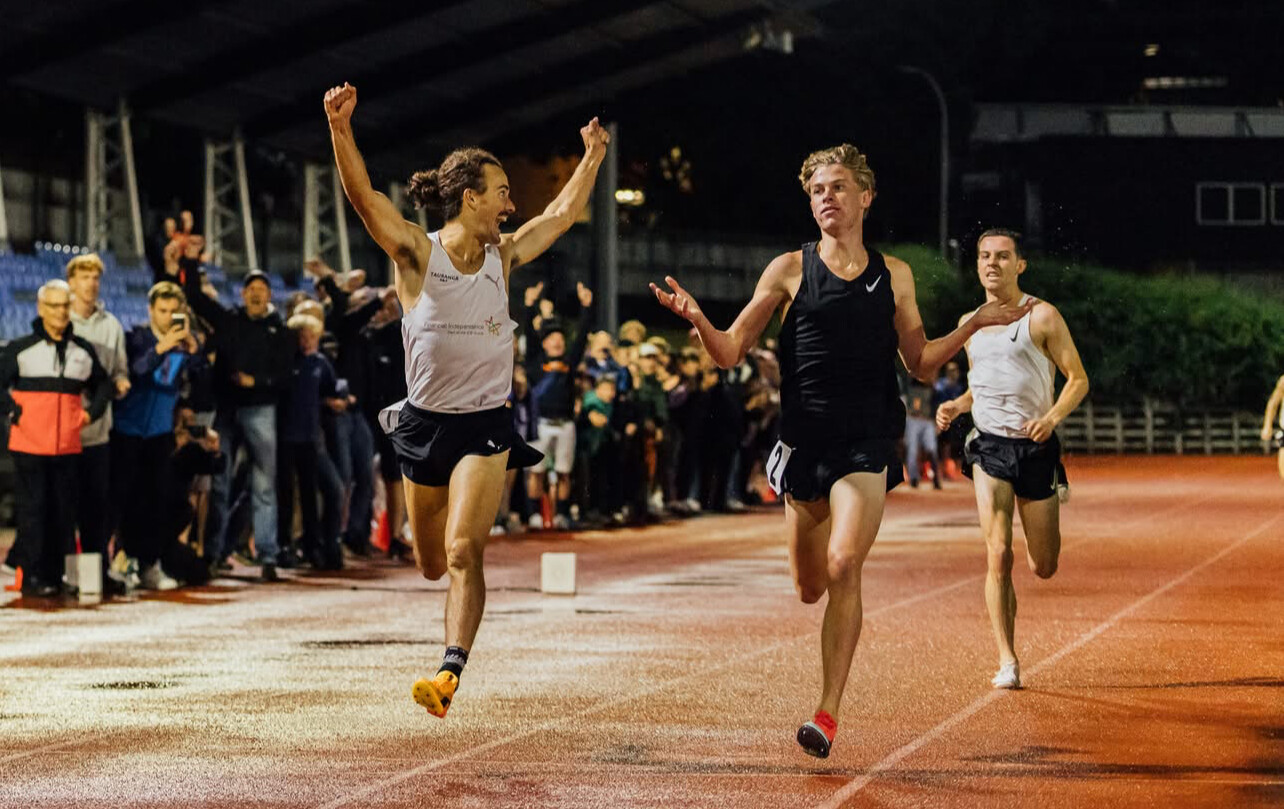
Ruthe’s meteoric rise in athletics comes as no surprise, given his deep-running pedigree. His parents, Ben and Jess Ruthe, are both accomplished New Zealand distance runners, and his grandparents, Trevor and Rosemary Wright, also left their mark on the sport—Rosemary Wright won Commonwealth Games gold in the 800 meters in 1970.
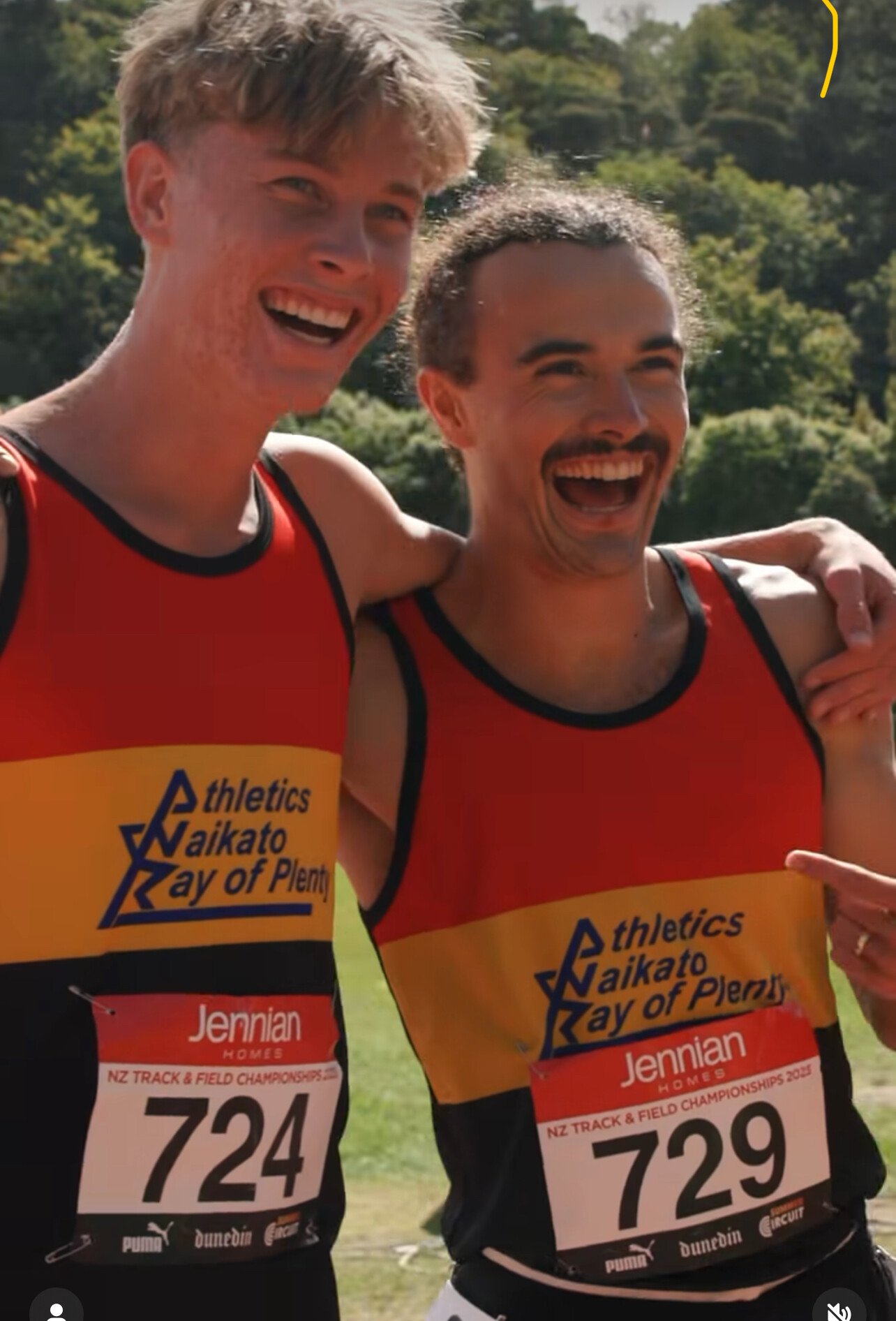
Guided by coach Craig Kirkwood, Ruthe has demonstrated extraordinary potential. In November 2024, he shattered the New Zealand under-17 and under-18 3000m records, clocking 8:09.68—the fastest time ever recorded by a 15-year-old for that distance. That performance hinted at something special, but few could have predicted his historic mile breakthrough just months later.
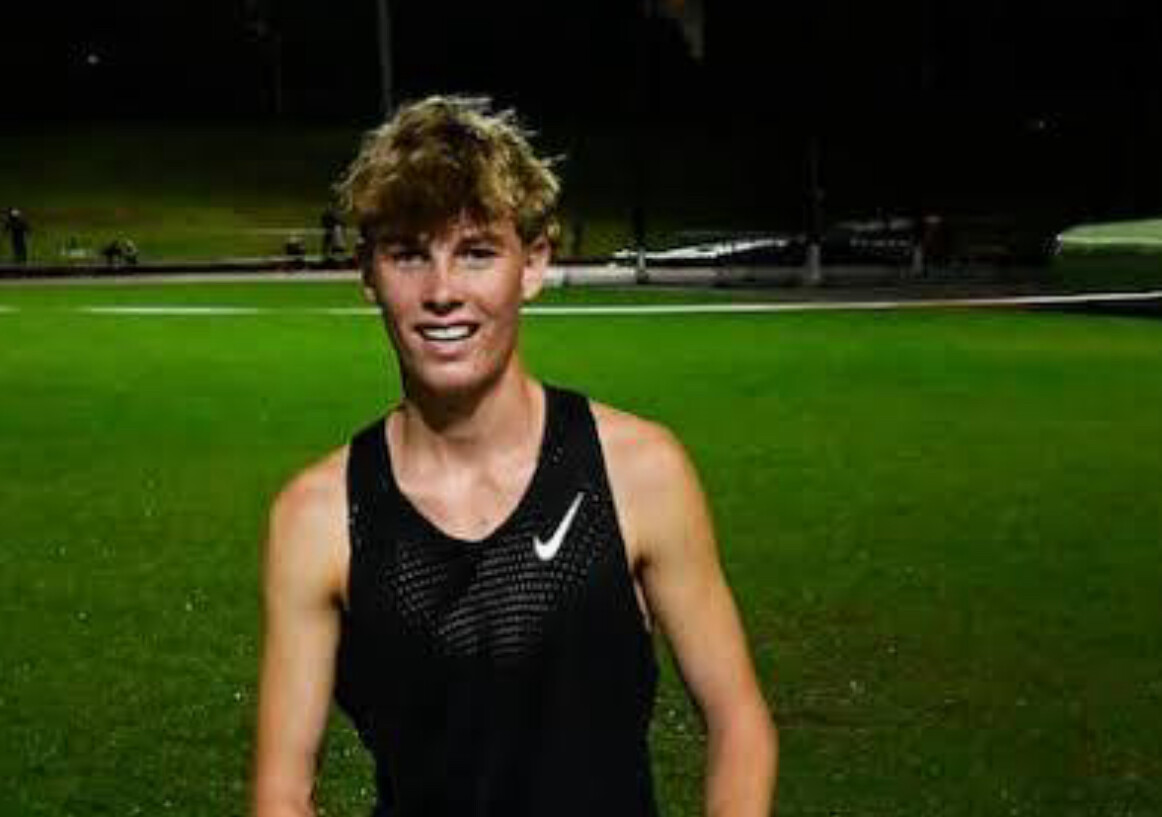
Breaking the Barrier – The 3:58.35 Mile
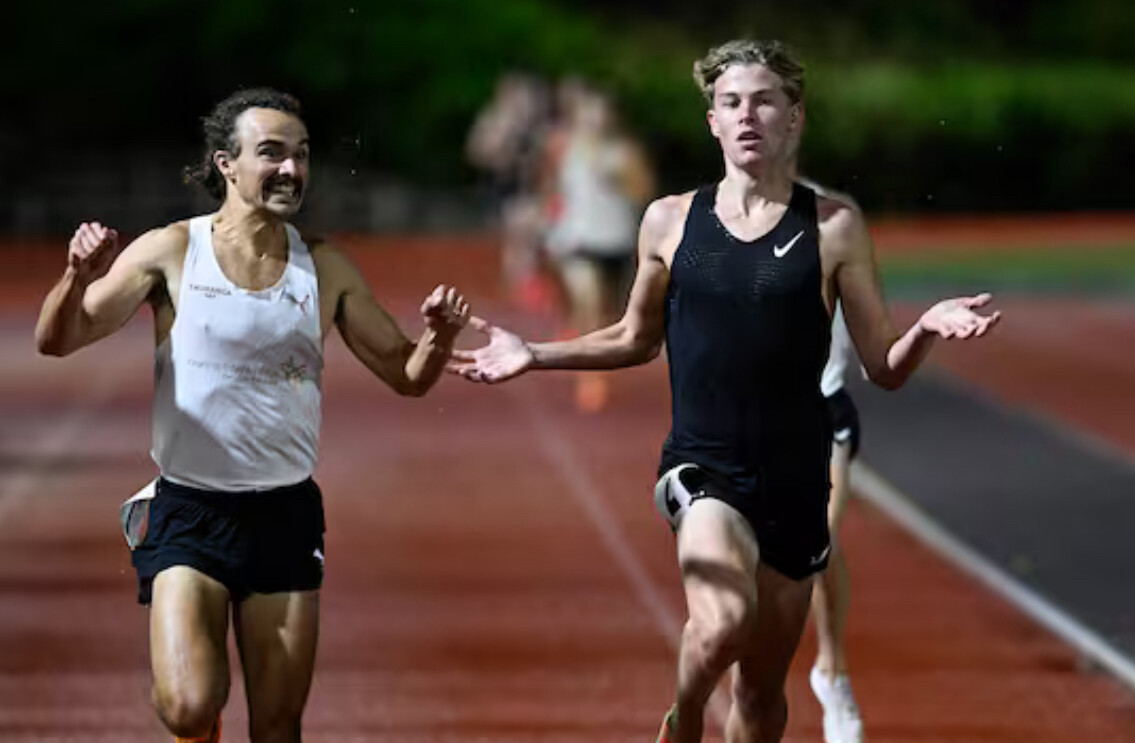
The sub-four-minute mile remains one of the most revered milestones in track and field, a mark that has defined greatness since Roger Bannister first achieved it in 1954. Until now, Norway’s Jakob Ingebrigtsen had been the youngest to break four minutes, running 3:58.07 at age 16 in 2017. Ruthe, at just 15, has rewritten history.
The race itself was a masterclass in pacing and composure. Running on Auckland’s Millennium Stadium track, Ruthe stayed patient through the opening laps before unleashing a devastating final kick. As he crossed the finish line in 3:58.35, the crowd erupted, realizing they had just witnessed a moment that would be talked about for years to come.
The Future of a Rising Star
With world-class endurance, speed, and a seemingly limitless ceiling, Ruthe’s career is just beginning. His ability to set records at such a young age raises intriguing questions about how fast he can go and what he can achieve on the global stage.
As he continues to develop under expert guidance, the world will be watching. Could he be New Zealand’s next Olympic great? If his recent performances are any indication, this is only the beginning.
Login to leave a comment
The Art and Impact of marathon Pacing
In elite marathon running, pacemakers—often called “rabbits”—play a crucial yet understated role. These athletes set a predetermined tempo, guiding lead runners through significant portions of the race to facilitate record-breaking performances or personal bests. The Chicago Marathon offers a compelling case study of this dynamic, particularly through the collaboration between Sifan Hassan and her pacer, Reid Buchanan.
A Synergistic Partnership: Hassan and Buchanan

Sifan Hassan, a distinguished middle-distance runner, embarked on her second marathon endeavor in 2023 Chicago. To navigate this challenge, she enlisted Reid Buchanan, a seasoned U.S. athlete with a personal marathon best of 2:11:38, set in 2020 at The Marathon Project in Chandler, Arizona. Despite his experience, pacing another athlete introduced new complexities.
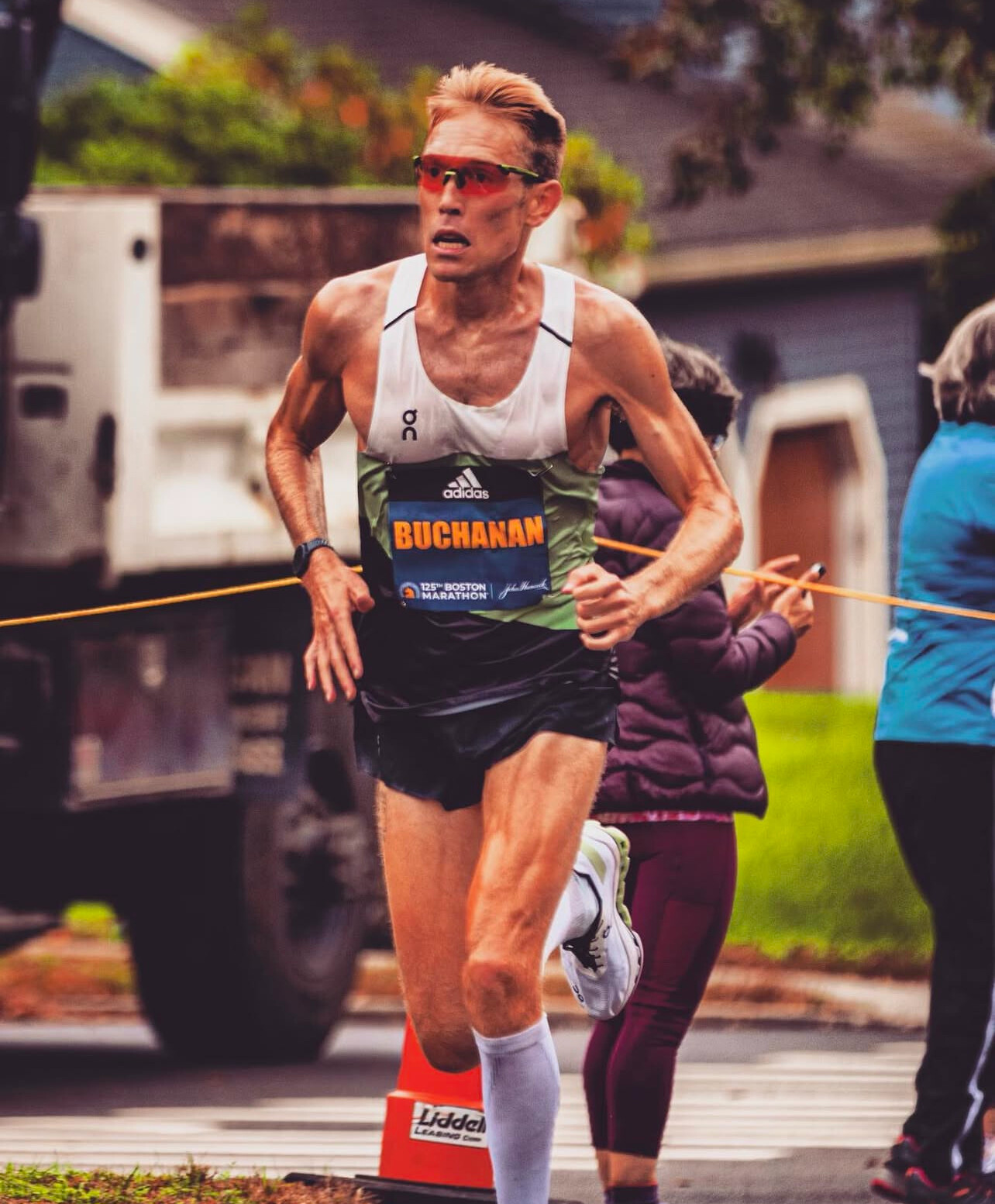
Their pre-race dialogue underscored the strategic intricacies of pacing. Buchanan proposed, “I was brought in to run 2:16 pace, but I think I can get you to about 25K at 2:12 pace.” Hassan’s response was both confident and motivating: “Oh, I’m sure you can go further. You just have to believe.” This exchange not only set ambitious expectations but also highlighted the psychological interplay between athlete and pacer.
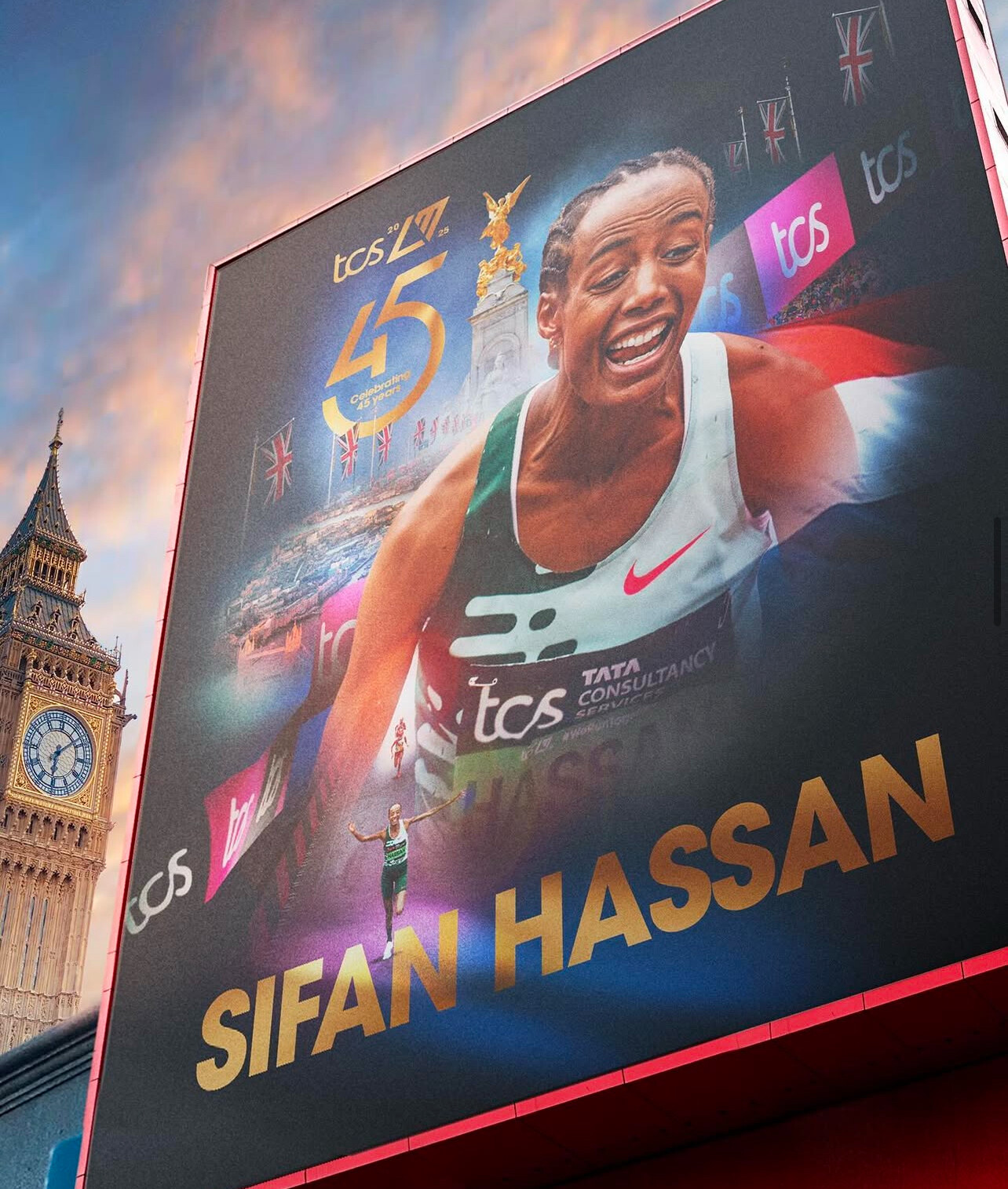
During the race, Buchanan’s steady pacing was instrumental. Hassan initially struggled to find her rhythm, feeling the intensity of the early kilometers. However, Buchanan’s consistent tempo helped her regain composure. By the 22K mark, Hassan had closed the gap on the leading pack, and by 25K, she began to assert her dominance, eventually breaking away to finish with a course record time of 2:13:44.
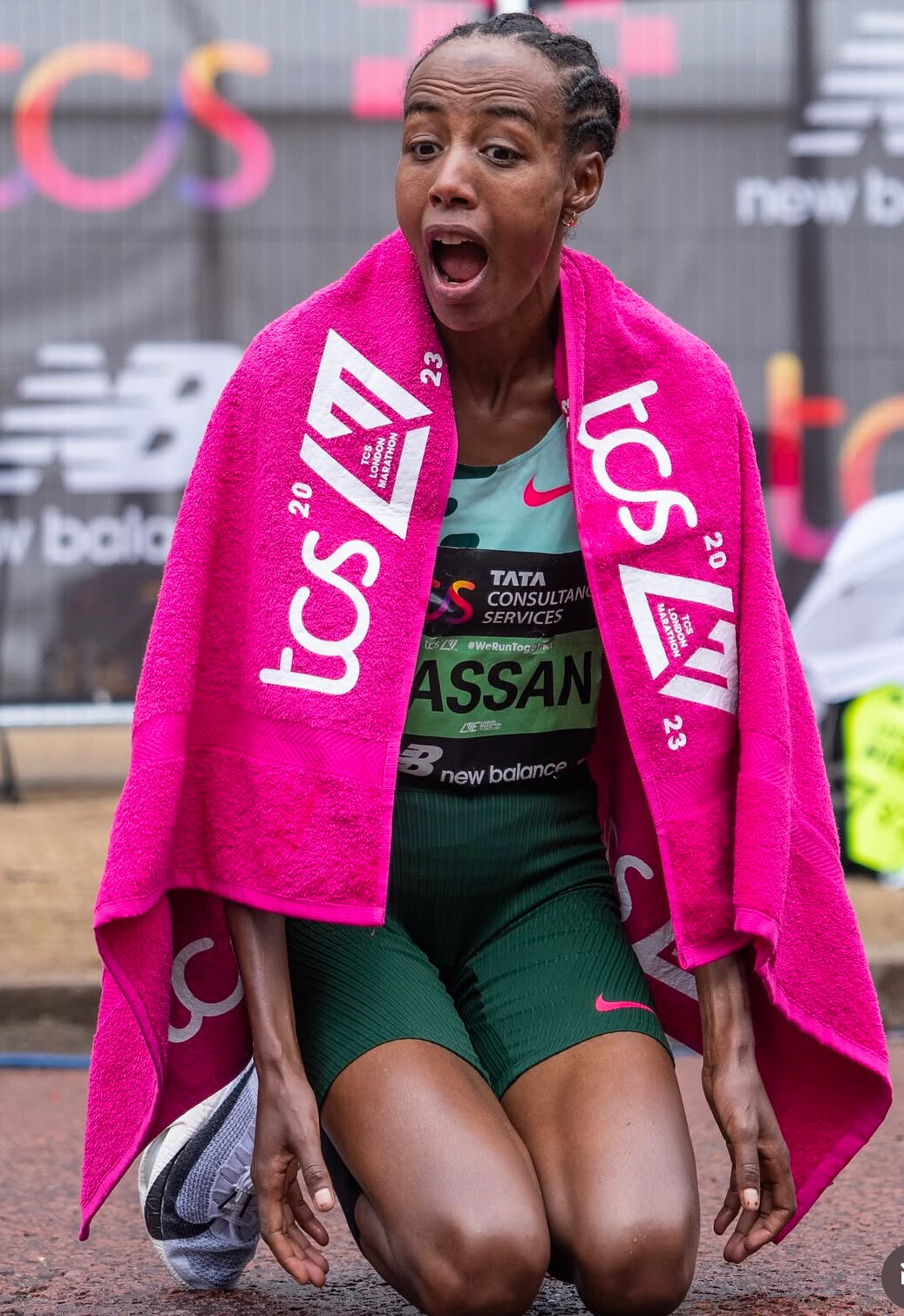
The Evolution and Role of Professional Pacemakers
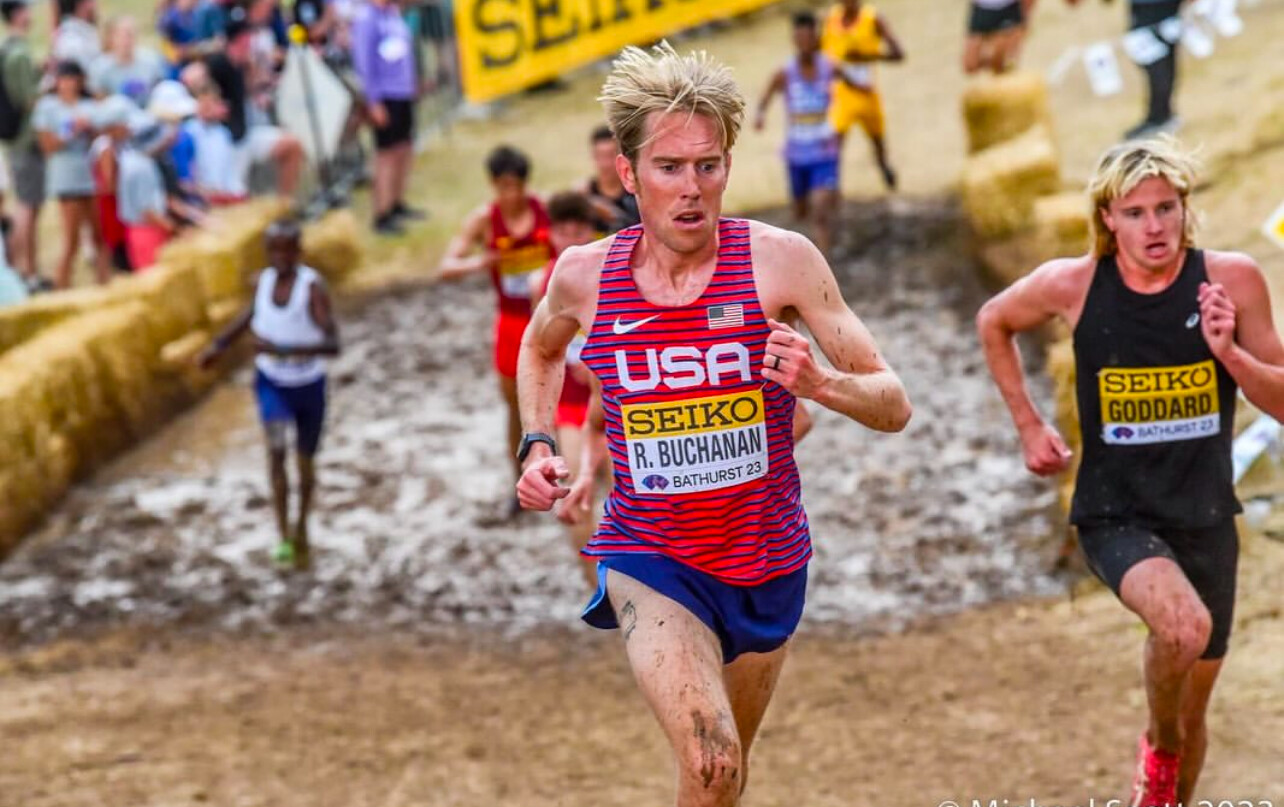
The concept of pacemaking is not a modern innovation. Its roots trace back to 1954 when Chris Brasher and Chris Chataway paced Roger Bannister to the first sub-four-minute mile. This historic event showcased the potential of strategic pacing in achieving unprecedented athletic feats.
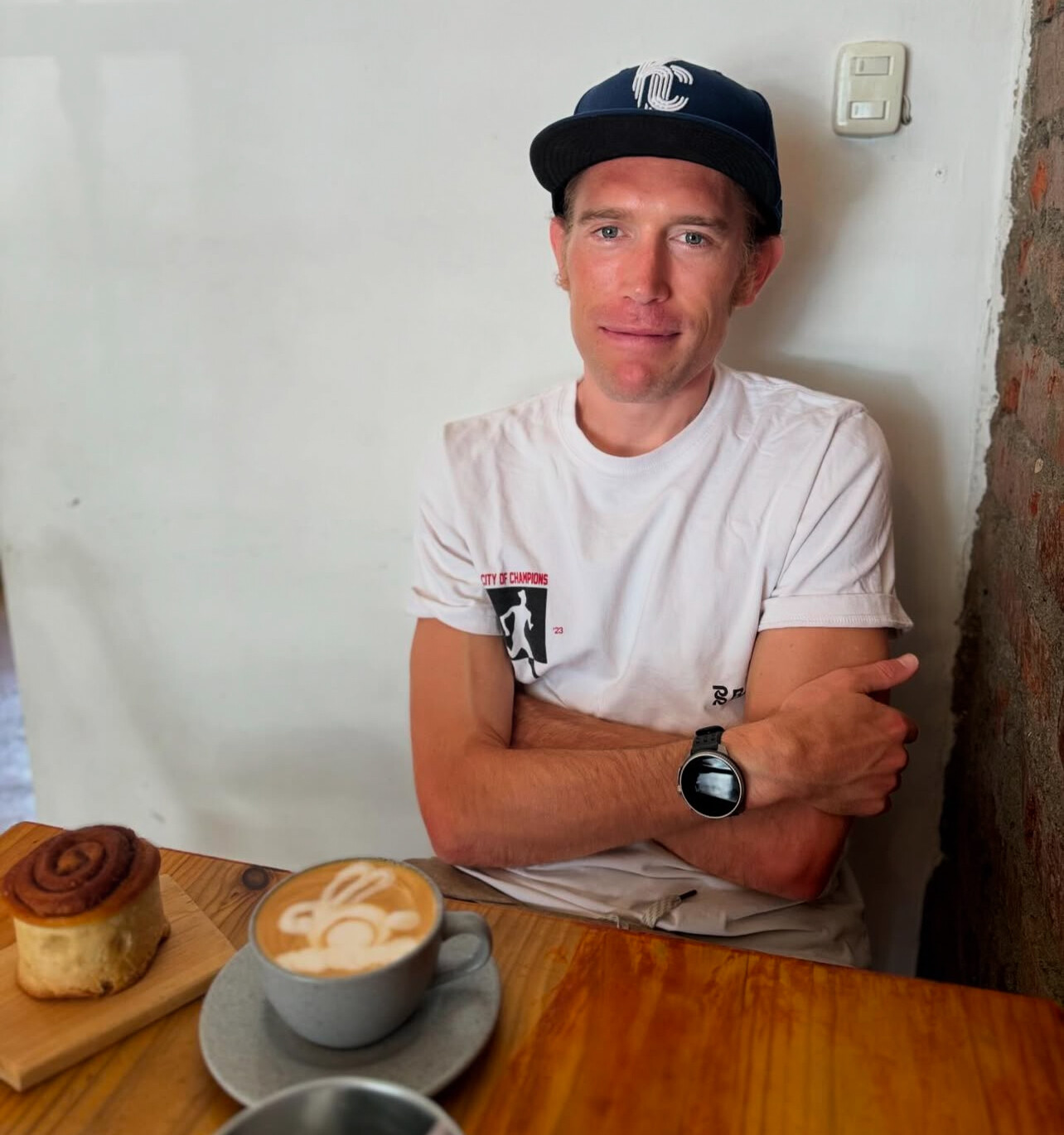
In contemporary marathons, pacemakers are integral, especially in events aiming for fast times and records. Races like the London and Chicago Marathons employ pacers to maintain a consistent, swift pace, enhancing the event’s prestige and competitive allure. Conversely, marathons such as Boston and New York prioritize tactical racing and do not utilize pacemakers, fostering a different competitive atmosphere.
The responsibilities of a pacemaker are multifaceted. They must possess the physical capability to sustain target paces comfortably, often requiring personal bests significantly faster than the pace they are assigned to set. Contracts typically outline specific distances and paces, with incentives for exceeding expectations. While some races mandate that pacemakers drop out at predetermined points, others allow them to complete the race, potentially influencing the final standings.
The Psychological and Physiological Impact of Pacing
Beyond the physical benefits, pacemakers offer psychological advantages. Running alongside a pacer can reduce the mental burden of pace management, allowing athletes to focus on other aspects of their performance. Studies have shown that runners perceive efforts as less strenuous when following a set pace, potentially enhancing overall performance.
Physiologically, pacemakers help mitigate air resistance, enabling runners to conserve energy. Research indicates that drafting behind a pacer can reduce oxygen consumption by approximately 8% at certain speeds, underscoring the strategic advantage in distance running.
The Debate: Purity of Competition vs. Record-Breaking Performances
The utilization of pacemakers is not without controversy. Critics argue that their presence can detract from the competitive essence of racing, transforming events into time trials rather than head-to-head contests. This perspective suggests that pacemakers may provide an undue advantage to certain athletes, potentially overshadowing the unpredictability and strategic depth that characterize traditional racing.
Proponents, however, contend that pacemakers elevate the sport by facilitating record-breaking performances and pushing the boundaries of human potential. They argue that the presence of pacers can lead to more exciting and dynamic races, showcasing the zenith of athletic achievement.
The Chicago Marathon exemplified the profound impact a pacemaker can have on an athlete’s performance. The collaboration between Sifan Hassan and Reid Buchanan not only led to a record-setting run but also highlighted the intricate balance of strategy, trust, and mutual ambition in elite marathon racing. As the sport continues to evolve, the role of pacemakers will undoubtedly remain a focal point of both innovation and debate, shaping the future landscape of long-distance running.
by Outside online with Boris Baron
Login to leave a comment
The Rush to Discredit Greatness – Why Do We Doubt Record-Breaking Performances?
When news broke that Jacob Kiplimo had run an astonishing 56:42 half marathon, the immediate reaction on social media was a mix of awe, skepticism, and outright accusations of cheating. Many simply couldn’t believe that a human could run that fast.
By Bob Anderson, Editor of My Best Runs
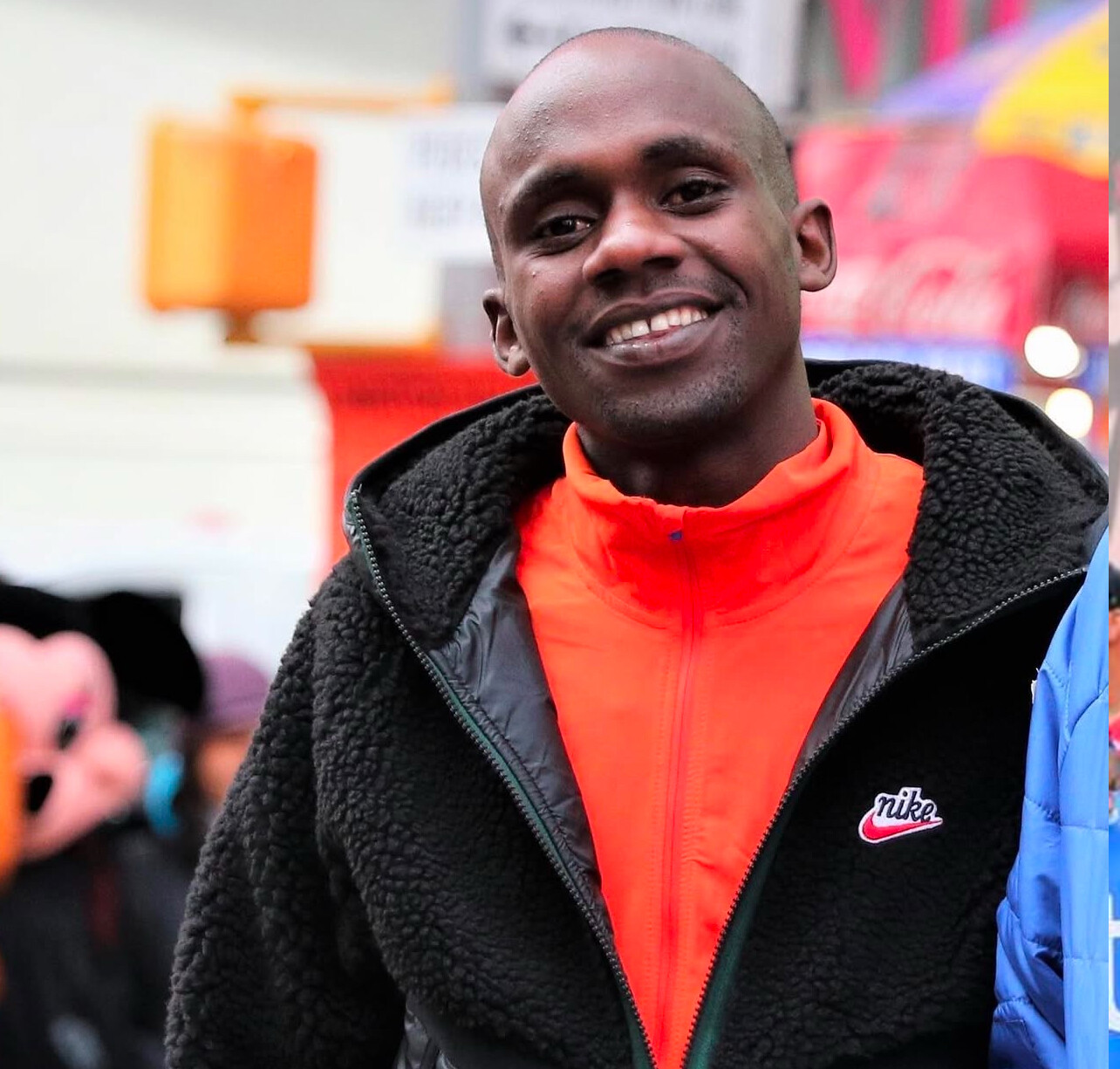
I understand why people might be shocked. This was not just a fast race—it was arguably the greatest distance running performance ever. Kiplimo’s time shattered previous records and redefined what we thought was possible over 21K. But should disbelief automatically lead to accusations?
The reality of record-breaking feats
Throughout history, incredible performances have often been met with doubt. In 1954, Roger Bannister’s sub-4-minute mile seemed superhuman, but today, elite high schoolers chase that mark. When Eliud Kipchoge broke the two-hour marathon barrier (albeit in a controlled environment), people debated how much was due to pacing, shoes, or course setup.
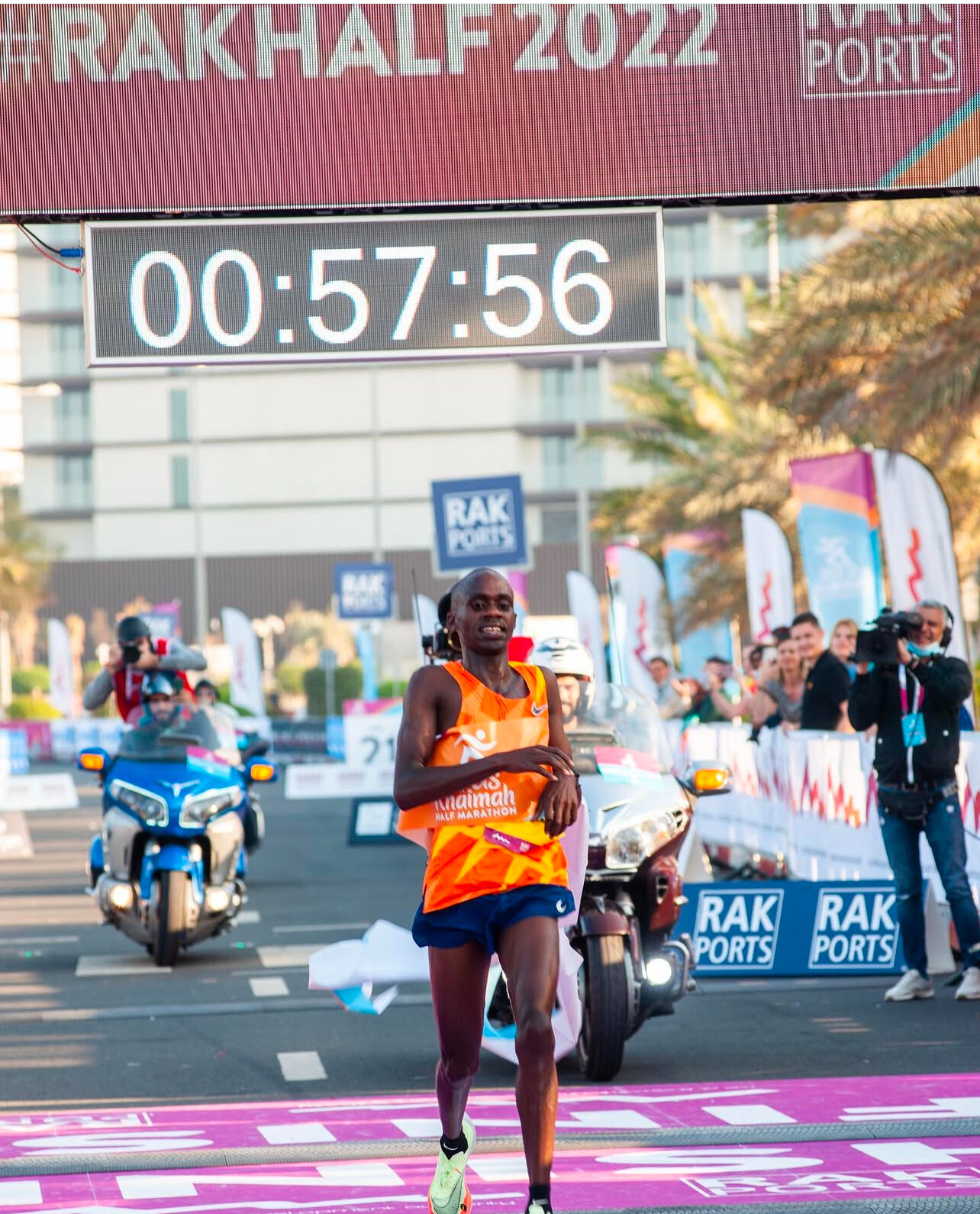
Now, with Kiplimo’s 56:42, we see the same pattern. Questions arise:
Was the course accurate? This will be verified before the record is ratified.
Did he use performance-enhancing drugs (PEDs)? As far as we know, he has passed every drug test, and accusations without evidence are unfair.
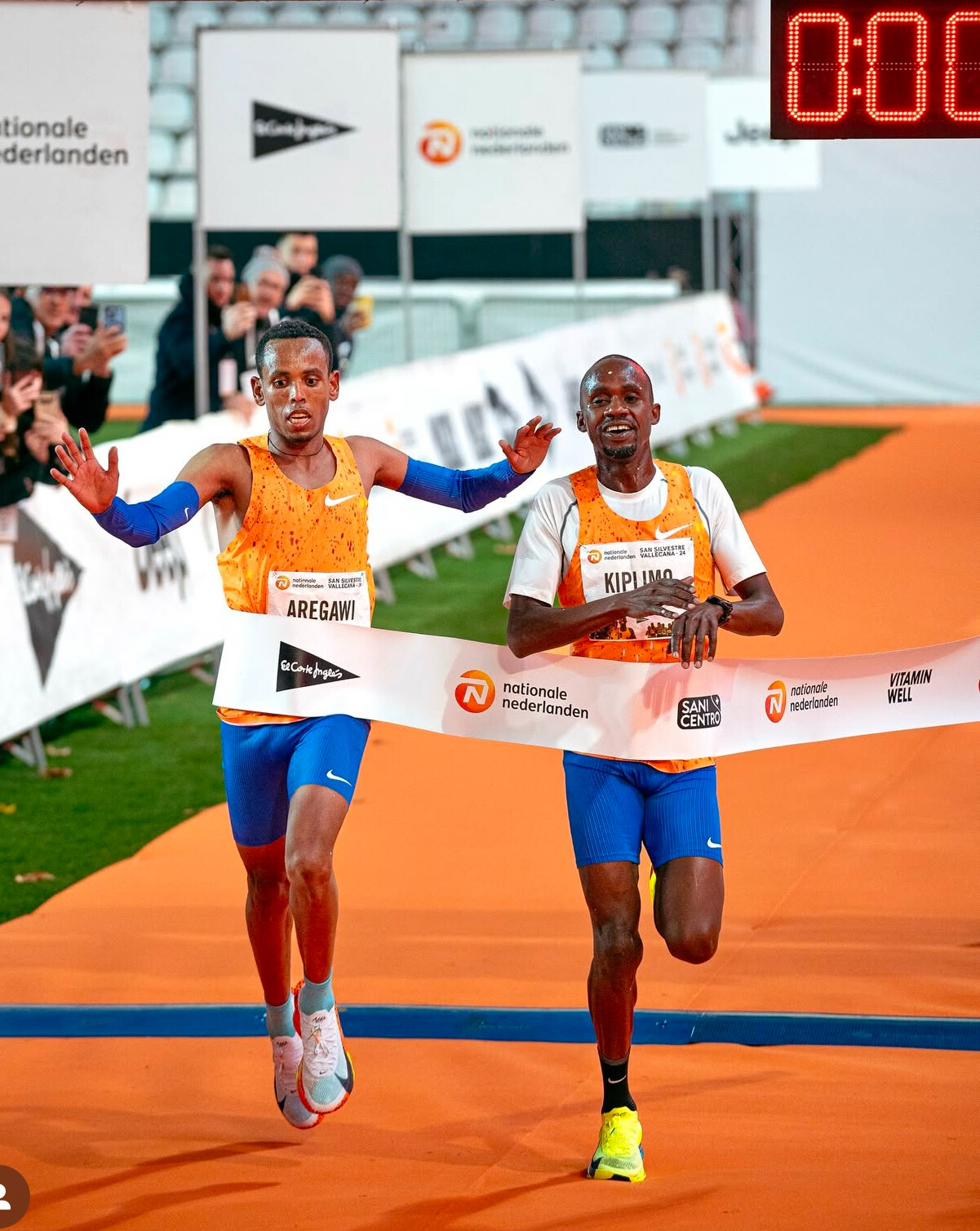
What about Nike’s super shoes? Yes, he wore them, but these shoes are legal under World Athletics regulations.
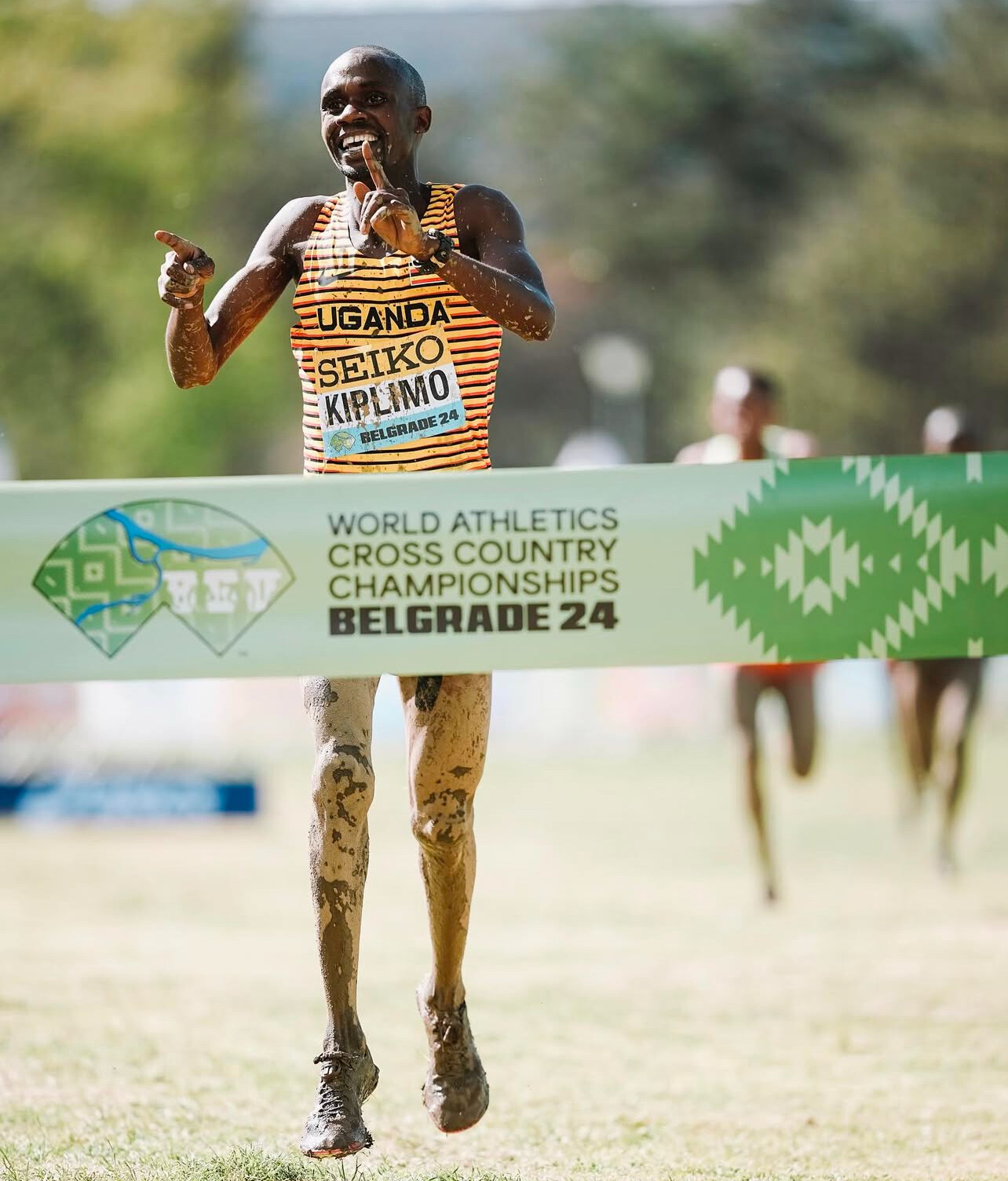
These are reasonable questions to ask, and the governing bodies will do their due diligence. But what’s frustrating is the knee-jerk reaction of immediately assuming foul play.
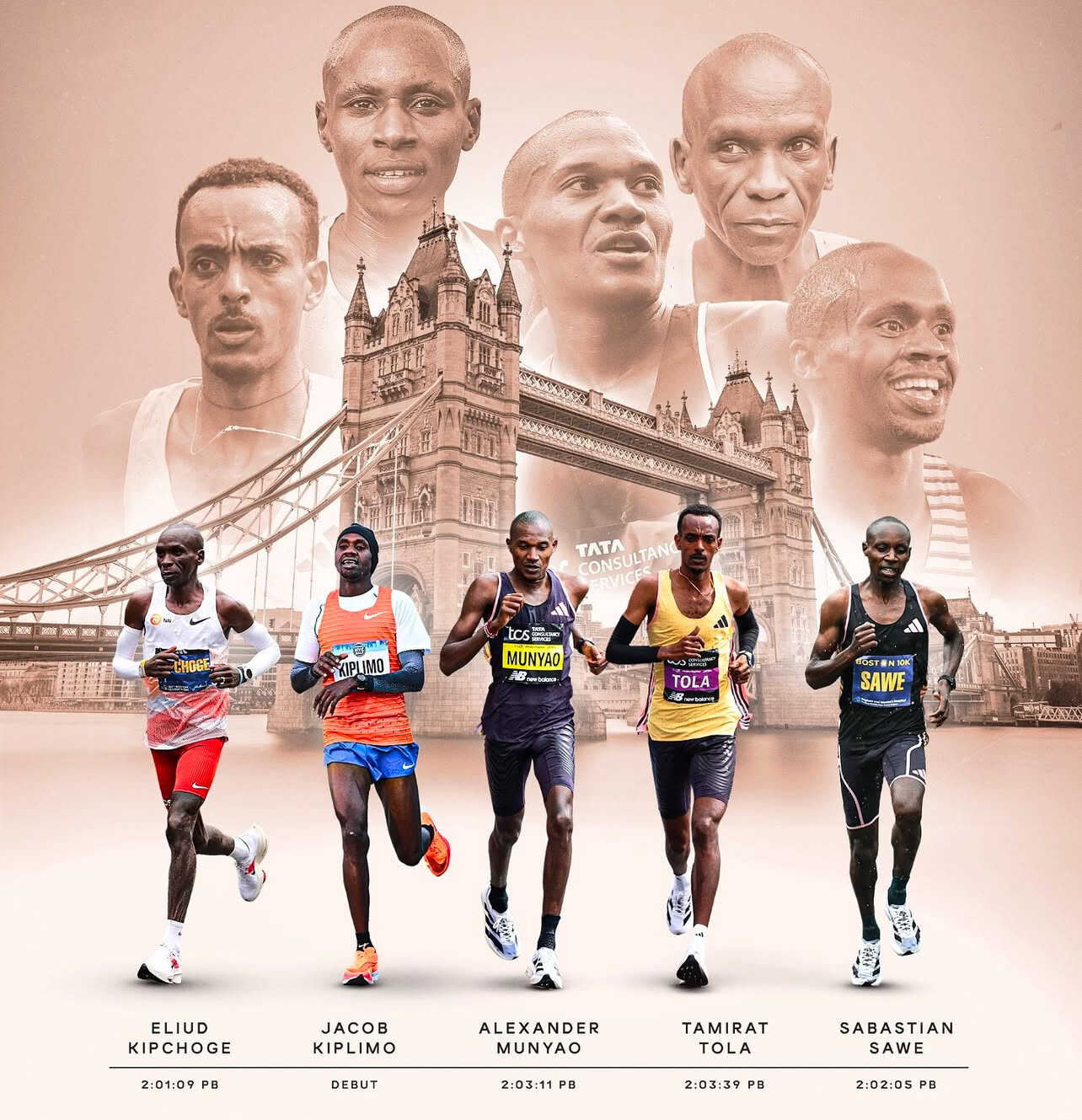
The culture of doubt in modern running
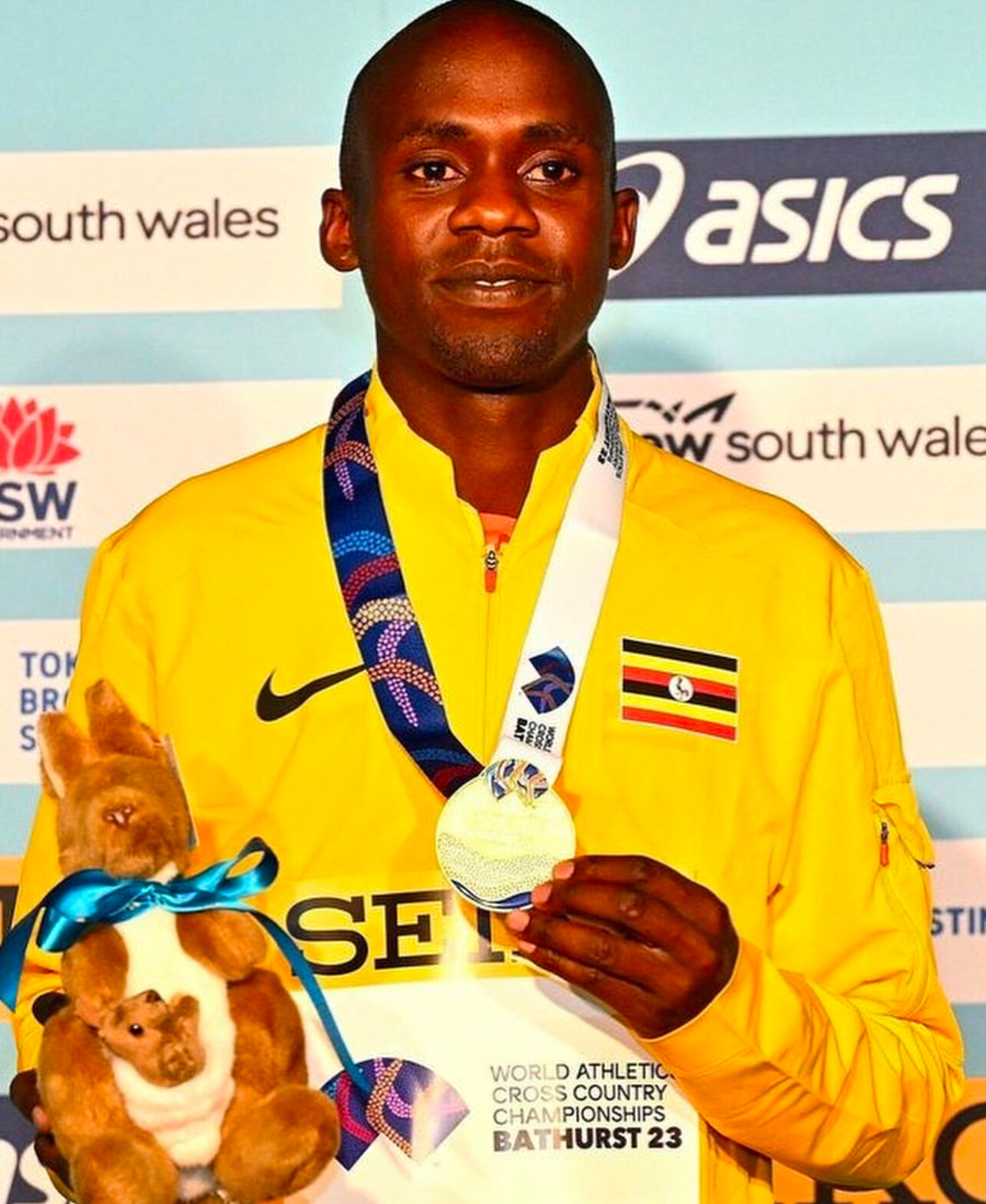
Why do some past champions and fans rush to discredit new performances? Some of it comes from personal experience—many former elite runners trained incredibly hard, and when they see times they never thought possible, it’s natural to wonder what changed. Some of it also comes from a real history of doping scandals in the sport, from Ben Johnson to Lance Armstrong to the Russian state-sponsored program.
But there’s another factor—social media. Unlike in Bannister’s era, when skepticism was confined to private conversations, today’s doubts explode instantly across the internet. A single tweet suggesting “this must be doping” spreads like wildfire, often without evidence.
Jacob Kiplimo is no stranger to records
Let’s not forget that this is not Kiplimo’s first world record. He has been at the top of the sport for years, previously holding the half marathon world record at 57:31 before Kelvin Kiptum broke it. He has consistently performed at the highest level, winning Olympic and World Championships medals. Are the same people suggesting he cheated back then too? Or is it only now, when the record has taken a dramatic leap, that they feel the need to discredit him?
Innocent until proven guilty
In sports, as in life, we must be careful about making baseless accusations. If evidence emerges that Kiplimo cheated, that’s one thing. But until then, we should celebrate an incredible performance and let the process of verification take its course.
To those quick to assume wrongdoing, I ask—what if you’re wrong? What if Kiplimo is simply that good? Greatness should inspire us, not immediately make us suspicious. Until proven otherwise, this was a historic day for distance running—one that deserves recognition, not reckless doubt.
by Bob Anderson
Login to leave a comment
The Evolution of the High School Sub-4 Mile Club
On May 6, 1954, Roger Bannister made history by running the first sub-4-minute mile, clocking 3:59.4 in Oxford, England. His groundbreaking achievement redefined what was possible in middle-distance running, inspiring generations of athletes to chase the elusive mark.
For decades, breaking the 4-minute barrier remained an extraordinary feat, but in recent years, more high school runners in the United States have joined this exclusive club. As of February 2025, 23 American high school boys have accomplished this milestone, with notable additions in 2024 and 2025.
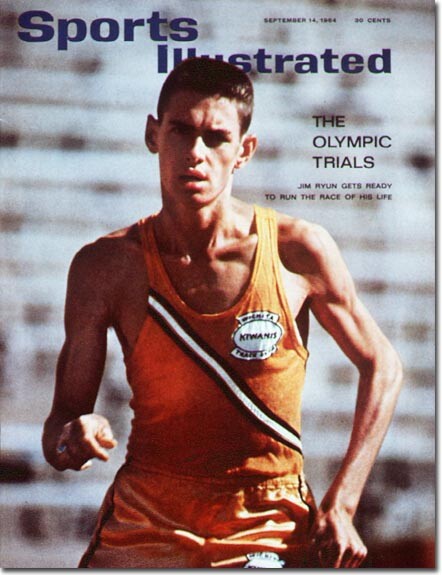
The Latest High School Runners to Break Four Minutes
The most recent athletes to achieve the sub-4-minute mile in high school competition are:
- Drew Griffith – 3:57.72 (May 30, 2024, Festival of Miles, St. Louis, Missouri)
- JoJo Jourdon – 3:59.87 (February 3, 2024, New Balance Indoor Grand Prix, Boston, Massachusetts)
- Zachary Hillhouse – 3:59.62 (June 16, 2024, New Balance Nationals Outdoor, Philadelphia, Pennsylvania)
- Owen Powell – 3:57.74 (February 15, 2025, UW Husky Classic, Seattle, Washington)
These runners continue to prove that the sub-4-minute mile, once thought to be nearly impossible for young athletes, is an achievable milestone with the right combination of talent, training, and opportunity.
Jim Ryun and Alan Webb: The Legends of the High School Mile
Jim Ryun: A Historic Career
Jim Ryun was the first high school runner to break the 4-minute mile, running 3:59.0 in 1964 as a junior. He later set the national high school record of 3:55.3 in 1965, a time that stood for 36 years.
After his historic high school career, Ryun went on to break the world record in the mile twice—first in 1966, and then again in 1967 when he ran 3:51.1. At 19 years old, he remains the youngest world record holder in the mile to date. His record stood for nine years before being broken in 1975.
Ryun represented the United States in three Olympic Games (1964, 1968, and 1972), winning a silver medal in the men’s 1500m at the 1968 Olympics. His dominance in middle-distance running made him one of the greatest milers in history.
Alan Webb: The New Generation's Record-Breaker
In 2001, Alan Webb broke Ryun’s long-standing high school mile record by running 3:53.43 at the Prefontaine Classic. Webb’s performance redefined expectations for young milers and set a new benchmark for high school runners.
Webb continued his success post-high school and later set the American record in the mile, running 3:46.91 in 2007. This remains one of the fastest mile performances ever by an American.
Despite his success, Webb’s professional career was marked by injuries, including Achilles tendonitis and stress fractures, which affected his consistency. However, his high school and professional achievements cemented his place as one of the greatest milers in U.S. history.

The Complete List of High School Sub-4 Milers
Below is the full list of American high school runners who have broken the 4-minute mile, ranked by their fastest time achieved during high school competition:
- Alan Webb (first photo) – 3:53.43 (May 27, 2001, Prefontaine Classic, Eugene, Oregon)
- Jim Ryun (second photo) – 3:55.3 (June 27, 1965, AAU Championships, San Diego, California)
- Colin Sahlman (third photo) – 3:56.24 (May 28, 2022, Prefontaine Classic, Eugene, Oregon)
- Drew Griffith – 3:57.72 (May 30, 2024, Festival of Miles, St. Louis, Missouri)
- Hobbs Kessler – 3:57.66 (February 7, 2021, American Track League Invitational, Fayetteville, Arkansas)
- Drew Hunter – 3:57.81 (February 20, 2016, NYRR Millrose Games, New York City, New York)
- Gary Martin – 3:57.89 (June 2, 2022, Festival of Miles, St. Louis, Missouri)
- Connor Burns – 3:58.83 (June 2, 2022, Festival of Miles, St. Louis, Missouri)
- Tim Danielson – 3:59.4 (June 11, 1966, San Diego Invitational, San Diego, California)
- Reed Brown – 3:59.30 (June 1, 2017, Festival of Miles, St. Louis, Missouri)
- Matthew Maton – 3:59.38 (May 8, 2015, Oregon Twilight Meet, Eugene, Oregon)
- Grant Fisher – 3:59.38 (June 4, 2015, Festival of Miles, St. Louis, Missouri)
- Michael Slagowski – 3:59.53 (April 29, 2016, Jesuit Twilight Invitational, Portland, Oregon)
- Leo Daschbach – 3:59.54 (May 23, 2020, The Quarantine Clasico, El Dorado Hills, California)
- Simeon Birnbaum – 3:57.53 (June 1, 2023, Festival of Miles, St. Louis, Missouri)
- Rheinhardt Harrison – 3:59.33 (June 3, 2022, Golden South Series #2, Tarpon Springs, Florida)
- Marty Liquori – 3:59.8 (June 23, 1967, AAU Championships, Bakersfield, California)
- Lukas Verzbicas – 3:59.71 (June 11, 2011, Adidas Grand Prix, New York City, New York)
- JoJo Jourdon – 3:59.87 (February 3, 2024, New Balance Indoor Grand Prix, Boston, Massachusetts)
- Zachary Hillhouse – 3:59.62 (June 16, 2024, New Balance Nationals Outdoor, Philadelphia, Pennsylvania)
- Owen Powell – 3:57.74 (February 15, 2025, UW Husky Classic, Seattle, Washington)
- Tinoda Matsatsa – 3:58.70 (June 1, 2023, Festival of Miles, St. Louis, Missouri)
- Jackson Heidesch – 3:59.08 (June 1, 2023, Festival of Miles, St. Louis, Missouri)
The Sub-4 Mile Remains an Iconic Benchmark
Roger Bannister’s 1954 breakthrough redefined human potential in distance running, and the high school sub-4-mile club continues to grow. As competition and knowledge improve, the question isn’t whether more young runners will join the club, but just how fast the next generation can go
Login to leave a comment
Commonwealth Games 2026: Mile Race Returns and Mixed 4x400m Relay Introduced
The Glasgow 2026 Commonwealth Games will mark a historic shift in athletics, with the reintroduction of the mile race, replacing the traditional 1500m event, and the addition of the mixed 4x400m relay. The Games will take place from July 23 to August 2, 2026, featuring a 10-sport programme across four venues, with Scotstoun Stadium hosting the athletics competitions.
The Return of the Commonwealth Mile

For the first time since 1966, the mile race will make its return, paying tribute to the legendary "Miracle Mile" at the 1954 Vancouver Commonwealth Games, where England’s Roger Bannister and Australia’s John Landy—the first two athletes to break the four-minute barrier—battled head-to-head in one of the most iconic races in history.
World Athletics President Sebastian Coe welcomed the decision, emphasizing the mile’s significance within the Commonwealth:
"The one mile is the quintessential Commonwealth athletics event whose return to the Games in Glasgow 2026 I very much welcome. The mile is easy to understand—four laps of the track—and remains a standard everyday measurement across the Commonwealth."
He further highlighted the race’s rich legacy:
"From 1930 through to 1966, the mile was the blue-riband event of each Games. Its place in international sports lore was secured when Sir Roger Bannister broke the four-minute barrier in May 1954. The magic of the mile continues to resonate with sports fans, and a ticket to watch its Commonwealth final will be one of the must-have seats in Glasgow next year."
New Additions: Mixed 4x400m Relay and Expanded Para Athletics Programme
Alongside the return of the mile, the mixed 4x400m relay will be introduced, further enhancing the athletics programme. Additionally, for the first time in Commonwealth Games history, para athletes will compete across all three major disciplines—jumping, throwing, and track events—cementing a new era of inclusivity in the sport.
The full event lineup is available on the Glasgow 2026 Commonwealth Games website, showcasing a programme designed to honor tradition while embracing innovation.
by Boris Baron
Login to leave a comment
The Commonwealth Games
The Commonwealth Games are coming to Victoria - bringing an action packed sports program to our regional cities and delivering a long-term legacy for our future. From 17 to 29 March 2026, Geelong, Bendigo, Ballarat, Gippsland and Shepparton will be on the world stage, attracting millions of viewers and creating thousands of jobs. The multi-city model will...
more...Eilish McColgan and Jack Rowe lead Vitality London 10,000 fields
Distance runners are part of 20,000-strong line-up the streets of London on Sunday with the Westminster Mile on Saturday
Fresh from her 67:45 at the Great North Run and victory at the Big Half earlier this month, Eilish McColgan heads the line-ups for the Vitality London 10,000 on the roads on Sunday (Sept 22).
About 20,000 runners will take part in the event the closed roads of the British capital on a route that travels past iconic landmarks such as Admiralty Arch, St Paul’s Cathedral, the Bank of England, Somerset House, Big Ben, the Houses of Parliament and Westminster Abbey, before finishing in front of Buckingham Palace.
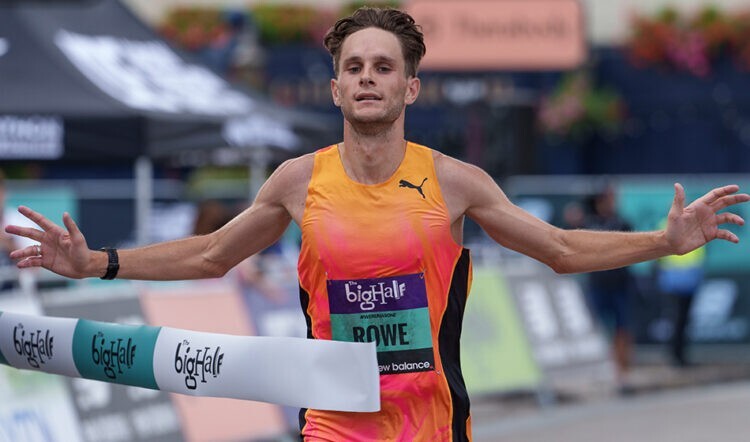
Jack Rowe, the men’s winner at the Big Half and 2023 Vitality London 10,000 winner, leads the men’s fields.
Also taking part are Jo Pavey, a three-times winner of the Vitality London 10,000 and five-times Olympian, plus wheelchair racer David Weir.

The previous day, on Saturday (Sept 21), the Vitality Westminster Mile will see athletes of all ages and abilities take on the route around St James’s Park.
This includes the British Milers’ Club Bannister Mile where runners will try to break four minutes in the 70th year since Roger Bannister became the first person to run under that mark.
The inaugural BMC Bannister Mile features Joe Wigfield, ranked eighth-fastest man in the country over 1500m this year (having set a personal best of 3:36.09 in July), and Katie Snowden, fourth-fastest woman over the distance in the UK in 2024 who narrowly missed out on qualification for Team GB at the Paris Olympics.
There will also be some veteran records on the line with current masters indoor champion over 1500m, James Thie, and world-record setting hairdresser-turned-steeplechaser, Kirstie Booth, targeting history in the over-45 categories.
by Jason Henderson
Login to leave a comment
Vitality London 10,000
The Vitality London 10,000 takes you past many landmark sites, including the London Eye, Buckingham Palace and the Bank of England – so you even get to do a bit of sightseeing along the way! You will run alongside elite runners and have coverage from the BBC, making this 10km one of the highest in profile of its kind....
more...Why the "Norwegian Method" Training Craze Is Here to Stay
In a highly anticipated race at the 2024 Prefontaine Classic, Jakob Ingebrigsten pitted his revolutionary "Norwegian method" of training against some of the best milers in the world.
The “Mile of the Century”—of the twentieth century, that is—was a duel between John Landy and Roger Bannister at the 1954 Empire Games in Victoria. The two men were, at the time, the only two sub-four-minute milers in the world: Bannister had beaten Landy to the punch by 46 days, but Landy was the reigning world record holder. Their end-of-season clash was as heavily anticipated as any heavyweight boxing duel. Landy led until the final bend, at which point he famously glanced over his left shoulder at precisely the moment that Bannister surged past on his right.

The mile of the current century, at least in terms of pre-race hype and intriguing storylines, took place on Saturday at the Prefontaine Classic track meet in Eugene. It was a gigantic multidimensional grudge match between Jakob Ingebrigsten, the blunt-speaking Norwegian wunderkind who won the 2021 Olympics at the tender age of 20 and whose training methods have sparked wholesale upheaval in the endurance world, and almost every runner who has beaten him or come close to it in recent years—most notably Josh Kerr, the Scotsman who upset him at last summer’s World Championships and has been engaged in an increasingly testy war of words with him ever since.
What gave the race an extra layer of significance, beyond the usual battle for personal supremacy, was that clash of training ideas. Ingebrigtsen is the foremost exponent of what has come to be known as the “Norwegian method” of endurance training. Its hallmark is carefully controlled workout intensities, pushing just hard enough to stimulate adaptation without incurring fatigue that would compromise the next workout. In Ingebrigtsen’s hands, that involves twice-a-week double threshold sessions: workouts like ten times a kilometer with one minute recovery in the morning and evening, with regular ear pricks to check lactate levels and keep the intensity in the right zone, on Tuesdays and Thursdays.
A similar approach has also taken Norwegians to the top of the podium in other sports like triathlon and cross-country skiing, and athletes from other countries have begun emulating it. Norwegian-style training is “the big, sexy thing,” as U.S. miler Hobbs Kessler put it. It might even be “the next step in the evolution of distance running training,” as a group of sports scientists suggested in an academic paper last year (which I wrote about here). It’s very hard to do controlled studies of entire training philosophies, as opposed to specific workouts. So the best litmus test, I suggested, would be clashes on the track leading up to the Paris Olympics. Saturday in Eugene was the first such test.
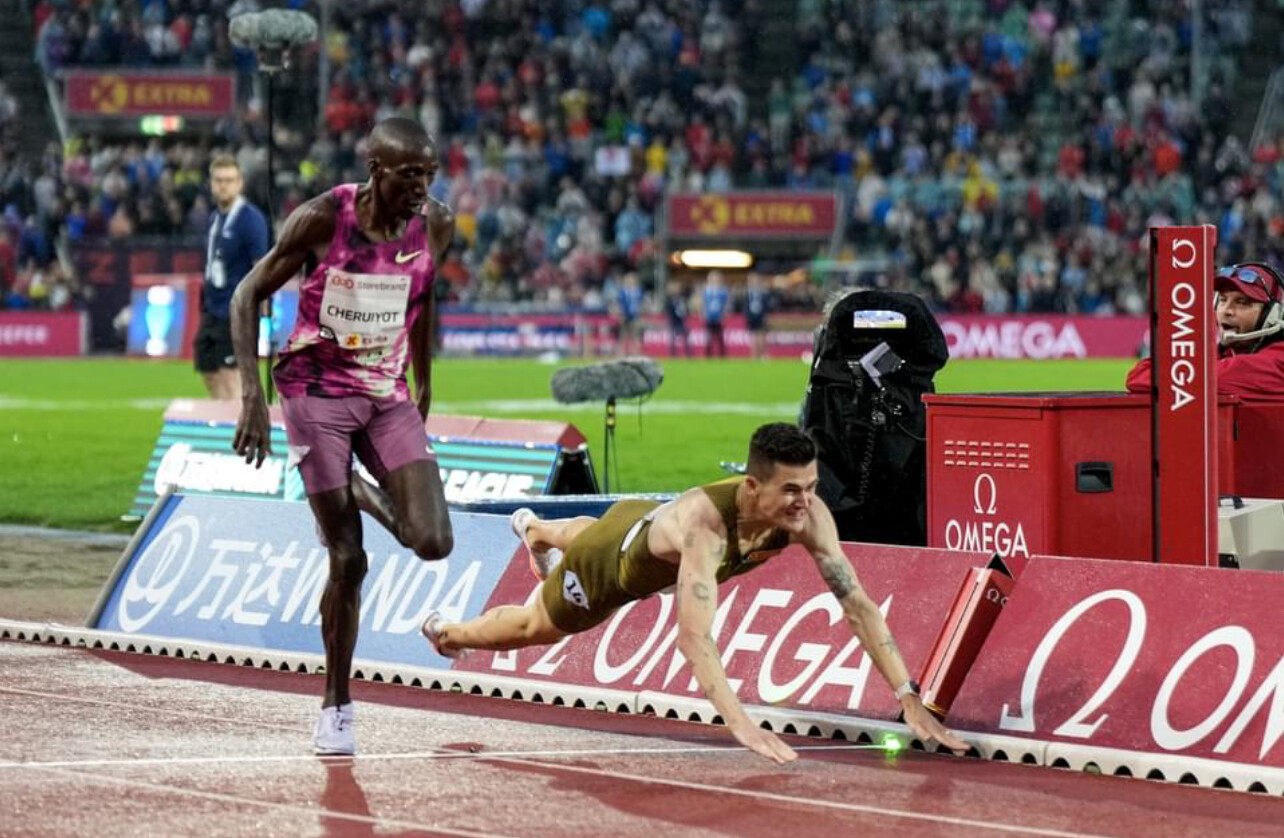
Sexy new things don’t stay sexy and new forever, and it’s fair to say that some of the shine of Norwegian training has worn off since last year. The most notable reputational hit was Kerr’s 1,500-meter win at last summer’s World Championships, kicking past Ingebrigtsen in the final lap after the Norwegian had led most of the race. One loss could be blamed on bad luck, but that made three times in a row: another Scottish runner, Jake Wightman, had outkicked Ingebrigtsen in strikingly similar fashion at the 2022 World Championships, and Ethiopian star Samuel Tefera did the same at the 2022 World Indoor Championships. That starts to look like a systemic flaw in the training approach. While Ingebrigtsen was carefully monitoring his moderate-intensity threshold intervals, Kerr and Wightman and Tefera were presumably ripping off all-out sprints—and they had a racing gear that he seemed to lack.
In Eugene, a rabbit led the field through a quick first half-mile. When he stepped off, it was Kenyan runner Abel Kipsang who pushed onward, with Ingebrigtsen following patiently behind. This was already a surprise: Ingebrigtsen is usually the one pushing the pace. Then, with a lap and a half still remaining, it was the fast finisher Kerr who surged into the lead and made an early bid for victory. Each man, it seemed, was playing the other’s game. The last lap ticked by in slow motion, Kerr unable to pull away and Ingebrigtsen unable to close the gap. That’s how it finished: Kerr in 3:45.34, Ingebrigtsen in 3:45.60, and then seven more men under the once-impregnable 3:50 barrier. In 11th place was Cam Myers, a 17-year-old from Australia, with a time of 3:50.15—two seconds faster than Ingebrigtsen himself ran at Pre as a 17-year-old in 2018.
It would be as foolish to give up on Norwegian training based on a few individual losses as it would be to anoint it the “next step” on the basis of a few individual wins. But if Ingebrigtsen keeps losing, that’s going to reinforce doubts about whether his approach is as effective for head-to-head racing as it is for time trials. There are plenty of caveats: for example, an Achilles injury disrupted Ingebrigtsen’s training for several months over the winter. But there are also other questions. What has happened to his older brothers Henrik and Filip? Both were world-class milers in their own right, but both have been struggling in recent years, as have other prominent Norwegian athletes like Olympic triathlon champion Kristian Blummenfeld, raising questions about the sustainability of the Norwegian approach.
And then there’s the fact that, despite all the hype about the mile, the real marquee event at Pre turned out to be the women’s 10,000 meters, where Kenya’s Beatrice Chebet became the first woman to dip under 29 minutes with a world-record clocking of 28:54.14. Kenyan runners (and their Ethiopian rivals) have been at the top for so long that it’s easy to take their dominance for granted. When I was in college in the 1990s, we were all fascinated by “the Kenyan Way.” That was the subtitle of Toby Tanser’s 1997 book, Train Hard, Win Easy. The secret, of course, was that there was no secret. There was a famous (and almost certainly apocryphal) anecdote about a Kenyan coach who was asked what separated his top runners from the merely good ones. All of them had grown up running to and from school each day, he explained; the champions also went home for lunch.
Part of the current fascination with the Norwegian training method is the suggestion that there is, in fact, a secret—a quantifiable formula, expressed in milimoles per liter of lactate in your blood, to optimize your training, rather than simply an admonition to work hard. But that’s a reductive view of what Ingebrigtsen and his Nordic peers are aiming for. The underlying philosophy of Norwegian training is that a harder workout isn’t always a better one, because it will take too long to recover from. This is hardly a new insight, but in the great merry-go-round of training fads, it was perhaps overdue for a resurgence.
In fact, the original Mile of the Century had a similar subtext. Bannister was the light-training amateur who ran on his lunch hour; Landy was a workout hero with “an insatiable appetite for interval running,” as Bannister wrote. “The great contrast in our training methods was not lost of the Press.” Bannister won the race, but it’s Landy’s training approach that proved to be more influential on subsequent generations. As Ingebrigtsen’s final showdown with his rivals in Paris looms, that’s worth remembering: even if he loses, and even if we decide that lactate meters are unnecessarily complicated, we might still have something to learn from his unorthodox training.
by Outside Online
Login to leave a comment
Is Running a Four-Minute Mile the Secret to Longevity?
A new study shows that running may increase your longevity and that elite runners live longer than their peers.
The 200th person to break four minutes for the mile, according to the National Union of Track Statisticians, was a Swiss runner named Rolf Gysin. On August 16, 1974, Gysin clocked a 3:56.88. It wasn’t a big surprise: he had already run 3:37 for 1,500 meters the year before, which is equivalent to about a 3:54 mile, and had competed in the Munich Olympics a few years earlier. He was 22 when he broke four; he’s now 72—and still kicking, so to speak.
Gysin was the last guy to make the cut in a new British Journal of Sports Medicine study assessing the longevity of the first 200 runners to break four minutes in the mile, timed to coincide with the seventieth anniversary of Roger Bannister’s famous run. Sub-four doesn’t have the cachet it used to—Track and Field News announced last year that they would stop tracking American sub-fours because the barrier was no longer relevant, though it later reversed the decision—but it’s still a big deal now and was even more so a few generations ago. So did the rigors of pushing their bodies past a once impassable barrier shave years off the lives of these supermen? In a word, no. The study adds another data point to the general finding that elite endurance athletes—Olympians, Tour de France riders, runners—are rewarded with increased longevity. What this finding actually means, though, is perhaps less obvious than it seems.
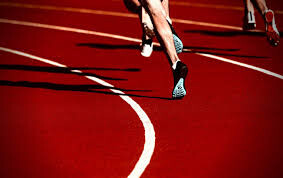
The study was led by Stephen Foulkes and Mark Haykowsky of the University of Alberta along with André La Gerche of St. Vincent’s Hospital Melbourne in Australia. Its set-up is straightforward. Take the first 200 sub-four milers, and hit up Google to see when they were born and when or if they died. Overall, 60 of the 200 men had died, at an average age of 73.6. Those still alive had an average age of 77.6 and counting. The researchers weren’t able to obtain causes of death for everyone, but of the seven who died before the age of 55, six were traumatic deaths or suicide and one was cancer.
For each runner, they then calculated their life expectancy on the day they broke four. For Bannister, the relevant comparison was how long a 25-year-old Englishman would be expected to live in 1954; for Gysin, it was a 22-year-old Swiss in 1974. Then they aggregated the results to see whether the runners had greater longevity than their age- and sex-matched countrymen.
Here’s what the survival curve looks like, with the x-axis showing years since first sub-four mile:
On average the runners outlive the matched general population by 4.7 years. There’s a generational effect: those who broke four in the 1950s outlived their peers by 9.2 years, while those who did it in the 1960s or 1970s had an edge of 5.5 or 2.9 years, respectively. That could be because the health of the general population is improving thanks to better medical care. But a bigger factor, I assume, is that most of the milers are still alive. Check back in another decade or two, and Rolf Gysin and his 1970s peers will (touch wood) have added to their longevity stats.
The main spur for this study was the long-running debate on whether “extreme” levels of exercise can damage your health—and lead to heart problems in particular. You may think that running a mile isn’t very extreme. But training to run a sub-four-minute mile is definitely extreme: this analysis from a few years ago found that top milers generally run between 75 and 105 miles a week, with around 20 percent of it at very high intensities. So it’s good news to find that barrier-breaking milers aren’t dropping like flies.
Still, there are a bunch of caveats to this kind of study. One is that outliving the average person is a pretty low bar to clear. How do athletes fare compared to someone doing the modest amount of exercise recommended by public health guidelines? One estimate found that the equivalent of just five hours of brisk walking per week extends your life expectancy by 4.2 years. Other estimates, to be fair, are less optimistic—but a comparison of sub-four milers with, say, 5:00 or 6:00 milers rather than the average couch-potato would be interesting.
The other big question is how much of the milers’ longevity is a result of genetics. I’m of the opinion that breaking four is something that only a small fraction of the world’s population can achieve, regardless of how hard they train, how healthily they eat, how fervently they believe in themselves, and how springy their shoes are. Perhaps the traits that make a four-minute mile feasible—strong heart, robust metabolism, great immune system—also favor longevity. Maybe Bannister would have lived just as long even if he had never run a step.
These are tricky problems to solve: you can’t randomly assign people to follow one lifestyle or another for decades, so every dataset has weaknesses. This particular study is also, yet again, all men. The women’s mile record is Faith Kipyegon’s 4:07.64, set last summer. At first I was thinking you could pick an alternate benchmark to study in women, like sub-four for 1,500 meters. But that barrier wasn’t broken until 1976, and by 2000 only 64 women had done it, most of whom are presumably still alive. Even if you pick lower thresholds, there simply weren’t that many women competing until longer track events were added to the Olympic program in the 1970s. Unfortunately, this sort of longevity analysis for female endurance runners will likely have to wait a few more decades.
But even if you could tease out the effects of genetics and training, I suspect there might still be something missing from the analysis: the mystique of the four-minute barrier. I’d love to see a comparison of those first 200 sub-four milers with their contemporaries who ran between 4:00.0 and 4:01.0 in the same era—the near-misses. Back in 2018, a Dutch economist named Adrian Kalwij studied the longevity of U.S. Olympic medalists between 1904 and 1936. All the medalists lived longer than the general population, but silver medalists lived about three years less than gold or bronze medalists. There was something about being “first loser” that was even worse than coming third—an observation that has been confirmed by facial expression analysis on the podium, which finds that silver medalists are the least likely to smile.
Kalwij is interested in the effect of socio-economic status (SES) on health: why do rich people live longer than poor people, and by how much? But his theory is that it’s not just about resources; it’s also about the psychological effects of winning and losing—whether it’s a race, or a spot at an elite college, or a job promotion. In a follow-up study in 2019 (which I wrote about here), he found that the effect of SES on the longevity of Dutch Olympians has been growing, from no effect in the earliest cohort to a difference of 11 years between high- and low-SES athletes in the most recent cohort. That reflects, he believes, an increasingly winner-take-all society in which we all have more opportunities to succeed but also more opportunities to fail. Those who accrue loss after loss in these micro-competitions pay a price in our health.
Whenever I see a study about the longevity of athletes—or, say, Oscar winners, who live longer than Oscar nominees—I’m reminded of Kalwij’s work. I have no doubt that physical activity is the single most powerful lever we have to improve health. I’m fairly confident that those benefits accrue even to those who train really hard, even if the new miler study doesn’t prove it. But I also wonder how much you benefit from the transcendent experience of reaching the top of the mountain—perhaps because my own best 1,500 time, according to World Athletics scoring tables, is equivalent to a 4:00.03 mile. Ouch.
by Outside Online
Login to leave a comment
Sub-4-minute milers live longer, new research shows
Breaking the 4-minute mile barrier is a testament to natural speed and hard work, but could it also predict longevity? Researchers recently tracked the first 200 athletes to break the four-minute mile mark between 1954 and 1974, and discovered a striking trend in terms of the health and longevity of the athletes.
Elite athletes are known to have bigger hearts due to sustained aerobic output, and in the past, some research has indicated the belief that this could negatively impact their health and longevity. This study demonstrated the opposite. The study was released to mark the 70th anniversary of Sir Roger Bannister‘s sub-four-minute mile and revealed that the elite runners outlived the general population by an impressive margin.
On May 6, 1954, Bannister successfully broke the four-minute barrier at Oxford’s Iffley Road track, clocking 3:59.4. Until then, the four-minute mile was considered by many to be impossible. Some runners had come close, but the fastest among them could only muster 4:01. Bannister ushered in a new era of runners with his record-breaking time, and as of 2022, the four-minute barrier had been broken by more than 1,750 athletes.
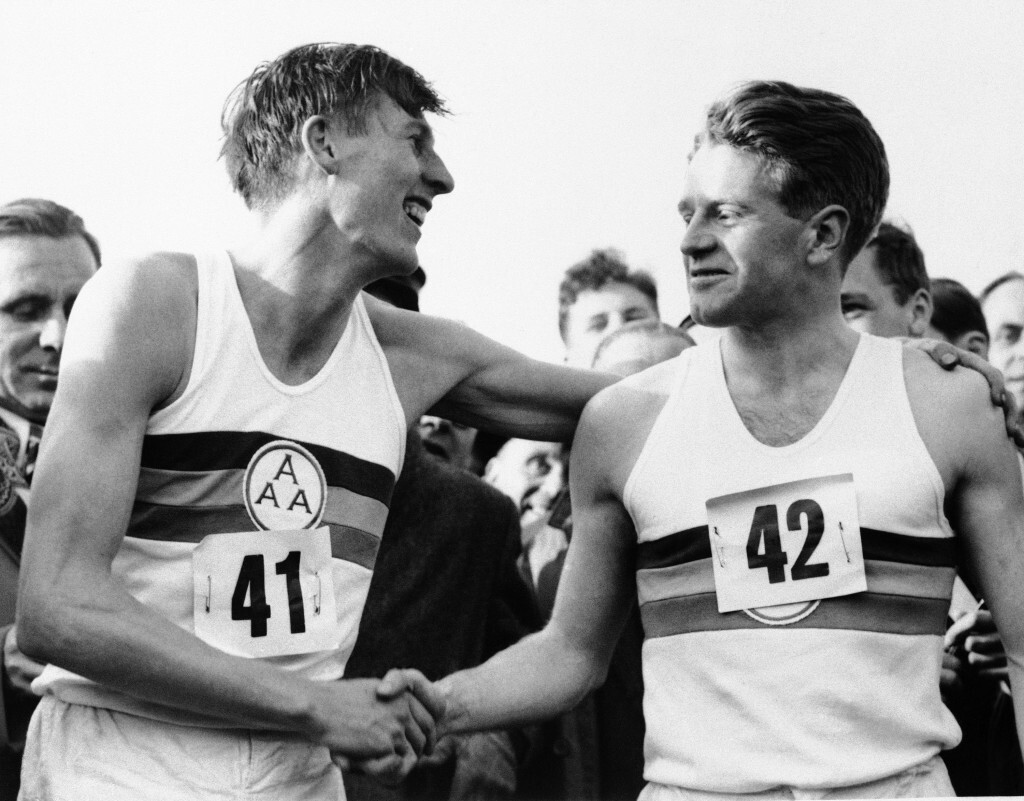
A team led by scientists from Victor Chang Cardiac Research Institute in Australia who partnered with Canadian researchers gained access to the health records of the first 200 people on record who ran sub-four-minute miles. The list of speedsters included athletes from the U.K., Australia, France, New Zealand and the U.S. The runners (all male) were all born between 1928 and 1955, and most were still alive. These top-tier athletes outlived the general population by an impressive margin.
“Breaking the four-minute mile was an extraordinary achievement 70 years ago and revealed just what the human body can achieve,” said Professor Mark Haykowsky, Research Chair in Aging and Quality of Life in the University of Alberta’s faculty of nursing. “It set off a wave of runners following in Sir Roger’s mighty footsteps.
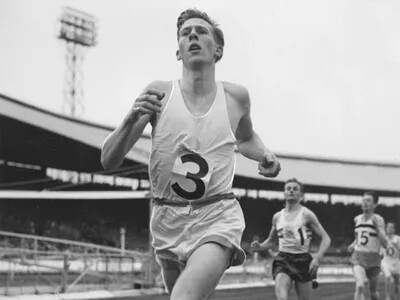
“Remarkably, we found that, like Sir Roger, who lived to the ripe old age of 88, most of the first runners also lived well into their 70s, 80s and a majority are alive and healthy today.”
On average, the runners enjoyed nearly five additional years of life over the general population. The researchers also found intriguing patterns across different decades. Athletes who achieved this milestone in the 1950s surpassed their peers by a staggering nine years, on average, while those from the 1970s still boasted an extra five and a half years of life.
With an average age of 77 among the surviving athletes, these findings challenge conventional notions of aging and highlight the remarkable impact rigorous physical training has on longevity.
by Keeley Milne
Login to leave a comment
Should sub-four be no more?
Over the weekend at Boston University’s David Hemery Valentine Invitational, 52 runners went sub-four in the men’s mile, including five Canadians: Cameron Proceviat, Matthew Beaudet, Charlie Dannatt, Alec Purnell and Foster Malleck. With the advancement of super shoes and the responsiveness of the Boston indoor track, the sub-four-minute mile is still impressive, but is it as remarkable as it used to be?
Last week, Track and Field News, a database that has kept track of sub-four miles since Roger Bannister became the first man to break the barrier in 1954, announced it would no longer update its chronological list of runners who break the barrier. The site released a statement: “The advent of super-shoes has bombarded the 4:00 barrier into something no longer relevant for tracking, although many new members would have made it even without high-tech footwear.”According to an article in Outside, the original decision to scrap the list was based on the (non-scientific) belief that the sub-four stat had lost popularity.
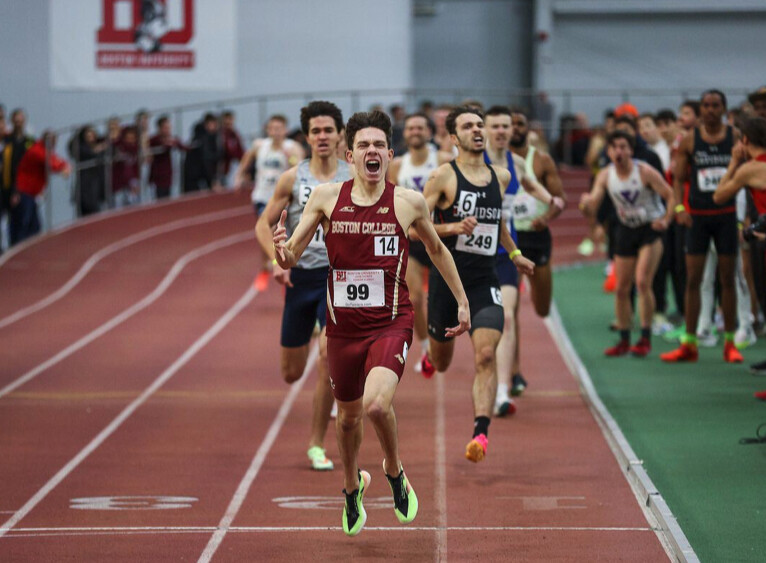
In a later article, Track and Field News editor Garry Hill told Outside: “In retrospect, I now think the opposite might be true, as modern shoes/tracks/training have combined to make a shot at a sub-4:00 now a reasonable goal for a lot more people.”
At the 2023 Millrose Games in NYC, U.S. Olympian Yared Nuguse ran the second-fastest mile in history, clocking 3:47.38, a new North American record, and only milliseconds off the indoor mile world record of 3:47.01. The American track and field community celebrated the mark, but faster times also bring quicker standards and higher expectations.In the past five years, shoe technology and track surfaces have changed, and running must adapt with it.
The Boston University track, which was built in 2002, is unusual in that it was built to the maximum allowable specifications (in terms of the surface, the 18.5 degree steepness of the banked turns); it is considered one of the best tracks in the world for middle distance runners chasing fast times.And while these super spikes bring faster times, what are the athletes supposed to do? Buy old shoes to simulate Bannister’s iconic 1954 race with leather spikes on a cinder track?
As mile times for elite middle-distance runners now stray into the high-3:40s and low-3:50s, the sub-four mile matters less and less; but, like breaking three hours for a marathon or 20-minutes for a 5K, any competitive distance runners will always want their mile time to start with a three. That will never change.
After an online uproar, Track and Field News relented, and said they would continue to keep track of sub-four-milers in their database. To this day, it is still a feat only 75 Canadian men have accomplished (indoor and outdoor)—enough to fill a school bus. No matter how many runners break four, it will always be a barrier many will chase.
by Running Magazine
Login to leave a comment
A sub four minute mile is still an amazing feat and should always be just that! - Bob Anderson 2/19 7:52 am |
Here’s how to run faster just by thinking about it
Mental imagery for running performance has been used by elite athletes for decades and is simple enough for the regular runner to start trying tonight. You’ll give your brain a workout along with preparing yourself for your event. Ultrarunner and author of Mental Training for Ultrarunners, Addy Bracy, explains: “thinking about a specific exercise produces the same brain activity that occurs when the actual task is performed.” Here’s how to get started.
Repetition

Sir Roger Bannister, the first man to run a 4-minute mile, used visualization techniques to get ready to tackle that famous distance. “Each night in the week before the race there came a moment when I saw myself at the starting line. My whole body would go nervous and tremble. I ran the race over in my mind. Then I would calm myself and sometimes go off to sleep” he wrote. If you’re familiar with the course or area that you’re going to run in, visualize yourself making your way through the course in your mind. If you’re training for a longer race, choose portions of it to run through. When you actually run the race it will feel familiar and comfortable. Try to incorporate as many of the five senses as possible: envision what you’re feeling in your body, what the air smells like, and notice the sights around you–you may feel silly doing this at first, but know that you’re training your brain to help you be a faster runner.
Visualize working through obstacles

Remember a time when you encountered something challenging in a race, whether it was discouraging thoughts, heavy legs or nausea. Imagine yourself working through that issue during your race with ease and finesse. Try this with a variety of obstacles. When you run into similar issues, your brain won’t react with shock and overwhelm; ideally, it will remember your mental practice and you’ll move fluidly through any problems. “Once you have identified possible stressors, see and feel yourself using your tools to calm your anxiety,” Bracy says. The more diverse the situations you work through in your brain, the more prepared you’ll actually be on race day.
Imagine a strong race finish
Research suggests that our brain becomes fatigued and starts signaling us to stop running in the final quarter of a race. Spend more time focusing on this last section, and envision yourself tuning out any mental chatter to stride strongly towards that finish line. Bracy suggests linking together images of several past successes, “making sure to include the emotions and feelings you derived from those experiences. Use this to enhance feelings of confidence, belief and excitement leading into a race.” The brain is a powerful tool, and adding some brain training techniques to your regime will help you on race day.
by Running Magazine
Login to leave a comment
John Landy was a very special man
"The most incredibly stupid, beautiful, foolish, gentlemanly act I have ever witnessed." is how one spectator, a prominent Australian minister, described the mid-race occurence as pictured here.
I am saddened to share the news of the passing of mile legend, John Landy at the age 91.
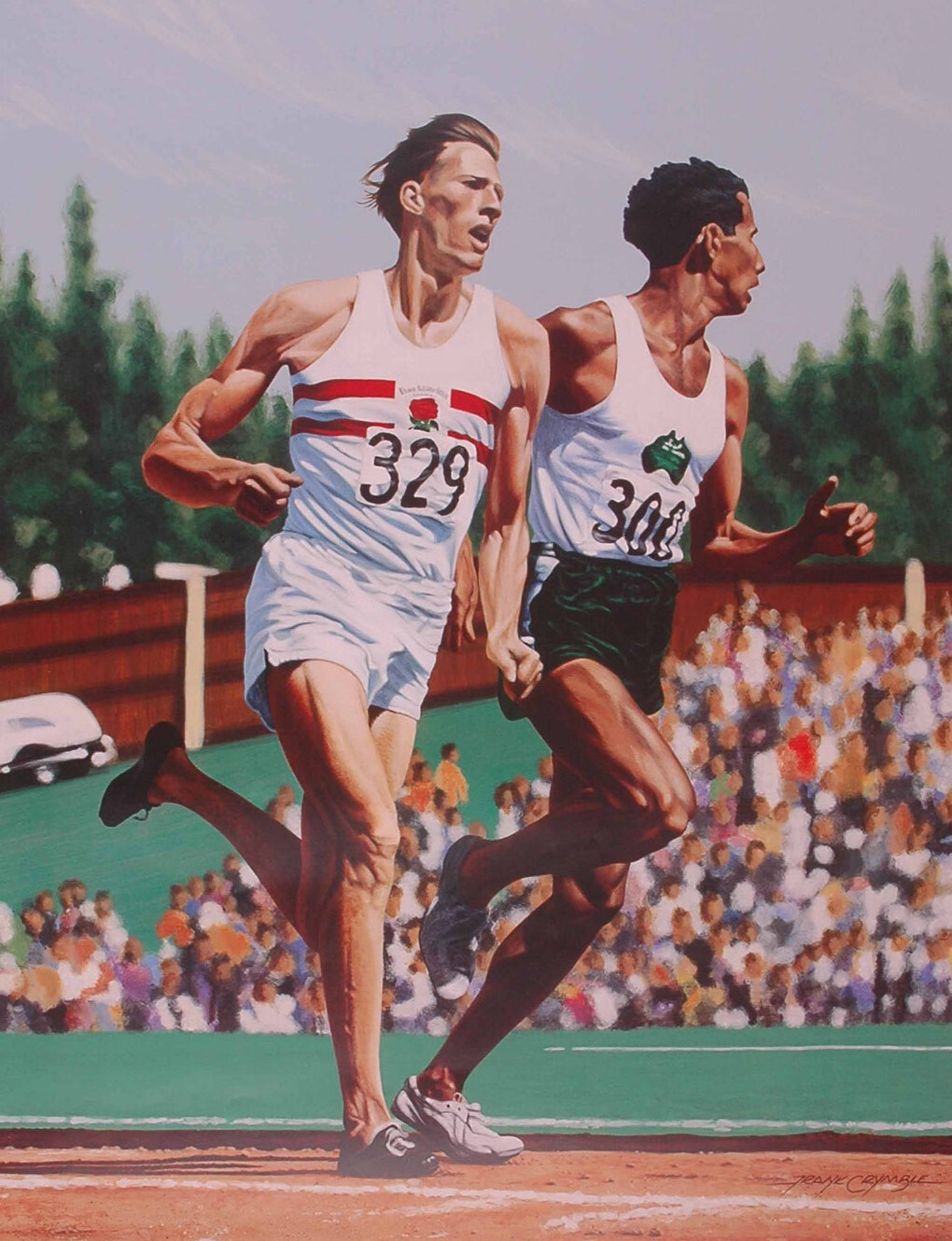
You may best remember him for looking left while Roger Bannister passed on his right during the iconic 4 lapper dubbed the Miracle Mile at the 1954 Commonwealth Games.
Or perhaps you prefer to recall Landy as the second man under four minutes...his 3:57.9, run in Turku Finland, came just 46 days after the more widely lauded Bannister barrier breaker.
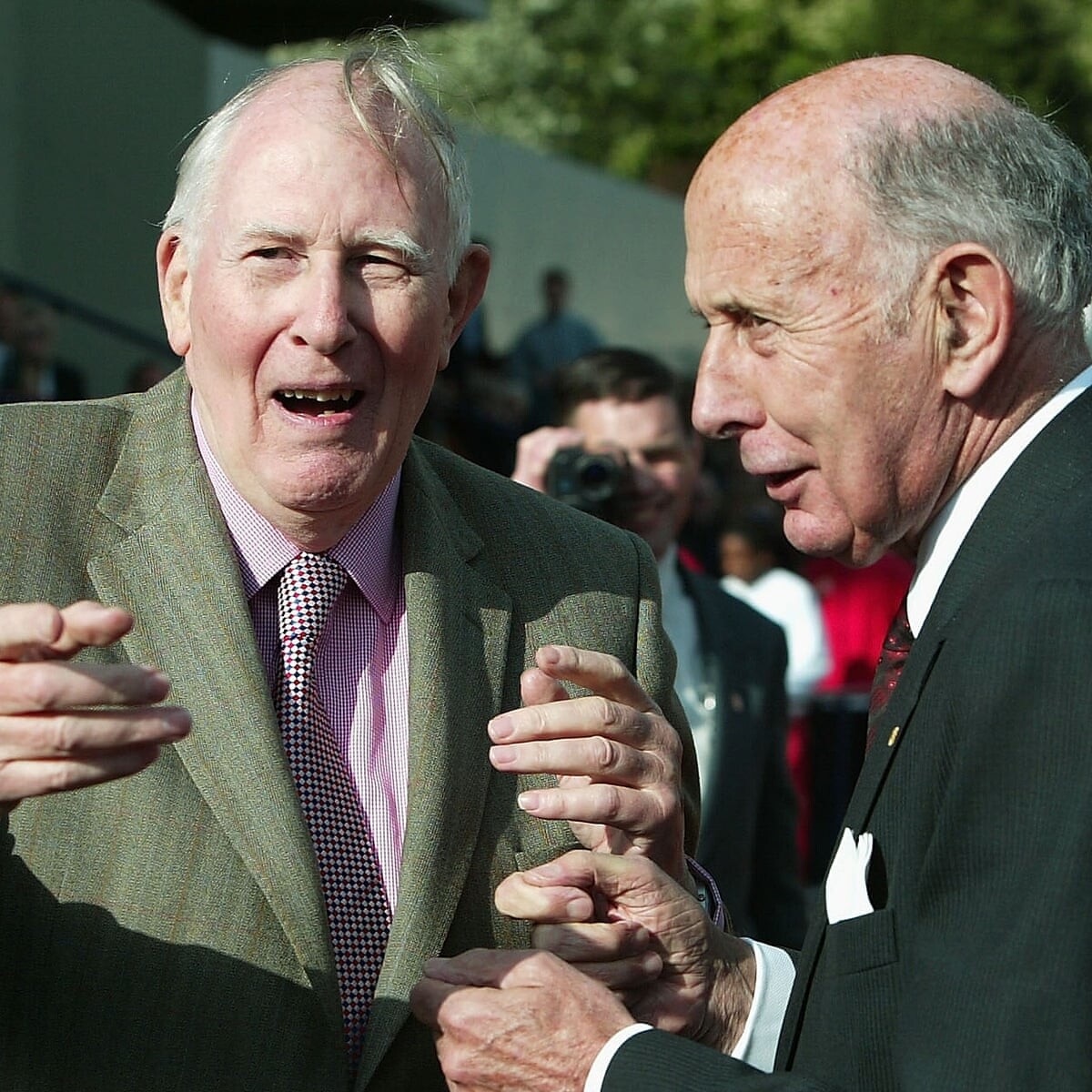
But when I think of John Landy, my very first image of him comes from the 1956 Australian National Championships. In an announced goal prior to that meeting's one mile run, Landy hoped to break his own world record.
Instead, midway through said mile, one that attracted 22,000 spectators, there was some jostling that caused a runner to go down on the cinders. It was the 19-year old Aussie national junior champ, Ron Clarke. Landy, hurdled over the fallen competitor but clipped the youngster's shoulder with his spikes. Rather than continue forward, Landy stopped, turned around and lent Clarke a hand back to his feet.
Now, some 60 yards behind the leaders, Landy, one by one, reeled in the entire field and went on to win in a remarkable 4:04.2.
John Landy's one mile world record may have lasted just three years, but his selfless act of sportsmanship shall endear him to this track fan into perpetuity.
by Mike Fanelli
Login to leave a comment
John Landy has died at age 91
John Landy, a scholarly Australian who became the second man, after Roger Bannister of England, to run the mile in under four minutes, and who later dueled Bannister in a race that became known as the Mile of the Century, died on Thursday at his home in Castlemaine, Victoria, Australia. He was 91.
His death was reported by the country’s main public broadcaster, the Australian Broadcasting Corporation.
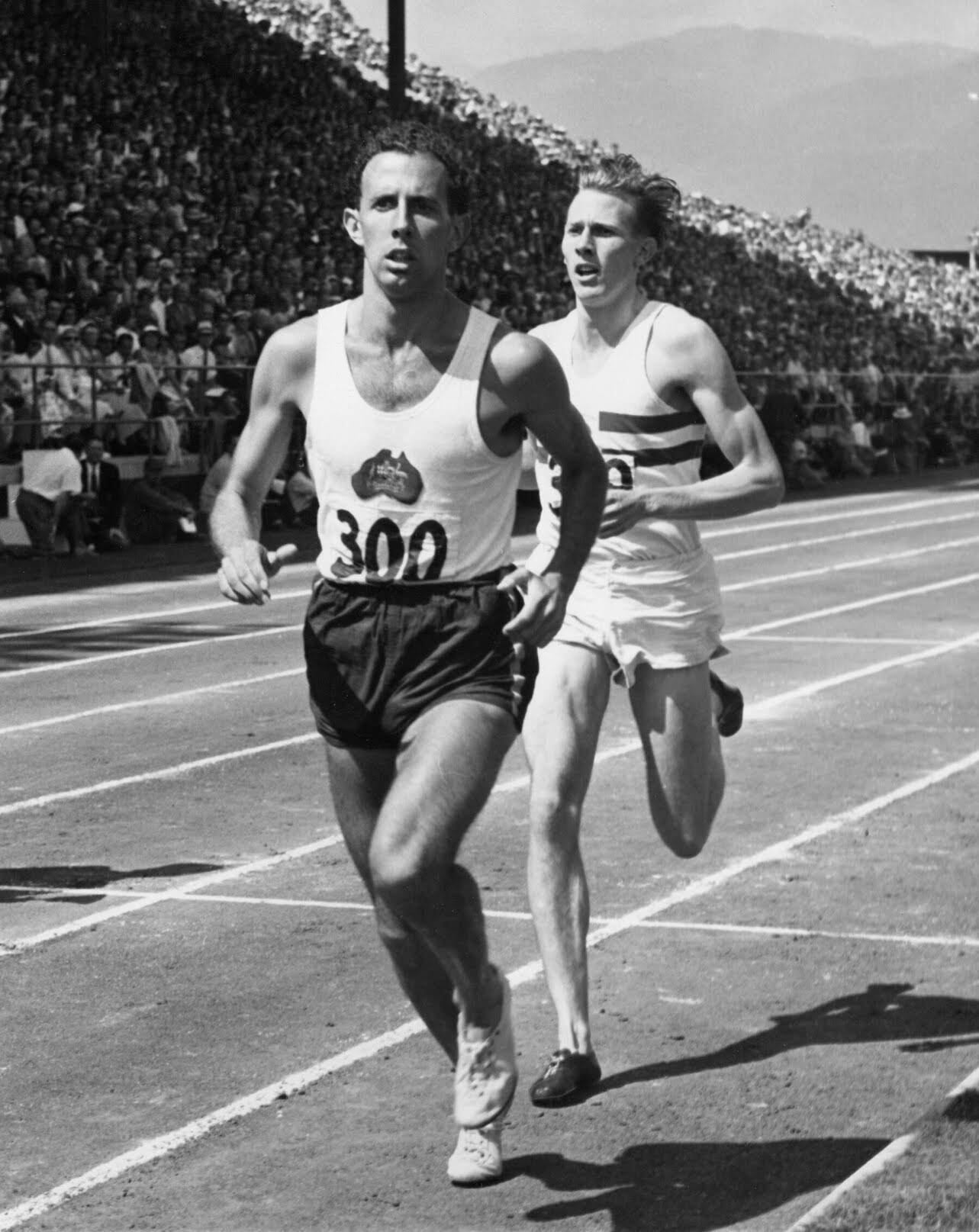
For as long as races were measured in time, running a mile in less than four minutes had remained one of humankind’s seemingly unbreachable barriers. But by 1954, three of the world’s greatest runners — Landy, Bannister and Wes Santee of the United States — had been edging closer to that mark and appeared ready to shatter it.
All three faced obstacles: Landy, at just over 5-foot-11 and 150 pounds, was running on slower grass tracks in Australia; Bannister was deep into medical studies at Oxford; and Santee had to run three relays for the University of Kansas in almost every meet.
Bannister reached four minutes first, running a mile in 3 minutes 59.4 seconds on May 6, 1954, in Oxford. Not to be outdone, Landy, who graduated from Melbourne University that year with a degree in agricultural science, headed for Europe and its faster tracks.
On June 21 — 46 days after Bannister’s historic race — Landy lowered the world record even more, to 3:57.9, in Turku, Finland. (According to the timing rules of the day, which called for mile records to be listed in fifths rather than tenths of a second, the time was listed as 3:58.0; it is now recognized as 3:57.9, the actual time recorded by four timers.)
As Landy saw it, he and Bannister had simply done the inevitable. “Four minutes was not a psychological barrier,” he said. “Someone was going to break it. If there hadn’t been a war, it would have fallen 10 years earlier.”
Landy’s record would last three years; it was broken in 1957 by Derek Ibbotson of England, who ran 3:57.2. (The current record is 3:43.13, run by Hicham El Guerrouj of Morocco.)
by NY Times
Login to leave a comment
Something you might not know about this past world mile record holder
Aside from perhaps Roger Bannister (a 4:52 high school miler who PRed at 3:59.4) or John Landy (a 4:43.8 kid who eventually went 3:58), you'd be hard pressed to find another 'more improved' miler than Dick Buerkle.
As a Rochester, NY schoolboy, Dick's PB was but 4:28 (and just 10:01 for 2 miles)...yet, he somehow managed to later produce a quite remarkable 3:54.93, to become the unlikliest of all one mile world record holders.
by Mike Fanelli
Login to leave a comment
The surprisingly simple training of the world’s first sub-4 minute miler, How Roger Bannister prepared for his historic run?
Before Sir Roger Bannister’s historic run in 1954, running fans and experts believed that the sub-four-minute mile was not possible. When he crossed the finish line at the University of Oxford’s Iffley Road track in 3:59.4 66 years ago, he changed the course of running history forever, opening the door for thousands more to follow.
You might be surprised, then, to find out that in order to set this historic record, Bannister only trained for about five hours per week.
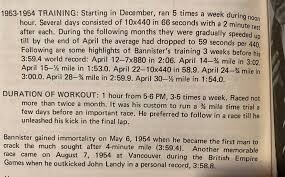
Twitter user @jmarpdx recently tweeted an exert from the book How They Train by Fred Wilt, which provides a brief description of Bannister’s training regime leading up to his breakthrough run. According to the book, he started training in December (five months before the race) and only ran for one hour, five days per week during his lunch hour.
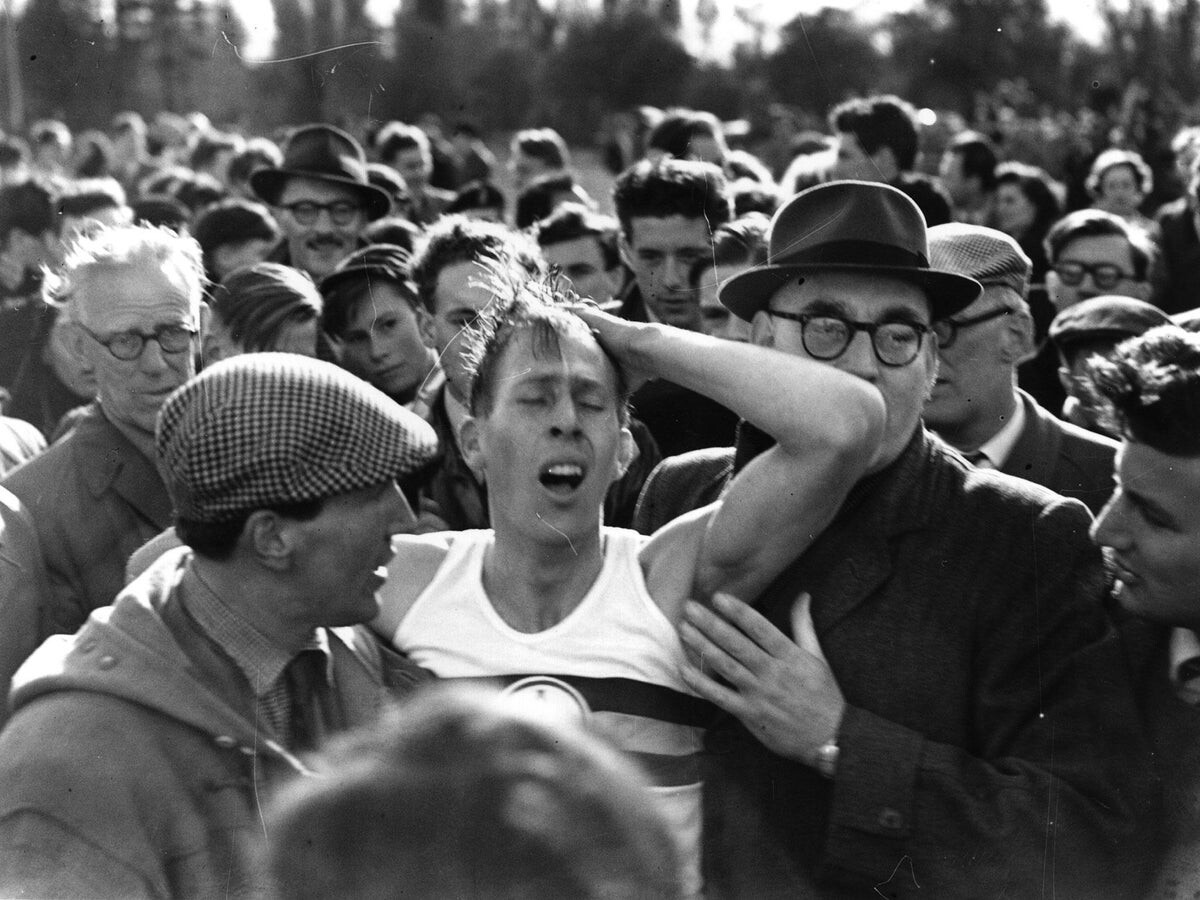
His sessions almost always consisted of some form of interval training, including workouts like 10 x 440 yards (400m), 7 x 880 yards (800m) and 3/4 mile (1,200m) time trials.
Of course, today we have a lot more knowledge regarding training protocols, mileage and recovery, but this sample from Bannister’s training is an example of how sometimes, simplicity is the best path forward.
by Brittany Hambleton
Login to leave a comment
Britain’s two-time Olympian and four-time AAA champion in the late 1940s and early 1950s Bill Nankeville, passes away aged 95
One of the most popular British athletes of the post-war period, Bill Nankeville, has died aged 95. A two-time Olympian, he finished sixth in the 1500m final in London in 1948 before going on to capture four AAA one-mile titles and a bronze medal at the European Championships in 1950.
During an era when tens of thousands of fans packed into the White City Stadium to watch athletics, Nankeville was one of the biggest names in the sport as he entertained spectators with his elegant style and tactical acumen.
In recent years he has become known to many as “Bobby Davro’s dad”, but for those familiar with his middle-distance running exploits he was one of the legendary figures of British athletics and the comedian Davro was simply “Bill Nankeville’s son”.

Davro, who achieved fame as a television comedian in the 1980s before later appearing in EastEnders, broke the news of his father’s death on social media on Friday (January 10) with an emotional message that read: “Today I lost my best friend and my hero. The most wonderful human being I have ever known. I’m so proud of him. He was GB mile champion and represented his country in two Olympic games but to me he was just “Dad”. I will miss him so very much and I will love him forever.”
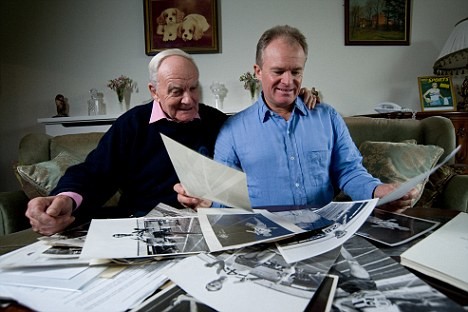
Born on March 24, 1925, Nankeville’s early career was interrupted by World War II. He joined the army himself when he was 19 in April 1944 and made parachute containers and petrol tanks before being posted overseas to Brussels, Hamburg and to the concentration camp at Belsen shortly after it was liberated in 1945.
Running for the army in Belgium rekindled the athletics ability he had shown as a child and he soon began to make an impact. His rise was swift and in 1948 he won the first of a quartet of AAA one-mile titles and reached the Olympic 1500m final in London.
The Olympic final was run on a rain-soaked track with Swedish duo Henry Eriksson and Lennart Strand finishing one-two with Nankeville just over a couple of seconds behind the winner in sixth place.
Two years later at the European Championships in Brussels he won a bronze medal in a race won by Wim Slijkhuis of the Netherlands.
When the next Olympics took place, however, in Helsinki in 1952, Nankeville finished ninth in his semi-final as the leading British runner was Roger Bannister, who finished fourth in a final won by Josy Barthel of Luxembourg.
Nankeville and Bannister teamed up with Chris Chataway and Don Seaman to break the world 4 x one-mile record with 16:41.0 in 1953. In addition, Nankeville was part of teams that broke relay world records for the 4 x 880 yards (7:30.6) in 1951 and 4 x 1500m (15:27.2) in 1953.
After his athletics career ended, Nankeville worked for a sports manufacturing company and earned a reputation as a ‘Del boy’ figure due to his sharp business sense and likability.
by Jason Henderson
Login to leave a comment
Sebastian Coe said on Friday he embraced new track technology that features pacemaking lights, a system used to great effect in two stunning world records last week
World Athletics president Sebastian Coe said on Friday he embraced new track technology that features pacemaking lights, a system used to great effect in two stunning world records last week.Ugandan Joshua Cheptegei (men's 10,000m) and Ethiopia's Letesenbet Gidey (women's 5,000m) blew two longstanding records apart in Valencia.
Both athletics had a team of metronomic pacemakers around them who utilised Wavelight technology -- a trackside visual time guidance system which lights up to indicate the world record pace."You have to innovate, there's no question about that," Coe said in Gdynia, Poland, ahead of Saturday's world half-marathon races.
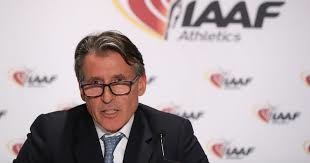
While acknowledging there was a balance to be struck, Coe argued that technological advances were paramount in attracting new audiences.
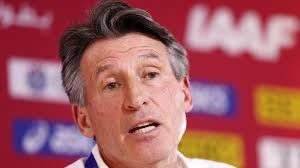
"You need to create a connection and the key connection is understanding.
"Pace lights I have no problem with. Our one-day meetings are about entertainment and I think Wavelight that allow people on television, to understand a little bit more about the incredible talent, the incredible talent, the incredible speeds our competitors are running at actually lends to the type of understanding I want."
Coe also argued that pacemakers had been around for decades, notably citing Roger Bannister's first sub-four-minute mile as a "pace-made event".
Login to leave a comment
World Half Marathon Championships
The Chinese city of Yangzhou will host the 2022 World Athletics Half Marathon Championships. China, one of the fastest-growing markets in road running, had 24 World Athletics Label road races in 2019, more than any other country. It hosted the World Half Marathon Championships in 2010 in Nanning and will stage the World Athletics Indoor Championships in Nanjing in 2021. ...
more...Diane Leather and Roger Bannister – the similarities and differences of two trailblazers
The world reverberated with the news that Roger Bannister had become the first man to run the mile in less than four minutes on 6 May 1954. Twenty three days later, a landmark was achieved in the women’s mile when fellow Briton Diane Leather became the first to dip under five minutes – unheralded, and, at the time, without fanfare.
Bannister’s progress continued to top the sporting agenda as he beat his Australian rival, and by then world mile record-holder, John Landy at the British Empire and Commonwealth Games in Vancouver, before hoovering up the European 1500m title and retiring to start a stellar career in medical research.
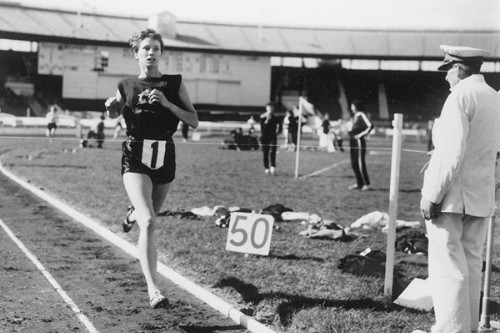
Leather remained as a runner until 1961, but while she won two silver medals in the 800m at the European Championships, and captained the women’s team at the 1960 Rome Olympics, she never got the chance to run at her best distance in a major international championship.
Less than a month after Bannister had clocked 3:59.4 at the Iffley Road track in Oxford, Leather recorded 4:59.6 at the Alexander Sports Ground in Birmingham – reacting with the words “Oh good. At last” – and the following year she ran 4:50.8 and then 4:45.0, which remained a world record until 1962.
By then Leather – who had also set an 800m world record of 2:09 in 1954 – had retired, aged 27. Women’s records for the mile were not ratified until 1967, and she never had the opportunity to race over her preferred distance at an international championship.
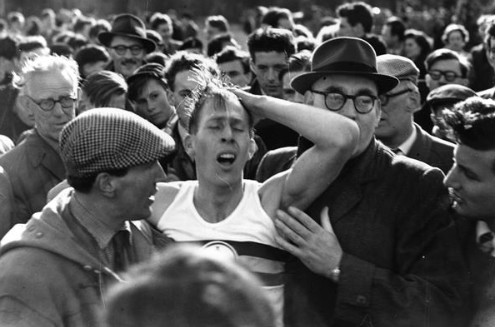
Both runners were honoured at the World Athletics Heritage Mile Night in Monaco last month with awards being made to Leather’s daughter, Lindsey Armstrong, and Bannister’s daughters Erin Bannister-Townsend and Charlotte Bannister-Parker.
The contrast in recognition for two great athletes who both died in 2018 was mirrored, oddly, in a contrast in recognition within their own families.
Lindsay Armstrong had no idea that her mum had been an athlete, or indeed a world record-holder, until she was 11.
“She didn’t tell me herself,” recalled Lindsay, who runs Shakespeare’s Schoolroom and Guildhall in Stratford-upon-Avon. “I learned about it when I found some scrapbooks that one of her brothers had kept. They were on the bottom shelves somewhere in the sitting room, just tucked away.
“I didn’t know what to do about it – it was almost as if I was being naughty!
“In the end it wasn’t really such a big conversation. She said it was just something she used to do.
“I don’t want you to get the wrong idea. She wasn’t shy and retiring. But it was just something she’d done.
“On the day she broke five minutes for the mile, she had broken an 800m record earlier that day – it may have been a national record. So she had two great legs on her.
“She ran in the Olympics in 1960, but again they still didn’t allow her to run the mile. There was nothing further than the 200 until 1960 and then they were allowed to do the 800m. So she was the women’s team captain but she didn’t get to the final. Because, you know, it was six years past her prime. We have still got her Olympic jacket at home. She stopped soon after that.
“She didn’t talk about her athletics. I know that in later years according to people that knew her then that she felt somewhat slighted, and instead of letting it upset her she just turned away from athletics earlier than she would have done.
“But she did a lot of officiating in athletics after her career. So she didn’t really turn away from the sport. She always loved it.
“She was an extraordinary athlete. She ran the 400m, she ran the relay, she was a cross country champion. She did a huge range of distances.
“She was a chemist and she went on to be a child social worker. That was her passion. She was more than just an athlete. She was an extraordinary woman who really did change lives.
“She was beautiful – so beautiful. You could see it in the film we just watched. And it was really lovely to see. We were so proud of her. To be here with all these other extraordinary runners – she would have loved to be here.”
By contrast, Bannister’s daughters Charlotte, who is a Church of England Minister at the University Church in Oxford, and Erin, an accomplished painter, recalled their father introducing athletics into their life from the point where they could remember.
“I think it would be fair to say that my father was a pretty humble man throughout his life considering what he achieved both medically and athletically,” said Charlotte.
“But in terms of us being aware that he was a runner and that running was important was something that happened right from the start of my very consciousness.
“We were encouraged to run every day. There was a little park outside our house which was a square, and he would run every day of his life, right until he had a car accident and he no longer could. But it was deeply engrained within our childhood. Much more… why it was good for you…
Her sister continued the narrative: “Why he loved to be outside… being outdoors, and including other sports, including climbing and walking, and tennis, and sailing, and a whole range of sports. He was always trying things that weren’t necessarily to do with athletics. So things like sailing were quite dangerous, but they gave us enormous fun.”
Charlotte recalled: “He would train us to get off the starting line. He just loved watching people run, and he would come to our school sports days and he would look around the field and he would say that young boy or that young girl, they have got great style.
“And then of course he was broadcasting at the Olympics as a journalist – that was one of the times we were allowed to watch television, to see the Olympic Games and the Commonwealth Games.
“He didn’t generally talk about his athletics, but during anniversaries of his achievements he would sometimes talk about them, and he would talk about how his father had taken him to see athletics very early on.
“I remember going to Crystal Palace with him a lot. And then of course when he was Chairman of the Sports Council he would have to attend a lot of sporting events and if my mother couldn’t make it he would take one of us children.
“And then of course there were interviews. When something happened in the athletics world, he used to get rung up by the BBC and asked to comment on things to do with drugs, apartheid, politics…”
Both recalled travelling to Vancouver in 1967 for the unveiling of a statue depicting the decisive moment of the Vancouver Mile race, when Landy looked back inside him as their father was making his decisive burst of speed in the lane outside.
Charlotte added: “We used to have very interesting Sunday lunches, where there were always discussions around politics, athletics and sport, and it would be a summary of the week’s news and what was going on in the wider world. So there was no sense of not being involved in what was his passion – or of him not passing on his passion to us.”
by World Athletics
Login to leave a comment
Peter Snell has died in Dallas. He was a three-time Olympic champion and world mile record-holder
Three-time Olympic champion and world mile record-holder Peter Snell has died in Dallas. He was aged 80.
Snell, who is regarded as one of the greatest middle-distance runners, won the 800 meters at the 1960 Rome Olympics aged 21, and the 800-1,500 double at the 1964 Tokyo Games.

He was the first man since 1920 to win the 800 and 1,500 at the same Olympics. No male athlete has done so since.
Snell also won two Commonwealth Games gold medals in the 880 yards and mile at Perth in 1962.
He twice held the mile world record, and held world records in the 800 meters, 880 yards, 1,000 meters, and the 4x1-mile relay.
Snell's death was confirmed by family friend and New Zealand sports historian Ron Palenski, who heads New Zealand's Sport Hall of Fame.
“It is very sad news, a grievous loss for New Zealand,” Palenski said. “In terms of track and field, he is probably the greatest athlete New Zealand has had.”
Snell was coached by Arthur Lydiard, an innovator who was regarded as one of the world’s finest coaches of middle and long distance athletes. Lydiard also coached Murray Halberg to win the 5,000 meters at Rome in 1960.
Snell was the best miler of his generation, at a time when the mile was the blue riband event of world athletics. He began immediately after Roger Bannister's epoch-making sub-four-minute mile and while the glow of that achievement still suffused the sport.
In his physique he was unlike milers of the time: Snell was strong and powerful — more like a 400-meter runner — and not like the mostly lithe athletes who vied for world supremacy over the mile.
His stride was so powerful he often scarred the tracks on which he ran, kicking up puffs of debris, especially on grass or cinder tracks. Lydiard's training — based on massive mileage mostly on the road rather than the track — gave him enormous stamina but he also had unusual speed.
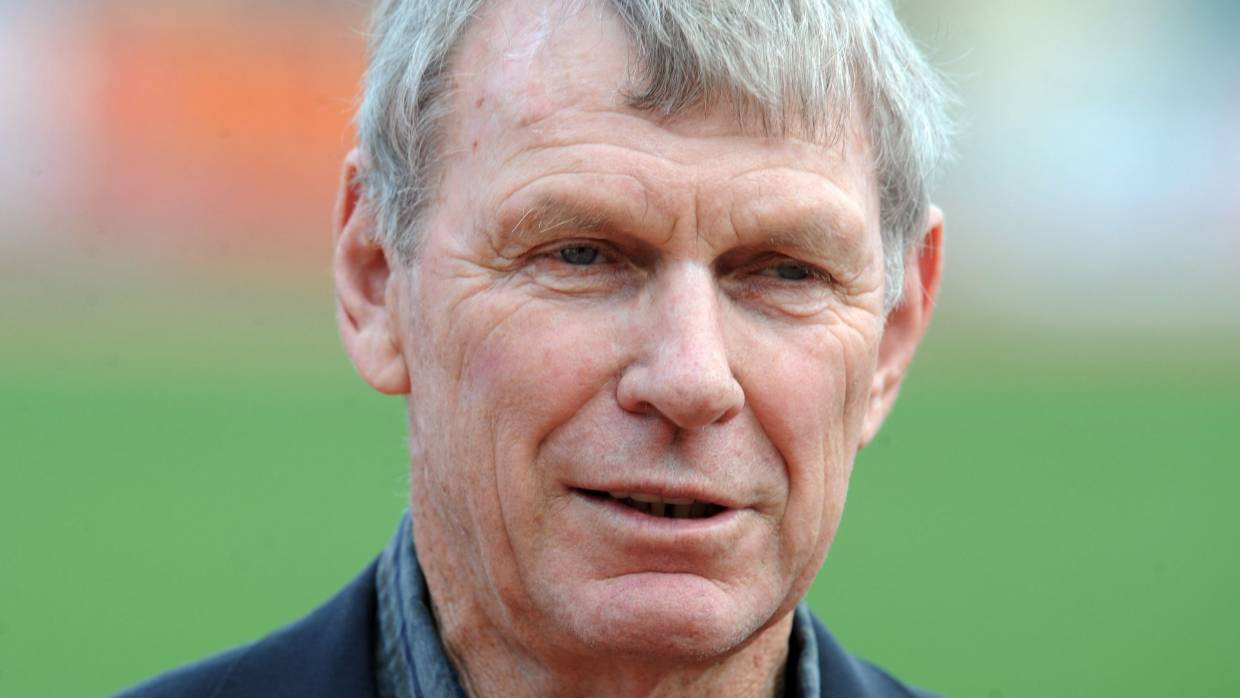
Snell's friend and training partner, Olympic marathon bronze medalist Barry Magee said “there will never be another New Zealand athlete like him.”
“He won three Olympic gold medals, two Commonwealth Games gold medals, and broke seven world records. He was the best-conditioned athlete of his time.”
Snell’s wife, Miki, said he died suddenly at his home in Dallas around noon on Thursday. He had been suffering from a heart ailment and required a pacemaker for several years.
Snell’s athletics career was relatively short. He retired in 1965 to pursue educational opportunities in the United States.
"Peter Snell was like a god to me," says MBR founder Bob Anderson. "I started running in February 1962 and Peter was my hero. I met him at one of our National Running Weeks in the early 80's and it was like meeting a rock star."
Snell graduated with a Bachelor of Science degree in human performance from the University of California, Davis, and later with a Ph.D. in exercise physiology from Washington State University.
He became a research fellow at the University of Texas Southwestern Medical Center in 1981, later becoming director of the university's Human Performance Center.
Snell was knighted by New Zealand in 2009. A statue in his honor stands at Cooks Gardens, Whanganui, near his birthplace of Opunake, where he broke the mile world record for the first time in 1962.
by Associated Press
Login to leave a comment
The film ‘Bannister: Everest on the Track’ takes FICA Golden Achilles prize
The US-produced film Bannister: Everest on the Track has won the top prize, the Golden Achilles, at the second International Athletics Film Festival in San Sebastian.
The announcement was made on Saturday (9) after a week-long series of screenings in the Basque city and follows in the footsteps of Town of Runners which won in 2018.
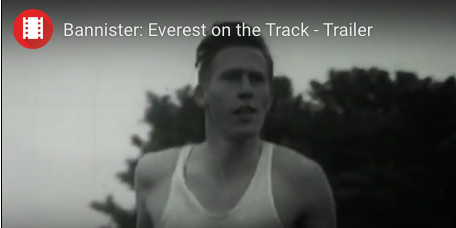
This year’s winning film looks at the motivations that inspired Roger Bannister to his historic feat of being the first person to run under four minutes for the mile and puts it in a historic context of what it meant to the British public, coming as it did less than nine years after the end of World War II.
To quote from one of the reviews when the film was first released: “Everest on the Track is as much a historical study of Britain's psychological, if not almost physical, need for something – anything – to erase the woes of World War II as it is a fresh look at the quest for the first sub-4:00 mile, the heretofore deemed physically impossible.”
Among those interviewed during the documentary are Bannister himself, one of his pacemakers Chris Chataway, who was later to go on and break the 5000m world record, as well as US runner George Dole who competed in the famous race at Iffley Road while a Rhodes scholar at Oxford University.
Also interviewed are spectators on that day more than 65 years ago, 6 May 1954, when one of the most well-known feats in sporting history was achieved, as well as journalists and historians along with future world mile world record holders John Landy – with whom Bannister was in a long-distance duel to become the first man to go under the historic barrier – Sebastian Coe and Steve Cram.
Back to the beginning
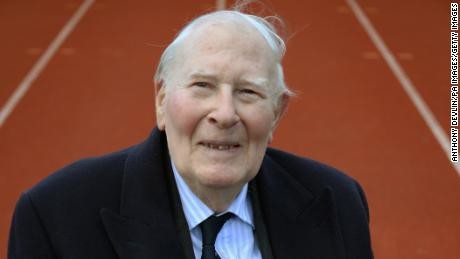
“We first started thinking about the film in 2014 when there was the 60th anniversary of the four-minute mile,” said the film’s director Tom Ratcliffe, who was in San Sebastian to hear the announcement that his documentary had taken the top prize. “It’s a feat that has a heritage and legacy unlike any other in athletics and perhaps sport as a whole. Roger Bannister’s achievement is one that still resonates today.
“We were very lucky in so far as one of the first people we interviewed was Chris Chataway. He was wonderfully erudite, entertaining and enthusiastic even though he was very ill with lung cancer and sadly died not long after the interviews.
“Roger (Bannister) was a bit more reticent at first. Helpful, but reserved. I think he thought ‘Oh, it’s just another interview’, but once he saw an early version of what we were doing, he then relaxed and was very generous. He said to call him whenever I was in England and I went to his house several times to do some further interviews.
“The first full version came out in 2016 and then the film has been revised since then in 2018 to take account of Roger’s death. We had many wonderful interviews and it was a case of weaving them together into a coherent film.”
Login to leave a comment
Organizer Jim Ratcliffe says this about the sub two hour marathon attempt coming up: Nobody's been able to achieve this. It's not unlike trying to put a man on the moon.
Eliud Kipchoge will attempt to break the two-hour barrier for the marathon in Vienna in October after London was snubbed for the Ineos 1:59 Challenge.
The challenge - 65 years after Roger Bannister broke the four-minute mile - had been thought more likely to take place in the UK after the IAAF World Athletics Championships in Doha.
Instead, the Kenyan world record-holder will make his second bid to run the first sub-two-hour marathon in the Austrian capital on October 12.
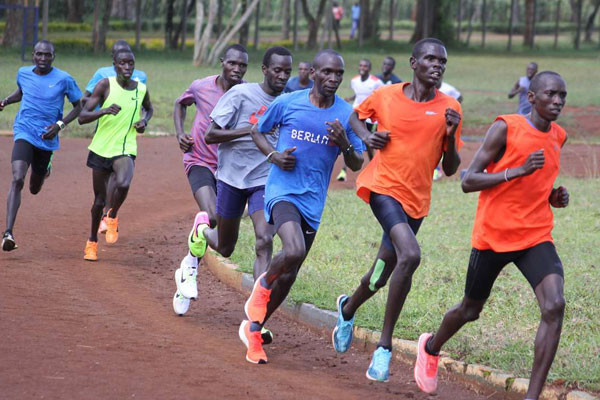
"After an extensive worldwide assessment process, The Prater - the famous Viennese park - has been chosen by the INEOS 1:59 Challenge as the venue that will give Kipchoge the optimum conditions to write himself into the history books," Ineos said.
Kipchoge ran the marathon in a time of two hours and 25 seconds on the Monza race track in Italy in his previous attempt to break the two-hour mark. He was assisted by pacemakers who ran set sections of the course on that occasion, meaning it was not recognised as a world record.
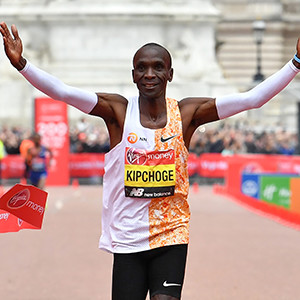
The 34-year-old 2016 Olympic gold medal winner set the current world record in Berlin last September when running 2:01:39, beating the previous best by 78 seconds.
He also ran the second-fastest time in history when completing the London marathon in April in a time of 2:02:37.
Sir Jim Ratcliffe, the Ineos chairman, said: "Eliud Kipchoge is the greatest ever marathon runner and the only athlete in the world who has any chance of beating the two-hour time.
"Nobody's been able to achieve this. It's not unlike trying to put a man on the moon."
by Tom Morgan
Login to leave a comment
INEOS 1:59 Challenge
Mankind have constantly sought to reach new frontiers and to achieve the impossible. From Edmund Hillary reaching the summit of Mount Everest to Roger Bannister’s four-minute mile to Felix Baumgartner jumping from space we have frequently redefined the limits of human achievement and broken new barriers previously seen as simply impossible. After the four-minute mile and the ten second 100m...
more...Kenyan Eliud Kipchoge will once again attempt to become the first athlete to break the two-hour marathon barrier in an event being staged in London later this year
Dubbed the INEOS 1:59 Challenge, this race against the clock -- to be staged in late September or early October -- is being backed by Britain's richest man Jim Ratcliffe, the billionaire owner of chemical firm INEOS, which recently purchased British Cycling's Team Sky.
"It's human nature to push boundaries," said the INEOS 1:59 Challenge website. "The drive to learn and achieve more is in our DNA. In Autumn this year Eliud Kipchoge, with support from INEOS, plans to redefine the limits of human achievement by breaking the last great barrier of modern athletics -- the two-hour marathon."
Last week Ratcliffe and INEOS were accused by environmental protesters of "sportswashing" -- using sport to enhance reputation -- an accusation the Briton completely rejects.
Speaking to reporters ahead of cycling's Tour de Yorkshire, Ratcliffe took aim at those who criticized his company's fracking project, claiming the majority of environmental groups he has met are "ignorant" of the process, adding it remains a cheap source of energy.
Current world record holder Kipchoge recorded a time of 2:00.25 during a similar event at Monza -- home of the Formula One Italian Grand Prix -- in 2017 wasn't recognized as a world record as it did not adhere to the rules laid out by athletics' governing body, the IAAF, notably in the way he was helped by "in-out" pacemakers. The London attempt will also not be ratified.
The 34-year-old Kenyan set a new record time for the London marathon earlier this month as he claimed a fourth triumph in the event -- a record for a male athlete.
His time of two hours, two minutes and 37 seconds was the second fastest marathon of all time -- just behind his own world record of two hours, one minute and 39 seconds which was recorded in Berlin in September 2018.
"This would really surpass everything because this will go in the history as far as the human family is concerned," Kipchoge told reporters ahead of Monday's event launch, which took place 65 years to the day since Britain's Roger Bannister became the first man to break the four minute mile.

According to reports, Kipchoge's attempt in London will use a number of pacemakers who run laps, while dipping in and out of the action, in order to maintain the astonishing pace of two minutes, 50 seconds per kilometer needed to go under two hours.
"It is not about recognition or ratification but to make history and to pass on a message that no human is limited. Running the fastest-ever marathon of 2:00.25 was the proudest moment of my career," added Kipchoge.
Ratcliffe also had to defend INEOS over its use of plastics after its acquisition of Team Sky, which had been leading a campaign against single-use plastics and Ocean Rescue campaign.
"We've spent 30 years working on the INEOS project and made it very large and very profitable," Ratcliffe said.
"We make $5-7 billion a year in profit so there's no harm in investing a modest amount of that into very worthy sporting endeavors which we enjoy.
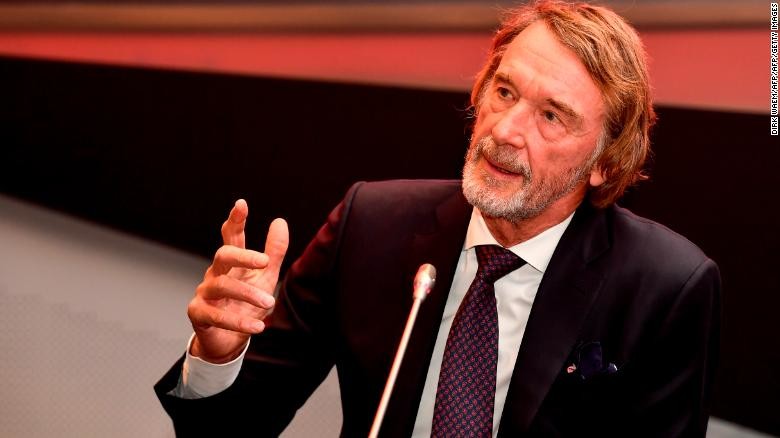
"If they inspire people towards a healthier lifestyle, that's a good thing but there's also nothing wrong in investing money in something simply enjoyable. I like the theatre, I like opera. But I prefer sport."
Ratcliffe, a keen cyclist and a well known running enthusiast, also sponsors children's running charities, GO Run For Fun and The Daily Mile, with the aim of getting more young people into the sport.
"If Eliud has got a fantastic crowd cheering him on, its going to make a bit of difference and we don't need to make a lot of difference to make up 26 seconds," he told reporters.
"I was in the pace car in front of Eliud for the London Marathon and he was looking very serene and comfortable. He's still getting better.
"Eliud is the finest marathon runner there has ever been and I think it will be very inspirational, to get kids putting running shoes on.
"It would be an extraordinary achievement. It's almost super-human, isn't it really? To break two hours in a marathon is quite unthinkable."
by James Masters
Login to leave a comment
INEOS 1:59 Challenge
Mankind have constantly sought to reach new frontiers and to achieve the impossible. From Edmund Hillary reaching the summit of Mount Everest to Roger Bannister’s four-minute mile to Felix Baumgartner jumping from space we have frequently redefined the limits of human achievement and broken new barriers previously seen as simply impossible. After the four-minute mile and the ten second 100m...
more...The first woman to break five minutes for the mile almost went unnoticed
Login to leave a comment
Global Run Challenge Profile: After Paul Shimon watched Roger Bannister on TV set the world mile record he was hooked
by Bob Anderson
Login to leave a comment
laszlo Tabori was the third man to break four minutes for the mile
DID YOU KNOW: Laszlo Tabori was the third man in history to break the sub-four minute mile barrier, setting a new European Record with a time of 3:59 on May 28, 1955. Roger Bannister was there. Laszlo posted this on Facebook March 5th after Roger Bannister passed away.
“One of my favorite pictures with Sir Roger Bannister... We were all chasing the sub 4 minute mile. In those days it was a feat comparable only with climbing Mt. Everest. Roger was someone I looked up to and admired.

At the height of his running career, he stopped in order to concentrate on his studies in medicine. I had the great fortune to be one of the early ones who followed in his footsteps just a year later at White City Stadium, London. Here Roger is shaking my hand and offering congratulations as I had quite unexpectedly just became the 3rd person to enter this very elite sub-4 min mile club,” wrote Laszlo Tabori.
Laszlo was born in Košice. Although he had already taken up running in his youth, his serious career only started in the early 1950s under Mihály Iglói, the legendary coach.
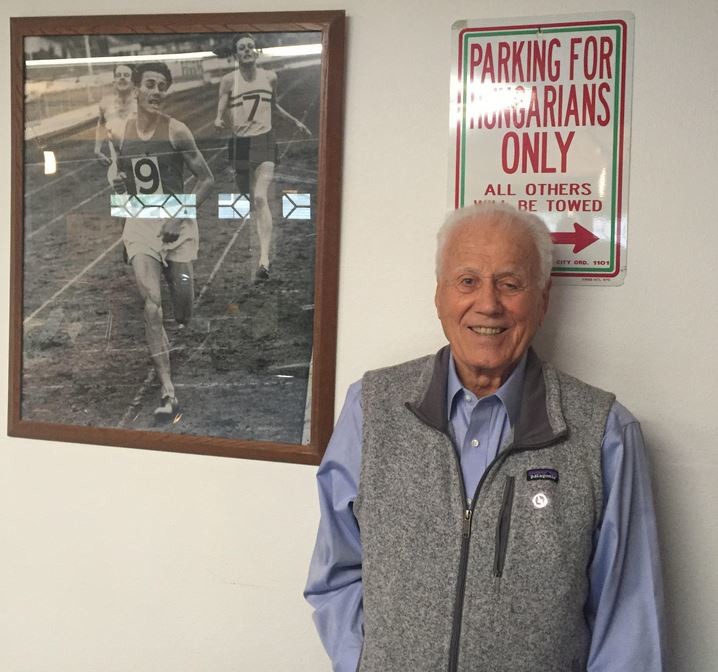
Among Laszlo’s many accomplishments include being an Olympian in the 1956 Olympic Games in the 1500 and 5000m races. Mihaly Igloi and his track team were in Budapest, and saw the chaos of the Soviet invasion, but were fortunate to leave the country and arrive in Melbourne.
Understandably, the Hungarians performed poorly at the Games. After the competition, Igloi, and one of his top runners, Laszlo Tabori, made the fateful decision to forgo their return to Hungary and defect to the United States.
Tábori retired from running in 1962, since he couldn’t compete for Hungry and was not a United States citizen. Tábori returned to distance running as a coach in 1967, his training methods based directly on Iglói's, and has been the coach of San Fernando Valley Track Club since 1973.
by Bob Anderson
Login to leave a comment
Should the mile be added back into the Commonwealth Games? How about the 1500m?
Login to leave a comment
Gunder Hagg's world records stood for almost a Decade
Login to leave a comment
British Milers Club is launching the Bannister Mile Series
Login to leave a comment
Jim Ryun and family mourns the passing of this giant of a man - Dr Roger Bannister
Login to leave a comment
Roger Bannister’s achievement transcended sport, let alone athletics says Seb Coe
Login to leave a comment
Roger Bannister who was the first person to break four minutes for the mile has died
Sir Roger Bannister, the first athlete to run a sub-four minute mile, has died aged 88 in Oxford, his family have said.
A statement released on behalf of Sir Roger's family said: "Sir Roger Bannister, died peacefully in Oxford on 3rd March 2018, aged 88, surrounded by his family who were as loved by him, as he was loved by them.
"He banked his treasure in the hearts of his friends." British Prime Minister Theresa May led the tributes to the former athlete, who later became one of Europe's leading neurologists and was made a knight.
Sir Roger "made the impossible possible" and completed his record-breaking feat in 3 minutes 59.4 seconds at Iffley Road sports ground in Oxford on May 6, 1954
Login to leave a comment
Emmanuel Bor Becomes 500th American to Break four minutes
Login to leave a comment
Diane Leather Ran Sub 5 minute Mile In 1954
Login to leave a comment


